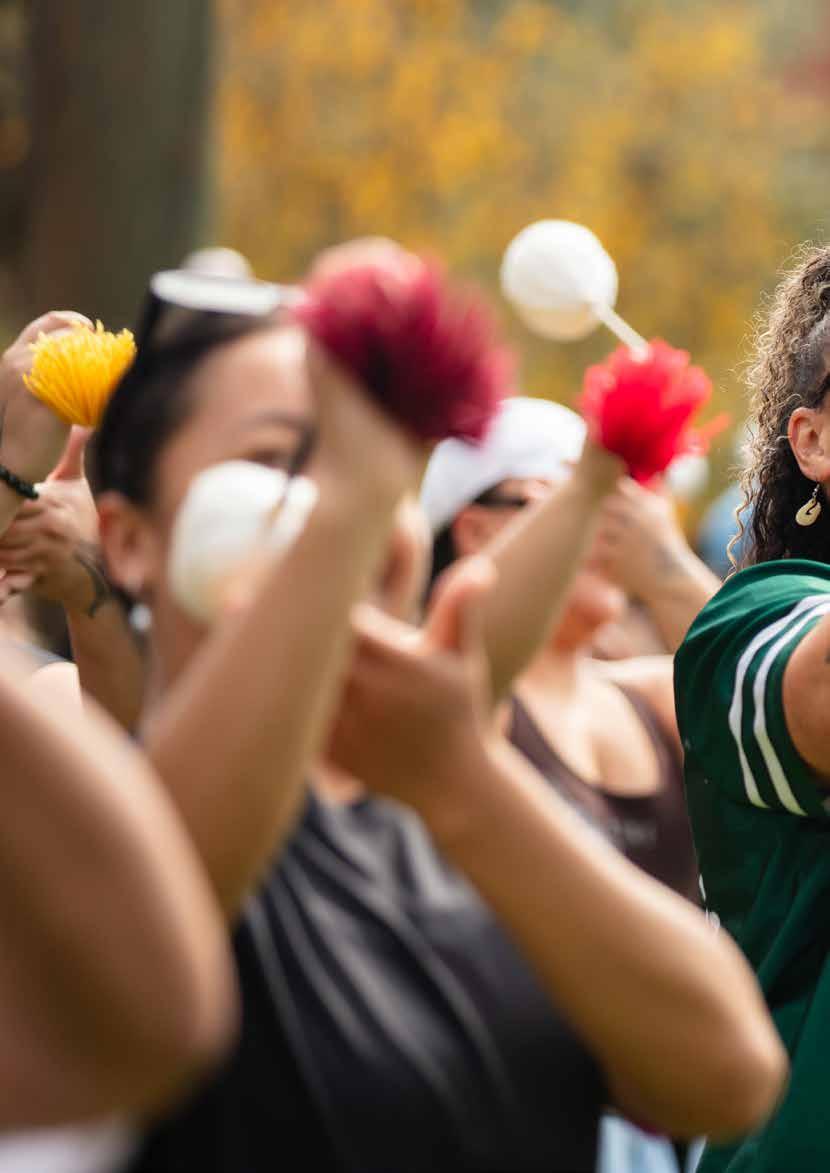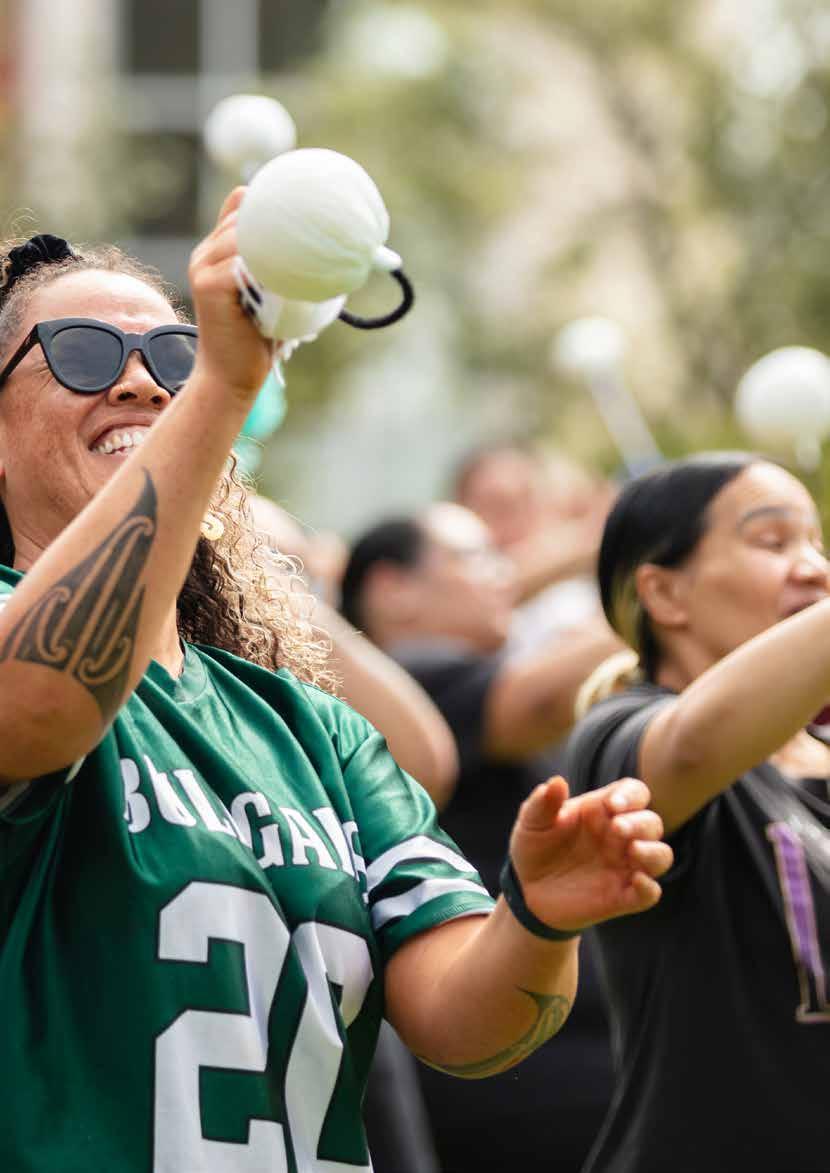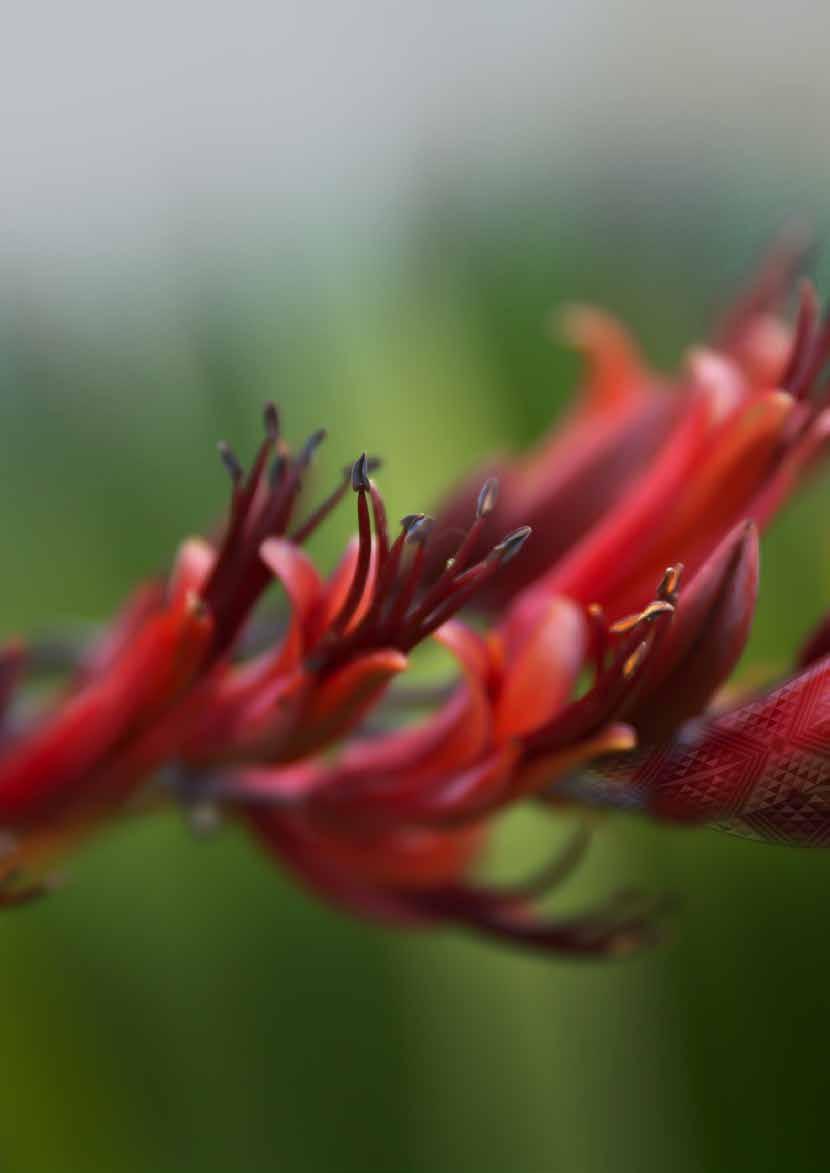
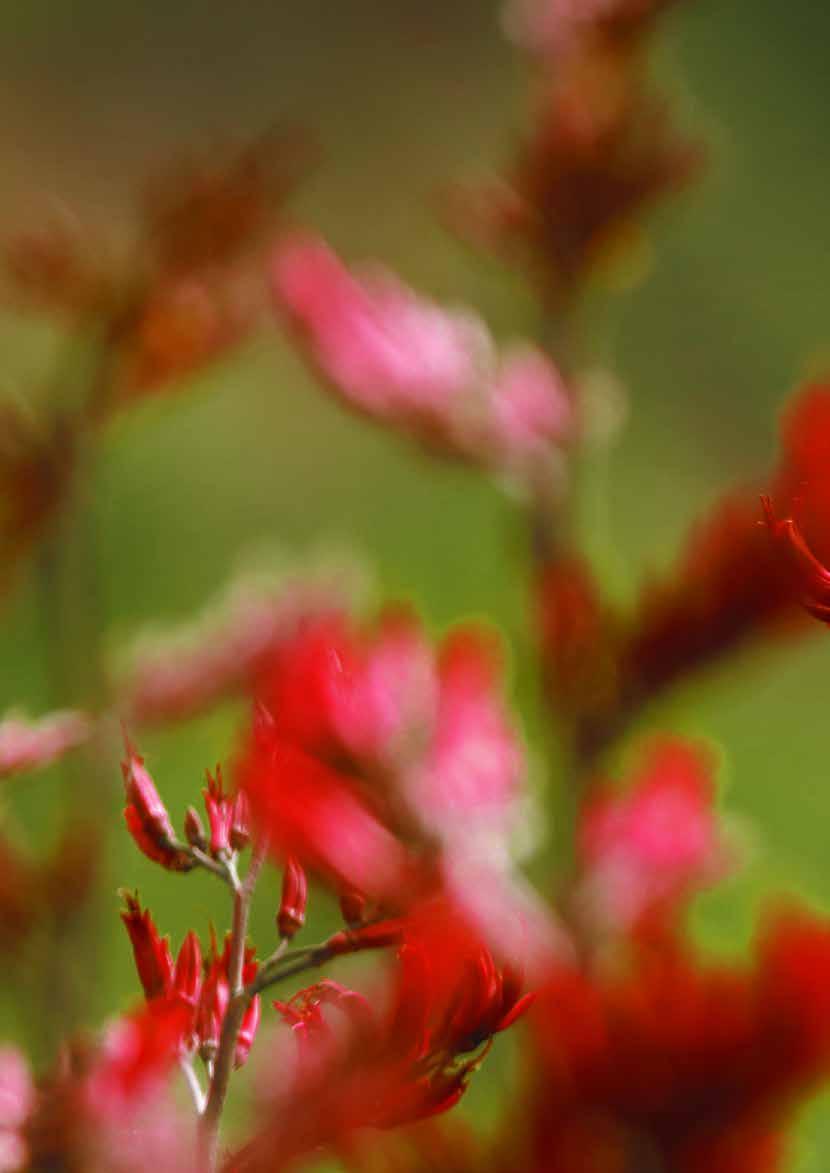
Tūngia te uruuru kia tupu whakaritorito te tupu o te harakeke.
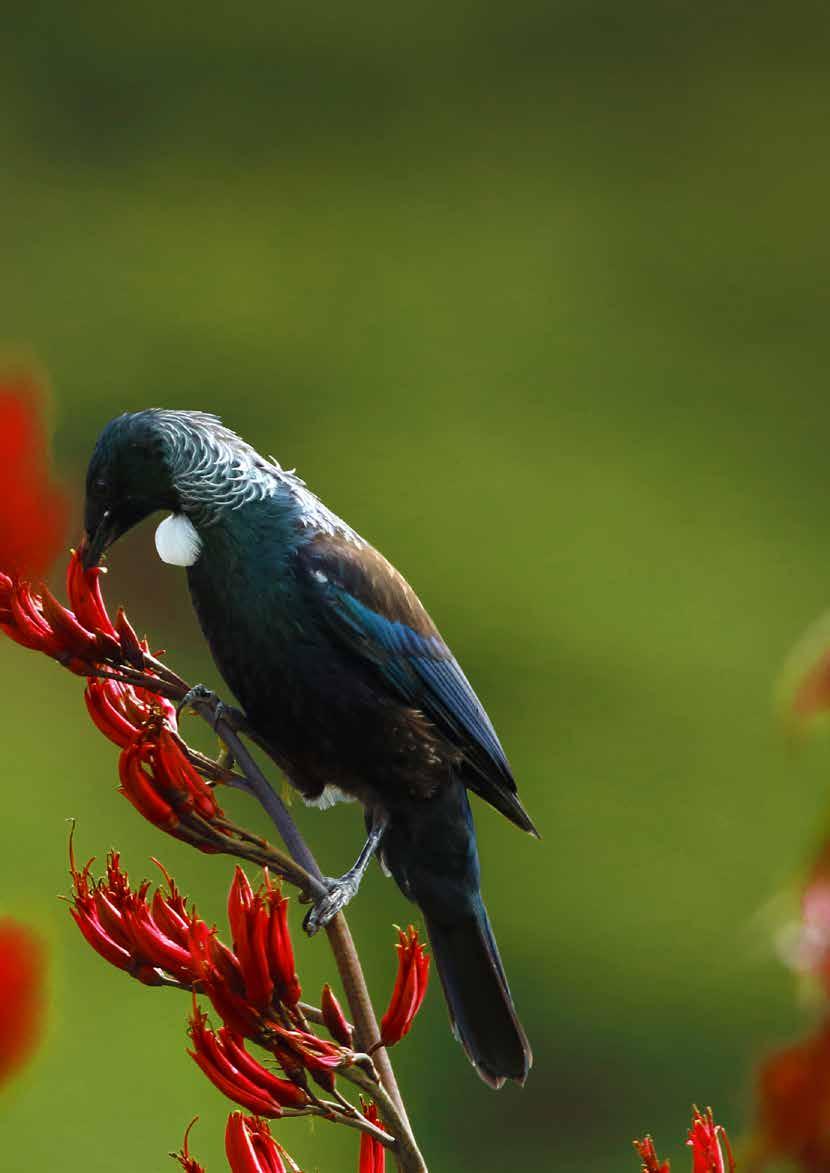
Clear away the undergrowth so the new shoots of the harakeke can spring up.
NGĀ UARA
Tika | Pono | Aroha
Manaakitanga To respect and care



Tūngia te uruuru kia tupu whakaritorito te tupu o te harakeke.

Clear away the undergrowth so the new shoots of the harakeke can spring up.
Tika | Pono | Aroha
Manaakitanga To respect and care
Kaitiakitanga To protect and support

Whanaungatanga
To value all relationships and kinship connections
Pūmautanga
To commit to excellence and continuous improvement
Tumu Whakaara
To inspire and lead through example
Rukuhia te mātauranga ki tōna hōhonutanga me tōna whānuitanga. Whakakiia ngā kete ā ngā uri o Awanuiārangi me te iwi Māori whānui ki ngā taonga tuku iho, ki te hōhonutanga me te whānuitanga o te mātauranga kia tū tangata ai rātou i ngā rā e tū mai nei.
Pursue knowledge to the greatest depths and its broadest horizons. To empower the descendants of Awanuiārangi and all Māori to claim and develop their cultural heritage and to broaden and enhance their knowledge base so as to be able to face with confidence and dignity the challenges of the future.
Ū tonu mātou ki te whai ki te rapu i te hōhonutanga o te mātauranga kākanorua o Aotearoa, kia tāea ai te kī, ko wai āno tātou, me te mōhio ko wai tātou, kia mōhio ai nō hea tātou, me pēhea hoki tātou e anga whakamua. Parau ana tēnei ara whainga, hei whakapūmau āno i te tino rangatiratanga, hei taketake ai te ihomatua Māori me ōna tikanga kia ōrite ai te matū ki ngā mātauranga kē. Koia rā ka tū pakari ai, tū kotahi ai hoki me ngā iwi o te ao tūroa. Koia nei te ia o te moemoeā me ngā tūmanako o Te Whare Wānanga o Awanuiārangi.
We commit ourselves to explore and define the depths of knowledge in Aotearoa, to enable us to re-enrich ourselves, to know who we are, to know where we came from and to claim our place in the future. We take this journey of discovery, of reclamation of sovereignty, establishing the equality of Māori intellectual tradition alongside the knowledge base of others. Thus, we can stand proudly together with all people of the world. This is in part the dream and vision of Te Whare Wānanga o Awanuiārangi.
Tika | Pono | Aroha
He uarā tautuhi ō tō mātau whare wānanga (Ngā Uara) kua whakaūtia ki roto i ngā taiao tautoko, whakaako me te ako o Te Whare Wānanga o Awanuiārangi. Ka whakatōngia e Ngā uara te wairua whirinaki o tētahi ki tētahi, tae atu ki te hapori.
Tika | Pono | Aroha
Our organisation has defined values (Ngā Uara) which we embed in the support, teaching and learning environments of Te Whare Wānanga o Awanuiārangi. Ngā Uara imbue a responsibility of duty towards each other and the wider community.
Hāpaihia te mana o te akonga, te manuhiri, te hāpori, tētahi ki tētahi
To respect and care
Ko taku kāinga ko taku wānanga, ko taku wānanga ko taku kāinga
To protect and support
E rere e te kāhu kōrako, hei waerea i te ara o te kawau
To inspire and lead through example
Miria te ara whakawhanaunga o te akonga, o te hāpori tētahi ki tētahi
To value all relationships and kinship connections
He pakau ringa kohatu, he tohu kia ita, kia u, kia mau
To commit to excellence and continuous improvement



Taupori Ākonga Student Population
Ākonga Māori
Māori Students
5,911
Pakeke o Ngā Ākonga 40+ Tau Student Age 40+ Years
4,832
Ākonga Ira Wāhine Female Students
44%
% o ngā ākonga i pūrongo ake i te pikinga o te mārama me te manawanui ki te whakauru atu ki Te Ao Māori
% of students who report an increased understanding and confidence in engaging with Te Ao Māori
68%
97%
2,515

Tapeke EFTS
Total Equivalent Full-time Student
$4.7M Pūtea Rangahau
Research Revenue
2,500 Ngā Ihuputa Katoa
Total Graduates
2,140
Te Maha o ngā Ākonga kei ngā Akoranga Reo me te Tikanga
Number of Students enrolled in Te Reo or Tikanga courses
% o ngā ākonga i pūrongo ake i ngā hu pai i puta ki ō rātou whānau, hapū, iwi me ngā hapori i ngā pūkenga me te mātauranga i ākona
% of students who report that the skills and knowledge gained through study are making a positive difference to their whānau, hapū, iwi and communities 98%

Ahakoa papā te whatitiri, hikohiko te uira ka haere tonu ngā mahi a Te Whare Wānanga o Awanuiārangi. He tau kua hipa, he tau ka ara mai. Ki a koutou e pānui nei i tēnei pūrongo tēnā koutou, tēnā koutou. He mihi maioha ki a koutou mō tēnei tau me ōna āhuatanga. Ia tau he tini tāngata ka ngaro ki te pō. Kua tangihia ngā mate o Te Whare Wānanga o Awanuiārangi, i runga i ngā marae o te waka me ko atu. Nō reira moe mai koutou ngā kanohi kua kore e kitea i waenganui i ngā whānau o Awanuiārangi, huri noa te motu, tae rawa atu ki ngā kaiako me ngā kaitautoko i te kaupapa a Awanuiārangi i whenua kē. Kāre rawa he mutunga o ngā toronga o te Ringa Kaha o Aituā . Nā te mea he whānui ngā mahi a Awanuiārangi ka haere tahi te ora me te mate ki ngā whenua kua tū mai
Te Whare o Awanuiārangi ki te ako i ngā tauira e aro mai ana. Nō reira e ngā mate haere koutou, haere, haere oti atu.
Nā, ka hoki mai ki ngā mahi a te hunga ora. Ka mau tonu ngā kōrero mō te whatitiri me te uira. Nau mai, whakatata mai ki a Awanuiārangi me ana mahi. Anei e whai ake nei ngā kōrero mō ngā taumata i pikitia e Awanuiārangi i te tau kua hipa ā me ngā kōrero mō ngā whāinga i wawatatia engari kāore i puāwai mai. Ahakoa ngā piki me ngā heke ka mau tonu a Awanuiārangi ki tōna kaupapa, ka haere tonu ana mahi whakaoho
hinengaro, te whakawhānui me te whakahōhonu i te mōhiotanga me te māramatanga o ngā tauira ka haere mai ki raro i ngā parirau o Awanuiārangi. He whāngai i te wairua Māori ki ngā tauira tētahi kaupapa nui, ā ko tōna rongoā ko te reo Māori me ngā taonga o te ao Māori, te kapa haka, te mōteatea, te mau rākau, te karanga, te whaikōrero, ngā mahi toi, ngā mahi o te whare pora, neke atu. Whakahuihuia rātou katoa, ko te mātauranga Māori tēnei e whāia nei.
Ka whakaatu Te Mana Whakahaere o Awanuiārangi i te Pūrongo ā-Tau 2024. I tīmataria tēnei whakahaere hei Whare Wānanga, e Ngāti Awa i te 1992, otirā ka whakamihi tonu mātau i te iwi kei roto i tō mātau turepapa me te hanganga o tō mātau mana whakahaere, otirā ko te nuinga ka whakapapa ki a Ngāti Awa.
Whakapōtaetanga
Ko te whakapōtaetanga te rā hirahira rawa o te tau, ā, i whakanuia e te Wānanga tana tira nui rawa o ngā ihuputa kairangi iwi taketake i te whakapōtaetanga o te 2024 i te marama o Mei. Tata ki te 2,500 ngā tohu i whakawhiwhia, ā-tinana, ā-matangaro hoki, otirā 14 o ēnei he tohu kairangi, tae atu ki ngā tohu paetahi, ngā pōkairua maha me ngā hia rau tiwhikete. Ka noho a Awanuiārangi hei whakaaturanga o te tikanga o te pupuri me te whakatītike i te mātauranga taketake, moroki hoki, ka toro rā anō ki ngā rautau i mua o te tāmitanga. Mā roto i ngā ringa me ngā hinengaro tokomaha i āwhina ki te hoahoa i tēnei Wānanga i te pahemotanga o te 30 tau, kua nanao atu mātau ki te āheinga me te raukaha o aua mahi tuku iho rā ki te whakarite i te aronga o ā mātau tauira ki ngā kaupapa rangahau iwi taketake. Ko tētahi o ngā tohu i whakawhiwhia ko te Tohu Distinguished Fellowship in Education ki tō mātau mema mana whakahaere o mua, kaitohutohu mauroa hoki a Andrienne von Tunzelmann, mō āna tāpaetanga hirahira ki te whakanaketanga ā-hapori, te mana whakahaere me te mātauranga.
2,500
Te Mana Whakahaere o Awanuiārangi, the Council of Te Whare Wānanga o Awanuiārangi presents the 2024 Annual Report. As a House of Higher Learning founded by Ngāti Awa in 1992, we continue to acknowledge the iwi in our constitution and by the composition of our governance board, the majority of whom are Ngāti Awa.
Graduation is the highlight of the academic year and the Wānanga celebrated its largest cohort of indigenous doctoral graduates at the 2024 ceremony in May. We conferred 2,500 tohu (qualifications) in person and in absentia, with 14 of these at the doctoral level, along with numerous degrees and diplomas and hundreds of certificates. Awanuiārangi represents a tradition of maintaining and enhancing indigenous and contemporary knowledge that stretches back beyond the centuries before colonisation. Through the many hands and minds that have helped shape this Wānanga over more than three decades, we have drawn on the capability and capacity of those traditions to enable our tauira to focus on indigenous areas of study. Among the qualifications and awards conferred was a Distinguished Fellowship in Education awarded to our former council member and long standing adviser, Adrienne von Tunzelmann, for her exemplary contributions to community development, governance and education.
Ngā Hononga
E kore e taea te kaupare i te hirahira o te tiaki i ngā hononga, otirā kua whakapakaritia e Awanuiārangi, kua whakatipuria hoki āna hononga ā-waho ki ngā iwi o Mataatua, me ngā iwi i waho o te rohe. He pakari tonu ngā hononga ki Te Tau Ihu o Ngā Wānanga, ngā tari kaunihera me ngā tari kāwanatanga, tae atu ki ō mātau hoa rangapū, e whai nei ki te whakahāngai i ō mātau whāinga hei tautoko i ngā wawata o ō mātau hapori. I tēnei horopaki, he 21 ā mātau Tauākī Whakaaetanga. Kei te whiriwhiri mātau i ngā kōrero ki ngā Iwi o Tulalip i Amerika ki te kawe i tā mātau Tohu Paetahi Ako, atu i te 2025, me te pakihi o TupuOra, ki te kawe ngātahi i tā mātau hōtaka o Te Pōkaitahi Tikanga.
I te Hepetema 2024, nō mātau te whiwhi i te hautū i te huiā-tau a Te Hunga Rōia Māori, i te taha o Te Rūnanga o Ngāti Awa. he hui ā-tau tēnei o ngā tiati, ngā rōia me ngā ākonga ture Māori o te Motu. E hia rau ngā tāngata i taetae mai ki te whakarongo ki ngā wānanga, ngā whakangungu me ngā mahi mō te roanga o te wānanga. Ko te 2024 te tau tuatahi o ngā tauira o te Pōkairua Tautara o Te Pourewa Tikanga me te Ture.
The importance of maintaining relationships can never be under-estimated and Awanuiārangi has continued to strengthen and cultivate its external links to the iwi of Mataatua and the tribal communities beyond our rohe. We have also maintained positive working relationships with Te Tau Ihu o Ngā Wānanga, central and local government agencies and our external partners, seeking opportunities to align objectives in support of the aspirations of our communities. In this context, we have 21 active Memoranda of Understanding (MOU). We are also finalising discussions with the Tulalip Tribes in the United States to deliver our Bachelor of Education from 2025, as well as TupuOra Education and Development Limited for shared delivery of our Te Pōkaitahi Tikanga programme.
In September 2024, we had the privilege of hosting Te Hunga Rōia Māori hui-a-tau, in concert with Te Rūnanga o Ngāti Awa. This is an annual conference of Māori judges, lawyers and law students from across the Motu. Several hundred attendees engaged in a range of seminars, training sessions and related activities for the duration of the weekend wānanga. 2024 was also the first year intake of our Te Pourewa Tikanga me te Ture postgraduate diploma.
Ngā Mahi Whakahaere
He wero nui tonu te tauira tuku pūtea a te rāngai mātātoru, inakoa rā mō ngā Wānanga, otirā nā tērā i tarepa ngā pūtea i tēnei tau mā te $0.47 miriona, otirā i tērā tau he tuhene o te $0.08 miriona. Engari ahakoa he tarepa, nā te pai o ngā whakahaere, i raro tonu tēnei i te tarepa o te matapae mahere pūtea mō te tau. Kei te piki tonu ngā whakaurunga tauira i ia tau, otirā he 2,515 ngā EFTS i te 2024, tauritetia ki te 2,413 i te 2023. Kei te pakari tonu tā mātau tauākī tūnga pūtea, me te $93.20 miriona ngā rawa katoa (2023: $93.87 miriona) me te $84.08 miriona te tūtanga more (2023: $84.55 miriona).
The tertiary sector funding model remains a challenge, especially for Wānanga, which has resulted in us delivering a deficit of $0.47 million versus a prior year surplus of $0.08 million. However, although a deficit, careful management ensured that this was under the forecast budget deficit. Enrolments have continued to increase year on year with 2,515 EFTS recruited in 2024, compared to 2,413 in 2023. Our statement of financial position remains strong with $93.20 million in total assets (2023: $93.87 million) and $84.08 million in net equity (2023: $84.55 million).
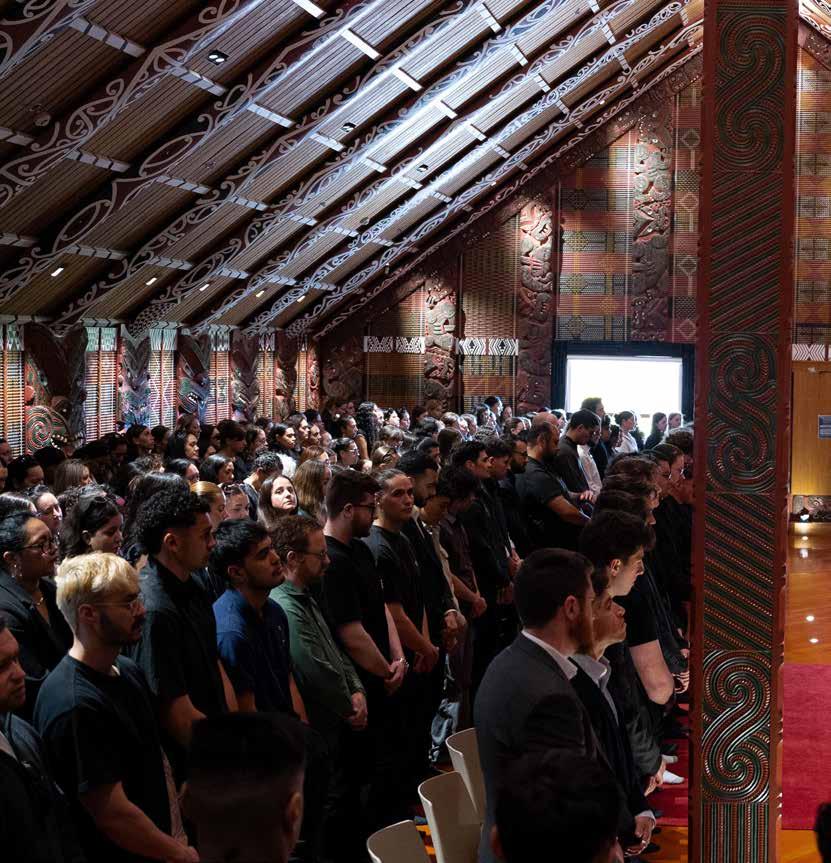
2,515 $93.20M
Total Equivalent Full-time Student
Miriona o ngā rawa katoa
Million in total assets
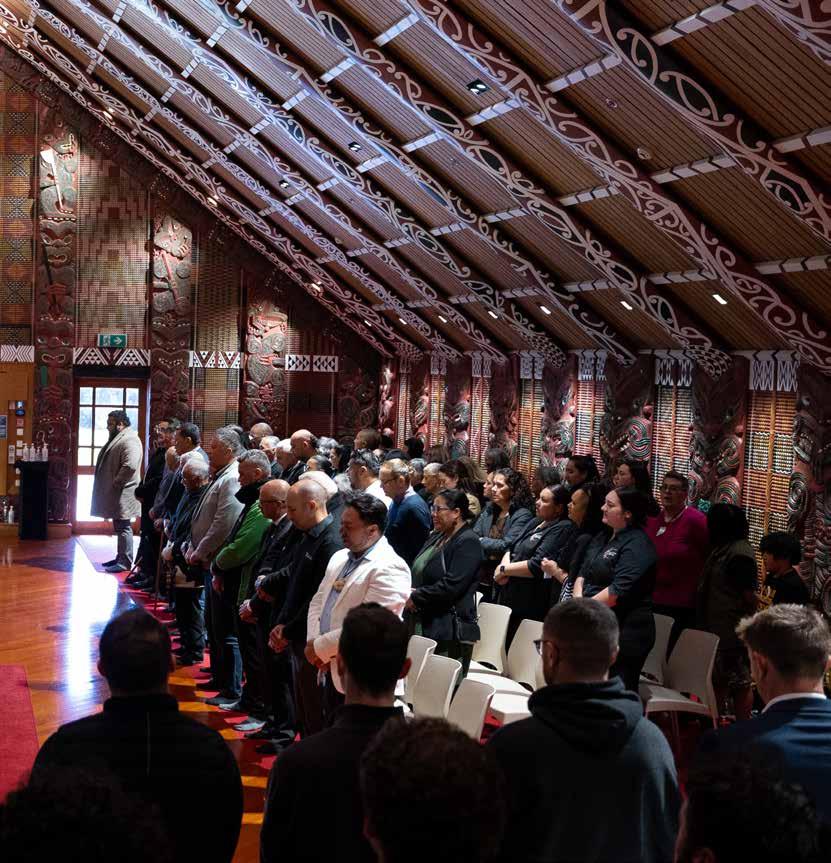
Mana Whakahaere
E whakanui ana mātau i ngā mahi me te pūmau o te Kaunihera. Ka mihi hoki ki ngā mema o Te Toi Apārangi o Te Whare Wānanga o Awanuiārangi, ka tuku kōrero ārahi ki te Mana Whakahaere me te Tumu Whakarae e pā ana ki te mātauranga Māori, te reo, te tikanga me te kawa me ētahi atu take e pā ana ki a Awanuiārangi.
I whakanuia hoki a Tā Hirini Mead i tēnei tau ki te Tohu o Te Whare Pūkenga, otirā he whakanui i tētahi rangatira ora puta noa i Aotearoa kua whakaatu i te manawa titikaha ki te ao Māori. I hua ake tana kopounga i te Ākuhata 2023 mai i Te Rūnanga o Ngāti Awa, ā, ka tautokona e te National Iwi Chairs Forum i te Nōema 2023, i mua o te whakawhiwhinga i te 16 o Pēpuere 2024 i te marae o Te Mānuka Tūtahi.
I te 2024, i whakanuia te Tumuaki-Tuarua o te Mana Whakahaere, a Ahorangi Linda SMith ki te tohu IUPsyS 2024 Archbishop Desmond Tutu Achievement Against the Odds Quadrennial Award. He tohu mātai hinengaro tiketike tēnei i te ao pūtaiao mātai hinengaro, otirā nō nga iwi 90 ngā mema o tēnei tira. Ka whakawhiwhia te Archbishop Desmond Tutu Achievement Against the Odds Award i ia whā tau ki te International Congress of Psychology (ICP).
Ngā Mihi
Ka noho tonu ngā huringa ture, te pikinga o te utu noho me ngā whakahoutanga ki te rāngai hei wero nui i te kokenga ki te 2025, nā reira ko tā te tirohanga rautaki kumanu e te mana whakahaere me te tira kaiārahi matua, te whanaketanga haere o ngā hōtaka e urupare ana ki ō tātau hapori me te pakari o ngā hononga matua he āwhina i a mātau kia tūturu ake te whakatere haere i te anamata. Me mihi ka tika ki a Ngāti Awa, ki ngā iwi o Mataatua, ngā tauira me ō rātou whānau, Te Amorangi Mātauranga Matua, Te Mana Tohu Mātauranga, Te Tāhuhu o te Mātauranga, me Te Tau Ihu o Ngā Wānanga mō te tautoko moroki i tēnei whare wānanga. Hei whakamutunga, ka whakanui mātau i te manawa tītī, te pūmau me te matangareka o ā mātau kaimahi, i arahina e te Tumu Whakarae e Ahorangi Wiremu Doherty me tana tira whakahaere. Ka whakarato tonu rātau i te hautūtanga, te tohungatanga, te ārahitanga me te tautoko i ā mātau tauira me ō rātau hapori, ināianei, ā, i ngā rā e tū mai nei.
We acknowledge the contributions and commitment of the Council. We also acknowledge the members of Te Toi Apārangi o Te Whare Wānanga o Awanuiārangi, who provide guidance to the Council and to the Chief Executive regarding mātauranga Māori, te reo, tikanga, kawa and any other matters that concern Awanuiārangi.
Tā Hirini Mead was honoured this year with the Te Whare Pukenga Award, which acknowledges living rangatira throughout Aotearoa who have demonstrated exceptional dedication and contributions to te ao Māori. His nomination came in August 2023 from Te Rūnanga o Ngāti Awa and was further endorsed by the National Iwi Chairs Forum in November 2023, before being presented on 16 February 2024 at Te Mānuka Tūtahi Marae.
During 2024, Deputy Chair of the Council, Distinguished Professor Linda Smith was honoured with the IUPsyS 2024 Archbishop Desmond Tutu Achievement Against the Odds Quadrennial Award. These awards are the pre-eminent psychology awards in global psychological science and represent psychologists in more than 90 member countries. The Archbishop Desmond Tutu Achievement Against the Odds Award is conferred every four years at the International Congress of Psychology (ICP).
While policy changes, cost of living increases and sector reforms will remain challenges through 2025, the careful strategic oversight of our core business by governance and management, the ongoing development of programmes responsive to our communities and the strength of our key relationships will help us navigate the future with more certainty. Thanks and acknowledgement must be given to Ngāti Awa, our iwi of Mataatua, our tauira and their whānau, the Tertiary Education Commission, the New Zealand Qualifications Authority, the Ministry of Education, and Te Tau Ihu o Ngā Wānanga for their ongoing support of this institution. Finally, we acknowledge the tireless commitment, dedication and enthusiasm of our staff, led by the Chief Executive, Professor Wiremu Doherty and his management team. They continue to provide leadership, expertise, guidance and support for our tauira and their communities, now and in the days ahead.
Te Hōnore Kaiwhakawā Mātāmua L R Harvey
TUMUAKI
PhD (AUT), D.MD (Hon. Causa), MComLaw, LLB (Tāmaki Makaurau)
Ngāti Awa, Rongowhakaata, Te Aitanga a Māhaki, Te Whānau a Apanui, Ngāti Kahungunu ki Te Wairoa
PhD (AUT), D.MD (Hon. Causa), MComLaw, LLB (Auckland) Ngāti Awa, Rongowhakaata, Te Aitanga a Māhaki, Te Whānau-ā-Apanui, Ngāti Kahungunu ki Te Wairoa

Rukuhia te Mātauranga ki tōna hōhonutanga me tōna whānuitanga.
Pursue knowledge to the greatest depths and its broadest horizons.
I roto i te Ture Mātauranga e tautuhia ana a Te Whare Wānanga o Awanuiārangi hei Wānanga, ā, he pērā hoki te rēhitatanga mai anō i te 1997. Ko te āhuatanga o te Wānanga, ko te ako me te rangahau e pupuri ana, e whakatipu ana, e tuari ana hoki i te mātauranga, e whakawhanake ana i te motuhaketanga, me te āwhina i te whakatinanatanga o te mātauranga o ngā āhuatanga Māori i runga anō i te tikanga Māori.
E mana whakahaeretia ana Te Whare Wānanga o Awanuiārangi e tētahi Kaunihera, me ngā mātauranga, ngā pūkenga me ngā wheako ki te mātua whakarite i te kawenga ako kounga rawa i runga anō i tā mātau mahi me ngā haepapa motuhake hei Wānanga. E whakanui ana hoki te mematanga o tō mātau Kaunihera i te hononga rongomaiwhiti, mauroa hoki ki a Ngāti Awa me ngā iwi o Mataatua. Ko ngā mema o runga, nō Te Rūnanga o Ngāti Awa, he mema nā te Minita i tohu, i tonoa rānei e te Mana Whakahaere, otirā kāore hoki i rerekē ngā mema mai i te 2022.
Ngā Komiti a te Mana Whakahaere
Rima ngā komiti iti a te Mana Whakahaere hei aroturuki, hei āwhina hoki i te whakatinanatanga o āna kawenga:
• Poari Kounga Ako
• Komiti Hauora me te Haumaru
• Komiti Arotake Mōrearea Ahumoni
• Komiti Rapu me te Utu Kaimahi
• Komiti Haumitanga
Te Toi Apārangi o Te Whare Wānanga o Awanuiārangi
Ko te kaupapa o tēnei rōpū tohutohu he tuku kupu āki ki te Kaunihera me te Tumu Whakarae e pā ana ki te mātauranga Māori, te reo, ngā tikanga me te kawa, ā, me ētahi atu take e pā ana ki Te Whare Wānanga o Awanuiārangi.
He matatau ngā mema o Te Toi Apārangi ki te reo, he mātanga o ngā āhuatanga Māori i runga anō i ngā tikanga Māori, ā, kua roa te hononga ki ngā iwi me te Kaunihera. E mōhiotia ana ngā tokorua nei hei mātanga reo, mātanga tikanga otirā he tohunga tonu nā te iwi me te pūmau anō ki te mātauranga Māori.

Te Whare Wānanga o Awanuiārangi (Awanuiārangi) is a wānanga as defined in the Education and Training Act 2020 and has been registered as such since 1997. A wānanga is characterised by teaching and research that maintains, advances, and disseminates knowledge, develops intellectual independence, and assists the application of knowledge regarding āhuatanga Māori (Māori tradition) according to tikanga Māori (Māori custom).
Te Whare Wānanga o Awanuiārangi is governed by a council with the knowledge, skills, and expertise to ensure we deliver quality educational provisions in accordance with our distinct role and responsibilities as a wānanga. Membership of our Council also recognises the special and enduring relationship with Ngāti Awa and Mataatua iwi. Council comprises Te Rūnanga o Ngāti Awa, Ministerial and Co-opted Appointments, and membership remains unchanged since 2022.
Council has five sub-committees to monitor and assist in the fulfillment of their responsibilities:
• Academic Committee
• Health and Safety Committee
• Finance Audit and Risk Committee
• Appointments and Remuneration Committee
• Investment Committee
Te Toi Apārangi o Te Whare Wānanga o Awanuiārangi
The purpose of this advisory rōpū is to provide advice to the Council and to the Chief Executive regarding mātauranga Māori, te reo, tikanga, kawa and any other matters that concern Awanuiārangi.
Members of Te Toi Apārangi are fluent in te reo Māori, experts in āhuatanga Māori (Māori tradition) according to tikanga Māori (Māori custom) and have maintained a longstanding relationship with the iwi and with the Council. Both members have long been acknowledged as tribal experts by the iwi and for their tireless commitment and dedication to mātauranga Māori.

Distinguished Professor, Sir Hirini Moko
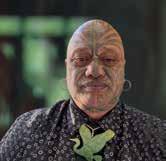
Dr Pouroto Ngaropo

Te Mana Whakahaere o
Te Whare Wānanga o Awanuiārangi Council
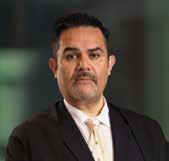
Te Hōnore Kaiwhakawā Mātāmua
Tumuaki Chairperson Te Māngai o Ngāti Awa

Takuta Brian Tunui

Charles Tawhiao

Rauru Kirikiri

Tania Rangiheuea
Representative Ngāti Awa, Tūhourangi, Te Arawa

Tuihana Pook Nā te Minita i Tohu Ministerial Appointment Te Whānau-a-Apanui

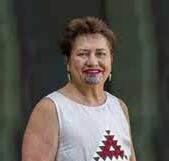
Ahorangi Ahurei
Linda Tuhiwai Smith
Tumuaki-Tuarua

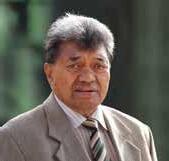



Nōku te whiwhi ki te whakaatu i te Pūrongo ā-Tau 2024 a Te Whare Wānanga o Awanuiārangi. Ko tō mātou tūruapō me te whāinga mātua he whakatairanga, he whakatipu me te whakaū i te mātauranga me te reo Māori mā te arotahi ki te tikanga Māori.
He aronga hou te tau 2024 ki te whakatutuki i te popono i roto i ngā hapori matea nui. Kua roa mātou e tuku ana i ō mātau hōtaka ako i ngā rohe, engari ināianei kua nui ake tō mātou kitea, otirā he mea takune tonu. He rautaki tēnei ki te whakatau i ngā tautika-kore o te āheinga ki te mātauranga mātātoru mā ō mātou tauira, ō rātou whānau me ngā hapori. E tino whakahī ana ahau i te tuwheratanga o tō mātou pokapū ki Te Wairoa, otirā e tautoko ana mātou i ngā ākonga nēhi kia whāia te mātauranga i roto i ō rātau ake rohe. Kei te whakaako hoki mātou ki te Tohu Paetahi Ako ki te tira tauira tuatahi i Kaikohe, me te manako anō ki te whakaako i Te Ōhanga Mataora ki Kaitaia i te 2025.
Kei roto hoki i tō mātau aronga ki te āheinga mātauranga, ko te tūhono i te hunga kāore pea i angitu i roto i te pūnaha mātauranga auraki. Kei te mōhio mātau, he takimano ngā ākonga, ko te nuinga he Māori, i mūhoretia e tō tātau pūnaha mātauranga whakature i ia tau. Mā te tuku i tētahi taiao tauawhi i te mātauranga o te ao Māori i roto i tētahi pūnaha ako ka ahu i te kaupae 0 ki te 10, ka taea te hanga huarahi mā ngā akonga i ngā wāhi me ngā wā katoa e rite ana rātau.
It is a privilege to present the 2024 Annual Report for Te Whare Wānanga o Awanuiārangi. Our vision and mission are to promote, grow and sustain Māori knowledge and language through a focus on tikanga Māori practice.
2024 has seen a renewed focus on meeting demand in the communities where it is most needed. We’ve always delivered our programmes at a local level, but we are now being more visible and intentional in our presence. This is a deliberate attempt to address inequities of access to tertiary education for our tauira, their whānau and communities.
I’m particularly proud of the opening of our Wairoa centre, where we are now supporting aspiring nurses to pursue their studies within their own community. We’re also teaching our Bachelor of Education to the first cohort of tauira in Kaikohe and we expect to be delivering our Bachelor of Nursing in Kaitaia in 2025.
Our focus on access to education also includes connecting with those who may not have succeeded in the conventional education system. We know that there are many thousands of students, largely Māori, who are failed by our compulsory education system each year. By offering an environment that embraces te ao Māori knowledge within a learning system that goes from levels 0 to 10, we can build a pathway for those students wherever and whenever they are ready. We’re committed to continuing to meet that demand.
Ngā mihi
Nōku te māringanui ki te hautūtanga me te tautoko o tō tātau mana whakahaere, te tira whakahaere matua, ngā kaimahi, ngā tauira me ō rātau whānau. He tau whakapātaritari tēnei mō te Māori otirā i whakatōreatia ā mātau tāpaenga o te reo me te mātauranga Māori. Hei wānanga, hei hapori hoki, ka hiki tōnu mātou i te hirahira o tēnei tūmomo mātauranga mō ngā iwi me ētahi atu hapori puta noa i Aotearoa, me te ao hoki.
Te kokenga ki ngā putanga ine matua
E kitea tonu ana te pakari o ngā mahi ki te tauritea ki ā mātāu ine matua, otirā ka whakaatu tēnei i te whaihua o ā mātāu hōtaka ki te whakatutuki i ngā matea me ngā wawata o ngā tauira me ō rātāu hapori, me te tautoko anō i te whanaketanga ahurea me te tāpaetanga ā-ōhanga. He 98% ā mātāu tauira i uiuitia i pūrongo i te painga i puta i ngā pūkenga me te mātauranga mā ō rātau whānau, hapū, iwi me ngā hapori, otirā ka pahika tēnei i tō mātau whāinga, me te hua o te tau 2023.
I remain grateful for the continued leadership and support of our governance, the senior management team, our staff, our tauira and their whanau. 2024 has been a challenging year for Māori as our contributions through te reo and mātauranga Māori have been challenged. As a wānanga and community, we continue to elevate the importance of this knowledge base for iwi and other communities throughout Aotearoa and internationally.
We continue to see strong performance against most of our key measures, demonstrating that our programmes are effectively meeting the needs and aspirations of tauira and their communities, while also supporting cultural development and economic contribution. 98% of surveyed tauira report that the skills and knowledge gained through study are making a positive difference to their whānau, hapū, iwi and communities, which exceeds both our target and our 2023 result.
98% of tauira report that the skills and knowledge gained through study are making a positive difference to their whānau, hapū, iwi and communities, which exceeds both our target and our 2023 result.
He 71% te maha o ngā tauira i eke panuku i tētahi tohu i ngā Kaupae 1 ki te 4, he pikinga i te 2023, ā, he 1% i runga ake o te whāinga o te 2024. Ka whakaata tēnei hua i te manawa ū o ā mātau tauira me tō rātau raungāwari ki ngā akoranga kawenga hanumi. He mea nui te whakamihi ki ngā wero i mua i a rātau, tae atu ki te pōharatanga me ngā uaua ā-hangarau. Kei te kimi tonu mātau i ngā huarahi tautoko i ō rātou huarahi ako. I tīmatahia e mātau ētahi karahipi hauora hou i tēnei tau i te taha o Te Aka Whai Ora, ā, ka pūmau tonu te hono ki ngā iwi tūtata mā roto i te karahipi o Ngāti Awa. He nui ngā kokenga ki te hiki i te whai wāhi ki ngā tohu paerunga me te whakarākei ake i te āheinga rangahau i roto i ngā hapori. I piki ngā EFTS ā-ao mā te 39% ki te 12.18 EFTS i te 2024, e whakaatu ana i ngā mahi rautaki ki te āwhina i ngā hapori iwi taketake o te ao kia āhei mai ki ā mātau hōtaka ako. I eke te whiwhinga moni rangahau ki te $4.7m otirā i tino hipa i te hua o te 2023, me te whāinga o te $600k mō te 2024. Ngā hōtaka ako hou me ngā tikanga kawenga hou
He mahere kawenga hōtaka moroki tā mātau, e mātua whakaritea ai te tutukitanga o ngā hiahia o ngā tauira me ō rātau hapori. Ka eke ki te 34 ngā hōtaka ka whakanaketia i te 2024-2026.
71% of tauira successfully completed their qualifications at Levels 1 to 4, an improvement from 2023 and 1% above our 2024 target. This result reflects the dedication of our tauira and their adaptability to mixed-mode delivery. It is also important to acknowledge the challenges they face, including financial hardship and technology constraints. We continue to look for ways to support their learning journey. We launched a series of new health scholarships this year in partnership with Te Aka Whai Ora, and continue to show our commitment to local iwi through the Ngāti Awa scholarship.
We’ve made significant progress in increasing postgraduate scholarship participation and enhancing research capability within communities. International student EFTS increased by 39% to 12.18 EFTS in 2024, demonstrating our strategic efforts to help international indigenous communities access our study programmes. External research income reached an impressive $4.7m, exceeding our 2023 result and our $600k target for 2024.
We have a continuous programme development plan to ensure that we continue to meet the needs of tauira and their communities. There are a total of 34 programme developments scheduled for 2024 – 2026.
Ko ētahi o ngā whanaketanga o te 2024:
• Te tau tuatahi o te kawenga o Te Pourewa Tikanga Māori me te Ture, hei wāhanga o ngā whakahaere ā-ture
• Te tau tuatahi o te kawenga o tā mātou hōtaka Paetahi Ako hou, i tohua ki ngā tohutoa e rua i Te Mana Tohu Mātauranga i te hiku o te 2023
• Te whanaketanga hou o Te Pōkaitahi Reo, Kaupae 1-6, kia hāngai ki te Arotake Tohu a NZQA
• Te Whanaketanga o te Pōkairua Waihanga Kaupapa Kōrero (Whakapāoho) Kaupae 4 ka rewa hei te 2025.
I tīmataria hoki tētahi hononga ki a Tauhara North No2 Trust ki te kawe i tā mātou hōtaka o Ngā Mana Whakairo a Toi (BMPA) ki Te Pā Tū i Rotorua. Ka whakaatu tēnei i te raungāwari o ngā kawenga o ā mātau hōtaka, hei āwhina i ngā pākihi ki te awhi i ā rātau kaimahi, me te taha ahurea me te toi haka, i a rātau e whakatutuki ana i ngā tohu mātauranga.
Hei whakatauaro i te kōkiri a te Kāwanatanga ki te wewete i ngā anga me ngā rauemi i whakatūria hei whakatau i te mana ōrite, te āheinga me te whai wāhi a te Māori, e koke tonu ana mātau ki te whakaatu i te hirahira o te whanake i te mātauranga i roto i tō mātau whakahaere. I whakaurua e mātau tētahi hōtaka akoranga ngaio hou hei tautoko, hei whakamana hoki i ā mātau kaimahi matatau ki te reo Māori, me te tītike ake i tō mātau hautūtanga i roto i te mātauranga o te ao Māori.
2024 developments include:
• The first year of delivery of Pourewa Tikanga Māori me te Ture (Post Graduate Diploma in Tikanga and Law), focusing on tikanga as part of legal practice
• First year of delivery of our new Bachelor of Education programme, which received two commendations from the New Zealand Qualifications Authority at the end of 2023
• Redevelopment of Te Pokoitahi Reo levels 1-6 in line with the NZQA Qualification Review
• Development of the New Zealand Diploma in Content Creation (Broadcasting) Level 5 for launch in 2025.
We also launched a partnership with Tauhara North No2 Trust to deliver our Bachelor of Māori Performing Arts (BMPA) programme at Te Pā Tū in Rotorua. This shows how flexible delivery of our programmes can help businesses to engage their staff with culture and performing arts, while working towards academic goals.
In contrast with the Government’s drive to strip structures and resources established to address equity, access and participation of Māori, we’ve continued to emphasise the importance of developing mātauranga within our organisation. We introduced a new professional development programme to support and celebrate our te reo Māori speaking staff and accentuate our leadership in te ao Māori education.
In contrast with the Government’s drive to strip structures and resources established to address equity, access and participation of Māori, we’ve continued to emphasise the importance of developing mātauranga within our organisation.
E ū ana mātau ki te poipoi i ngā hononga rangahau ao whānui whaitake, me te kōkiri i ō mātau whāinga rangahau ao whānui me te mātauranga hoki.
He hoa rangapū a Awanuiārangi i roto i te hōtaka rangahau o Abundant Intelligences, he kaupapa i tautokona e te kāwanatanga o Kānata, e whai ana ki te whakapohewa anō i te Atamai Horihori (AI) i runga kē i te mātauranga taketake. He hōnore tēnei mō mātau ki te whakahaere i tana hui ā-kanohi tuatahi i te Nōema, hei wherawhera i ētahi o ngā wero AI kei mua i ngā hapori iwi taketake huri noa i te ao.
Kei te tipu tonu tō mātau rongo ā-ao i a mātau e tuitui haere ana i ngā hononga iwi taketake o te ao, e hāngai ana ki ngā hōtaka ako paetahi me te paerunga. He MOU hou tā mātau ki a Kanu o ka ‘Āina kei te motu nui o Hawai’i, ā, kei te whiriwhiri kōrero mātau i tēnei wā ki te whakaōkawa i tō mātau hononga ki te iwi o Muckleshoot i Washington State. Ka whakarato a Kanu me Muckleshoot i ngā karahipi kairangi ki ngā tauira kua whakaurua ki ō mātau hōtaka paerunga.
We are committed to fostering meaningful international research partnerships and advancing global research and educational goals.
Awanuiārangi is a partner in the Abundant Intelligences research programme, a Canadian government-funded initiative aimed at reimagining Artificial Intelligence (AI) based on indigenous knowledge. We were honoured to host its first in person event in November to discuss some of the AI challenges facing indigenous communities around the world.
Our international profile has continued to grow as we build and foster international indigenous relationships aligned with undergraduate and postgraduate studies. We have a renewed MOU with Kanu o ka ‘Āina on the Big Island of Hawai’i, and we are currently in discussions to formalise our relationship with the Muckleshoot tribe in Washington State. Both Kanu and Muckleshoot provide doctoral scholarships to scholars enrolled in our postgraduate programmes.
Education has the power to effect great change and our intent to improve equity is more important than ever. Transformation comes from within and our work within remote communities around Aotearoa and internationally will continue to support the people who need it most.
I waitohua e mātau he MOU ki te iwi Tulalip i Amerika ki te Raki i tēnei tau, otirā ka whakaakona tā mātau Tohu Paetahi Ako i Amerika mō te wā tuatahi hei te 2025. Kei te haere tonu ngā kōrero me te Whare Wānanga o Beijing i China ki te kawe i tētahi akoranga matua ki te reo Māori.
I hoki ngā kaiako o Te Pōkaitahi Reo mō te Kura Reo tuarua ā-tau i Te Tai Koura. I tutuki nui taioreore tēnei kaupapa, ā, nā ngā kaiako rā i whai reo ai ngā tauira ki te whakatakoto i te hirahira o te āheinga ki te reo Māori mō ō tātau whānau i Ahitereiria.
Mā roto i ēnei hononga ao whānui, he mārakerake te kite i te mana me te uara o tō tātau mātauranga taketake huri noa i te ao. He tūranga nō tō te Māori hei kirirarau o te ao, i te mea ko tō tātau tekatekatanga tērā ka huaki i ngā tatau mai i Aotearoa ki te ao.
Te anga whakamua
He nui ngā wero kei mua i te Māori i ngā tū āhuatanga katoa o te oranga. He pono ko tātau te kanohi nui o ngā tatauranga pakukore o ngā rāngai kāwanatanga katoa, otirā he mea hei whakatau. Kei te whānui haere ngā manarite-kore o te Māori, e piki ai te pakukoretanga me te maunutanga i roto i ngā hapori maha. Kei te kino kē atu tēnei nā te tūnga ngākaukino a te Kāwanatanga ki Te Reo me Te Tiriti puta noa i te rāngai tūmatanui.
He mana tō te mātauranga ki te whakarauora, ā, ko tō mātou takunetanga ki te hiki i te mana ōrite he mea hirahira. Ka ahu mai tēnei mea te whakaumu i roto i te iho, ā, ka tautoko haere tonu ā mātau mahi i roto i ngā hapori tuawhenua puta noa i Aotearoa me te ao, i te hunga e tino matea nui ana.
We signed an MOU with the Tulalip people in North America this year, which will see the delivery of our Bachelor of Education degree in the United States for the first time in 2025. We’re also continuing conversations with the University of Beijing in China to deliver a major in te reo Māori.
Te Pōkaitahi Reo kaiako returned for the second annual Kura Reo in the Gold Coast. This was a resounding success and staff have provided tauira voice that outlines the importance of access to te reo Māori for our whānau based in Australia.
Through these global connections, it’s very clear that our indigenous knowledge is recognised and valued worldwide. Māori play an important role as global citizens as our indigeneity opens doors from Aotearoa to the world.
Māori are facing challenges across every facet of life. Our overrepresentation in the deprivation indices of all government sectors is a truth and must be addressed. The disparities for Māori are widening, contributing to high levels of deprivation and disengagement in many communities. The Government’s negative positioning of Te Reo and Te Tiriti across the public sector is exacerbating the situation.
Education has the power to effect great change and our intent to improve equity is more important than ever. Transformation comes from within and our work within remote communities around Aotearoa and internationally will continue to support the people who need it most.
TUMU WHAKARAE
PhD (Tāmaki Makaurau), BA (Hōnore), B. SocSc, Dip Tch (Waikato), OAMLP (Oxford)
Tūhoe (Ngāti Tāwhaki), Ngāti Awa
Professor Wiremu Doherty CHIEF EXECUTIVE OFFICER
PhD (Auckland), BA (Hons), B. SocSc, Dip Tch (Waikato), OAMLP (Oxford)
Tūhoe (Ngāti Tawhaki), Ngāti Awa
Ko tā te Tira Whakahaere Matua he mātua whakarite i te tutukitanga a Te Whare Wānanga o Awanuiārangi i ōna haepapa ā-rautaki, ā-whakahaere hoki, i te wā e tūtohu ana i ngā pūnaha akoranga ā-roto, ā-waho, ngā pūnaha rangahau me ngā pūnaha kounga hoki.
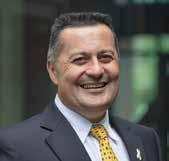
The Executive Leadership Team ensures Te Whare Wānanga o Awanuiārangi meets its strategic and operational obligations, while complying with internal and external academic, research and quality systems.

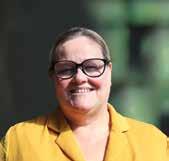


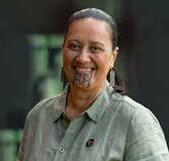
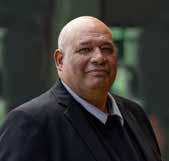
Ahorangi

Ahorangi


The Executive Leadership Team ensures Te Whare Wānanga o Awanuiārangi meets its strategic and operational obligations, while complying with internal and external academic, research and quality systems.
Te Tira Whakahaere Matua mō te 2023
Executive Leadership Team for 2023
Ko Te Rautaki tā mātau mahere rautaki ā-wānanga i whakaaetia ai e te Kaunihera i te tau 2018. E whakamārama ana Te Rautaki i tō mātau tāpaetanga motuhake hei wānanga kia angitu ai te Māori hei Māori, me te tautoko i ngā wawata o nāianei, o anamata hoki o ngā tauira me ō mātau hapori. Ka whakapiki ake i runga i ngā pakaritanga o te wānanga me te tautuhi i ngā whāinga rautaki pāhekoheko e ono ki te whakarite i te whakatinanatanga o te tūruāpō.
Ngā mahi ako
Ahurea Kairangi me te Auaha 1 2 3 4 5 6
Ngā hononga
Rangahau me te Ao Whānui
Ngā Mahi ā-Whakahaere
Ngā Rawa me ngā Tūāhanga
The Executive Leadership Team ensures Te Whare Wānanga o Awanuiārangi meets its strategic and operational obligations, while complying with internal and external academic, research and quality systems.
Te Rautaki is our institutional strategic plan ratified by Council in 2018. Te Rautaki articulates our unique contribution as a wānanga to Māori achieving educational success as Māori, and to supporting the current and future aspirations of students and the communities we serve. It builds on the existing strengths of the institution and identifies six interrelated strategic goals to ensure we realise our vision.
Teaching and Learning
Relationships
Research and International

Organisational Performance
Assets and Infrastructure
Culture of Excellence and Innovation

Arotake ā-Rautaki
The Executive Leadership Team ensures Te Whare Wānanga o Awanuiārangi meets its strategic and operational obligations, while complying with internal and external academic, research and quality systems.
Te Tira Whakahaere Matua mō te 2023
Executive Leadership Team for 2023
I āta arotake mātau ngā tutukitanga me ngā wero, i tautohu i ngā ia me ngā arawātea, me te whakahāngai i ō mātau whakaarotau ki ngā tainekeneke o te rāngai mātauranga me ō mātau hapori. I whakawhanake mātau i tētahi anga whakamua hou mā tētahi mahere rautaki hou i te 2024, hei whakatinanatanga i te 2025. Mā tēnei whakaumu, e arotahi ana mātau ki te taunaki i tō mātau whakareretanga o te mātauranga kairangi me te whakamana i te hapori, mā te tia i te waka ki te ngarurutanga me te angitutanga.
Ngā Miramiratanga Mahi
Me mihi ka tika ki te ki ngā mahi ngātahi pakari a ngā kaiwhakahaere me ngā kaimahi ki te kōkiri i ngā putanga angitu mō ā mātau tauira me te wānanga hoki hei te wā o ngā uauatanga. Ki te ahuwhānui te titiro, i pai ngā mahi puta noa i ngā putanga matua o Te Rautaki, otirā i piki ngā whakatutukitanga, ngā whai wāhitanga me ngā mahi kōkiri whakamua.
The Executive Leadership Team ensures Te Whare Wānanga o Awanuiārangi meets its strategic and operational obligations, while complying with internal and external academic, research and quality systems.
We have taken stock of our achievements and challenges, identified emerging trends and opportunities, and aligned our priorities with the shifting dynamics of the education sector and the communities we serve. We developed a revitalised direction with a new strategic plan during 2024, which we aim to introduce in 2025. Through this transition period, we are focused on sustaining our legacy of educational excellence and community empowerment, steering toward a future of continued growth and success.
We recognise the collective efforts of management and staff in driving the achievement of successful outcomes for our tauira and our organisation during such challenging times. Overall, the organisation has performed well across the main outcomes of Te Rautaki, with improvements in achievements, engagements, and advancement activities.
Kitea ai te whānuitanga o ngā hua i te wāhanga o Te Pūrongo o ngā Tutukinga Ratonga.
A full set of results can be found in the Statement of Service Performance section.

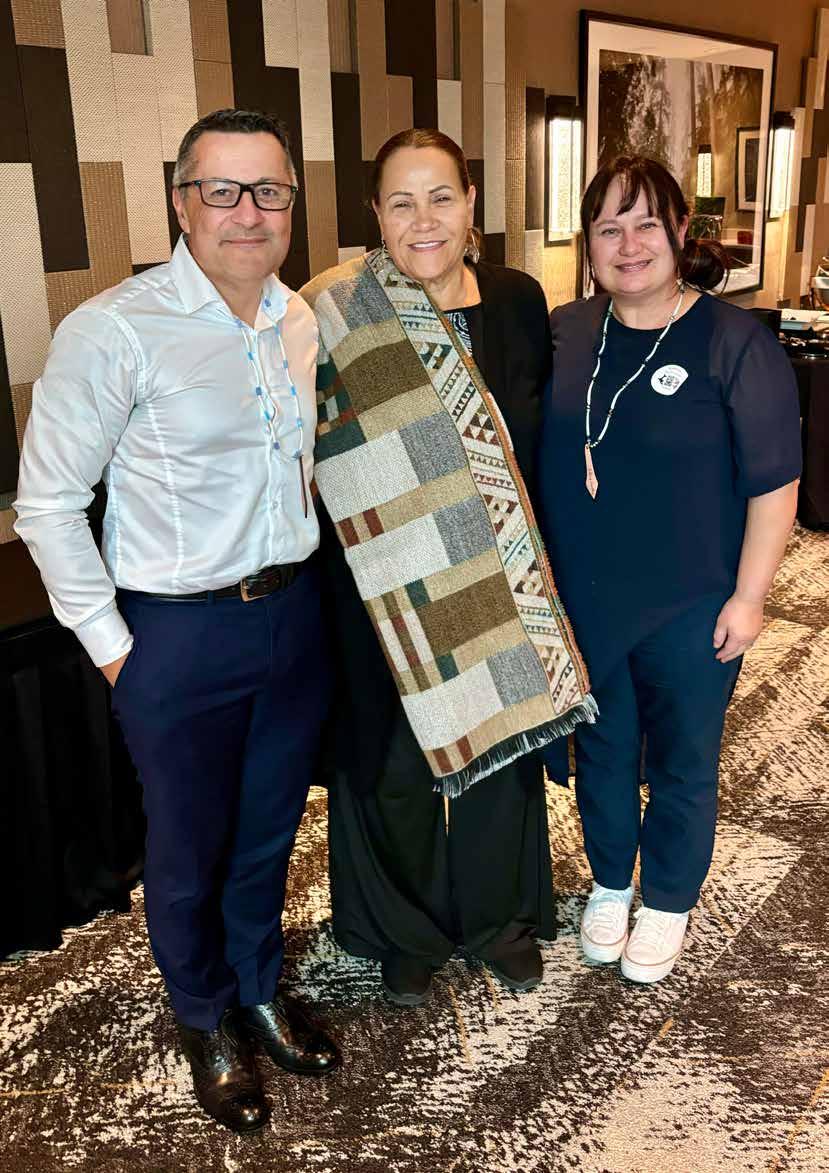

I te Nōema, i tūtaki ētahi mema o te tira hautū o Awanuiārangi ki ngā rangatira o te Iwi Tulalip kei Washington State, ki te whakarewa i te kawenga o tētahi tohu paetahi kaiako a Awanuiārangi. Ka kawea tēnei ki Amerika mō te wā tuatahi hei te 2025.
Tekau mā rima ngā tauira Tulalip kua whakauru ake, ā, hei tā Tania Doherty, te Kairuruku Hōtaka ā-Motu, i te rikarika ngā rōpū e rua ki te mahi tahi.
“Kei te rikarika mātau ki te whakaako i tō mātau Tohu Paetahi Ako rongomaiwhiti i Amerika. He arawātea tēnei mā te hunga e hiahia ana ki te hiki i te oranga o ngā rangatahi i ō rātau hapori, kia whiwhi tohu whare wānanga e poua ana ki ngā mātāpono iwi taketake, me ngā wheako ako whaikiko.
“Hei te roanga o te wiiki i noho tahi mātau me te iwi Tulalip, i kōrero mō te wero o te ū ki te taketaketanga i roto i te pūnaha mātauranga kāore i tino tautoko i tērā āhuatanga. Kei te hiahia rātau ki te ako i tā mātau tauira whakaako, otirā he nui te kaingākau ki ō mātau hōtaka ako, ā, ka tīmata pea he rāngai tuarua he te weherua o te tau.
“Ka whakaakona e mātau ake te hōtaka i te tuatahi, me te whakapiki i ngā pūkenga o te iwi rā, kia pai ai tā rātau ake whakaako ki tō rātau ake reo. Ko tō rātau whāinga ko te hanga i tētahi anga kaiako whaimana mā ngā iwi Taketake puta noa i Amerika.”
Kua 16 tau Te Whare Wānanga o Awanuiārangi e tuku ana i ngā Tohu Kairangi i Amerika me Kānata, engari koinei te tohu paetahi tuatahi mō te Wānanga i Amerika ki te Raki.
In November, members of the Awanuiārangi leadership team met leaders of the Tulalip Tribe, based in Washington State, to launch the delivery of an Awanuiārangi-led teaching degree. This will be delivered in the United States for the first time in 2025.
Fifteen Tulalip students have enrolled and National Programme Coordinator, Tania Doherty said that both groups were equally excited about working together.
“We are looking forward to delivering our unique Bachelor of Education degree – Te Tohu Paetahi Ako – in the US. This is an opportunity for those wanting to make a difference in the lives of the young people in their communities to gain a university degree centred in indigenous principles and rich learning experiences.
“During the week we spent with the Tulalip people, we talked a lot about the challenge of maintaining indigeneity in an education system that doesn’t always support it. They want to learn from our model and there is so much interest in our programme that it’s likely that we will have a second cohort there ready to go in the second half of the year.
“We will deliver and teach the programme initially and upskill members of the tribe to eventually deliver it themselves within their own language. Their goal is to create a credentialled teaching framework for Native American people across the US.”
Te Whare Wānanga o Awanuiārangi has delivered PhDs in the United States and Canada for 16 years, but this is the first undergraduate offering for the Wānanga in North America.

Ināianei e tautoko ana a Te Ōhanga Mataora: Te Hōtaka Nēhi Māori, i te hunga e hiahia ana kia tū hei nēhi i Te Wairoa. I tīmata te tohu i te 12 o Pēpuere, i whai wāhi ai ngā tauira tokoiwa o taua tāone ki tētahi arawātea kāmehameha ki te whai i te mātauranga i roto i tō rātau ake hapori.
Hei tā Sheree Spooner, te Upoko o te Kura Ruku Mātauranga, “Mā te manaaki i ngā matea mātauranga o ngā hapori rauemiiti, pēnei i Te Wairoa, kei te taihuri koe i te āheinga ki te whakangungu kounga i tua atu o ngā tāone matua. E poho kererū ana au ki ngā arawātea ka whakaratoa e Awanuiārangi hei pānga whakamutu, ā, e tāria ana ngā tāpaetanga angitu a ngā nēhi rēhita hou ki tēnei hapori.”
He tūhāhā ngā wero kei mua i te rohe o Te Wairoa, me tana taupori o te 9,290 tāngata, i te whakaratonga hauora, tēnā i ētahi atu rohe nui ake.
Hei tā Denise Eaglesome-Karekare, te Kahika Tuarua o Te Wairoa, “he whāinga nui te whakatūtanga o Te Ōhanga Mataora, i roto i te rautaki ki te whakapakari i te whakaratonga tiaki hauora i tō mātau hapori.
“Mā te whakarato i ngā arawātea mātauranga tūtata, kei te poipoi mātau i ngā nēhi pūhou me te whakatipu i tētahi rāngai kaimahi hauora whai pūkenga, nō te kāinga tonu. Ka whakanui tēnei kaupapa i te whanaketanga ā-whaiaro, ā-ngaio me te whai wāhi anō ki te korou o te ōhanga me te pāpori o Te Wairoa.”
Ka kawea te hōtaka Paetahi, e toru tau te roa ki Te Hōhipera o Te Wairoa me te Kāreti o Te Wairoa.
Te Ōhanga Mataora: Bachelor of Health Sciences Māori Nursing Programme is now supporting aspiring nurses in Wairoa. The programme launched there on 12 February, giving nine local students the invaluable opportunity to pursue their studies within their community.
Sheree Spooner, Head of School for Undergraduate Studies, said, “By catering to the educational needs of underserved communities, like Wairoa, we are revolutionising access to quality training beyond our main centres. I am proud of the opportunities that Awanuiārangi can provide for transformative impact, and I look forward to the positive contributions newly registered nurses will bring to this community.”
Wairoa District, with its population of 9,290, faces unique challenges in healthcare provision compared to larger districts.
Denise Eaglesome-Karekare, Deputy Mayor of Wairoa, affirms, “The establishment of the Bachelor of Nursing programme in Wairoa represents a significant milestone in our journey to strengthen healthcare provision in our community.
“By offering local educational opportunities, we are nurturing aspiring nurses and fostering a skilled and locally rooted healthcare workforce. This initiative promotes personal and professional growth and contributes to the economic and social vitality of Wairoa.”
The three-year Bachelor Programme is being delivered at Wairoa Hospital and Wairoa College.


Wānanga starts post-graduate diploma in tikanga and the law

I te Hānuere 2024 i whakarewaina e Awanuiārangi tana tohu Pourewa Tikanga - arā he pōkairua taurua i te Tikanga me te ture. He mea hoahoa tēnei tohu mā ngā tāngata ngaio ā-ture me ngā kaimahi ture hoki ki te whakawhanake i tō rātau mārama ki te tikanga me te hononga i waenga i te tikanga me te ture kāwanatanga. Ka whakarato i te mātauranga tohunga o te tikanga mā ngā akoranga whai wheako, te wānanga me te huritao arohaehae.
Hei tā Tai Ahu, tētahi o ngā pouako, “He mea hirahira tēnei akoranga mō te anamata o te ture i Aotearoa. I te wā e piki ana te rongo o te ahurea Māori, he mea waiwai kia mārama ki te tikanga, ā, kia matatika te whakamahi i te tikanga i roto i te ture. E harikoa ana mātau ko Awanuiārangi kei te ārahi i tēnei kaupapa, otirā kua kitea kētia tana pānga tūturu i waenga i te hapori ture.
Hei tā Natalie Coates, tētahi atu pouako, “E tino ihiihi ana mātau i te angitu o te akoranga tae noa ki tēnei wā. Ki ō mātau whakaaro ka whai wheako hōhonu ngā tauira o te mārama me te rongo ā-manawa he aha te tikanga, kai pai ai te whiriwhiri i te āhua o tana whai pānga ki te horopaki ture.
“He tino waimaria ā mātau tauira ki te ako mai i ngā tohunga tikanga pēnei i a Tā Hirini Mead, rātou ko Tā Pou Temara, ko Ahorangi Wiremu Doherty, ko Tākuta Turuhira Hare, ko Pouroto Ngaropo, ko Ahorangi Rangi Mataamua, ko Hotura Barclay-Kerr, arā atu.”
Kei te kawea tēnei tohu pōkairua tautara ki te whareako matua i Whakatāne. I tēnei wā, tekau mā ono ngā tauira kua whakaurua ki tēnei akoranga paerete.
In January 2024, Awanuiārangi launched a pilot of its Pourewa Tikanga – Tikanga and the Law post-graduate diploma. This diploma was designed specifically for legal professionals and practitioners to develop an understanding of tikanga and the growing relationship between tikanga and the state law. It provides specialised knowledge of tikanga through experiential learning, wānanga and critical reflection.
Tai Ahu, one of the pouako of the course, said, “The course is important for the future of law in Aotearoa. As Māori culture becomes increasingly recognised, it is essential that tikanga is understood and applied in the law with integrity. We are delighted that Awanuiārangi is leading this kaupapa, which is already making a real impact amongst the legal community”.
Natalie Coates, another pouako said, “We are really excited about the success of the programme thus far. We think this course is giving students an experience that deepens their understanding and intuition about tikanga so that they can better grapple with how it is relevant and applies in a legal context.
“Our students are very lucky to be able to learn from amazing tikanga experts such as Tā Hirini Moko Mead, Tā Pou Temara, Professor Wiremu Doherty, Dr Turuhira Haare, Pouroto Ngaropo, Professor Rangi Mataamua, Hoturoa Barclay-Kerr and many more.”
The two-year post-graduate degree is being delivered primarily at the Whakatāne campus. Sixteen students are currently enrolled on the pilot course.

I whakawhiwhia a Tā Hirini Moko Mead ki te tohu nei i te 16 o Pēpuere hei whakanui i tana manawa titikaha me ngā homaitanga ki Te Ao Māori.
I hua ake tana kopounga i te Ākuhata 2023 mai i Te Rūnanga o Ngāti Awa, ā, ka tautokona e te National Iwi Chairs Forum i mua o te whakawhiwhinga ki a ia.
He mea whakarite tēnei tohu e te Iwi Chairs Forum i te 2021, ko tā te tohu Whare Pūkenga he whakanui i te tangata matapopore nui ki te whakarauora me te whakauka o ngā taonga me ngā uara, hei tiaki i Te Ao Māori i te wā e whakarauora ana i te oranga o ngā whānau katoa o Aotearoa. He pūkenga tikanga tangata, he pūkōrero rongonui a Tā Hirini, otirā i te roanga o tana umanga mahi, i manawa tītina ia mō te painga o te Māori. Ko āna mahi nunui ka hora i te tuhinga o te neke atu i te 70 pukapuka, pepa me ngā atikara, te noho hei ahorangi taketake o te Māoritanga i Te Herenga Waka, me te whakatūtanga o Te Whare Wānanga o Awanuiārangi. Hei whakanui i āna mahi kāmehameha ki te ahurea me te mātauranga Māori, i whakahōnoretia ia hei Kaimana o te Tātai Whānui o Aotearoa i te 2007, ā, ka whakapikitia ki te Tohu Tā i te 2009.
Tā Hirini Moko Mead received the award on 16 February in acknowledgement of his exceptional dedication and contributions to Te Ao Māori.
He was nominated by Te Rūnanga o Ngāti Awa in August 2023, and the nomination was endorsed by the National Iwi Chairs Forum before being presented to him.
Established by the Iwi Chairs Forum in 2021, Te Whare Pukenga acknowledges individuals who have made significant contributions to the revitalisation and preservation of taonga (cultural treasures) and values that safeguard Te Ao Māori while enriching the lives of all whānau across Aotearoa.
Throughout his distinguished career, Tā Hirini, an esteemed anthropologist and historian, has given a lifetime commitment to Māori. His remarkable achievements span authoring over 70 books, papers, and articles, serving as a foundational professor of Māori Studies at Victoria University, and the establishment of Te Whare Wānanga o Awanuiārangi. In recognition of his invaluable contributions to Māori culture and education, he was honoured as a Distinguished Companion of the New Zealand Order of Merit in 2007, an accolade elevated to knighthood in 2009.
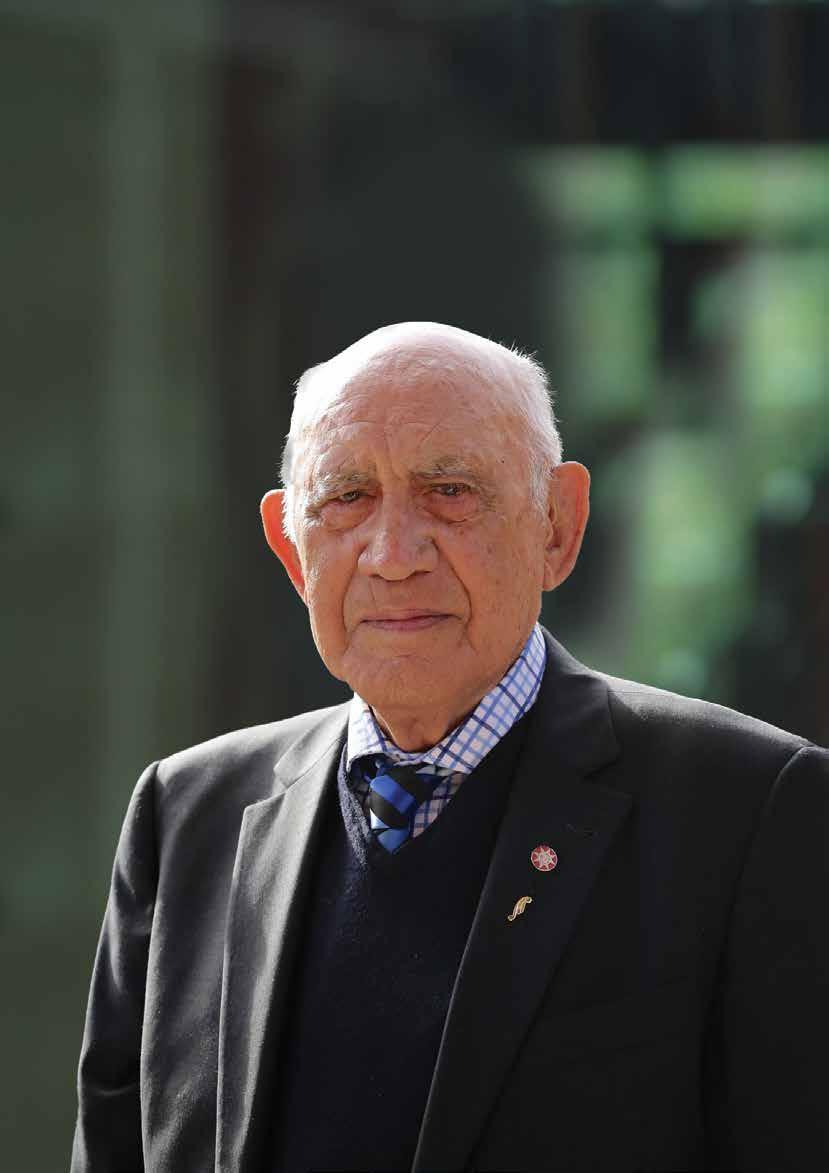



Tokorua ngā kairangahau o Awanuiārangi, a Tākuta Reuben Collier rāua ko Tākuta Te Hauāuru Tahi-Rangihau i whakawhiwhia ki te pūtea i te Tahua rongonui o Marsden, ā, whakahaeretia ana e Te Apārangi. He pouako matua te tokorua nei i roto i Te Kura Whakawhānui Mātauranga, otirā he ihuputa Tohu Kairangi rāua o mua nā Awanuiārangi.
He ringatohu, he kaihanga hōtaka rongonui a Tākuta Reuben Collier, MNZM. He mea hoahoa tana kaupapa rangahau ki te tūhura i ngā kōhuretanga ahurea o ngā mita o te reo Māori, me te miramira anō ki te mita o Tūhoe me ōna nuka reo kōhure. Nā tana āheinga tāuke ki te 400 hāora o ngā whakaaturanga pakipūmeka tawhito mai i Ngā Tāngata Taumata Rau: Ngā Tamariki o Te Kohu, ka tautohu, ka tuhi hoki a Tākuta Collier, rātau ko tana tira i ngā āheinga reo ahurei, tae atu ki ngā kupu whakarite, ngā tohutohu reo ā-tinana, me ngā whakaaturanga ahurea e mārama pai ai ngā kōrero tuku iho o te reo Māori. Ko te kaupapa a Tākuta Te Hauāuru Tahi-Rangihau he tirotiro i te pitomata whakahaumanu o te mōteatea, arā, ngā takutaku tawhito a te Māori, hei tautoko i te hauora hinengaro me te oranga Māori. I mua, i noho te mōteatea he mātāpuna o te oranga wairua i whakamahia ki te whakatau i te mate, te whakatairanga i te manawaroa me te whakatipu i te hononga ā-wairua. I te horopaki hou nei, i te wā e pā kinotia ana te iwi Māori i te mate hinengaro, ka tūhura a Tākuta Tahi-Rangihau me tana tira i te āhua o te mōteatea ki te taunaki i ētahi atu tikanga ao hou o te haumanu hauora hinengaro mā te pāhekohekotanga o ngā tikanga me ngā tautake ahurea.
Ko tētahi o ngā mema o te Mana Whakahaere a Natalie Coates tētahi o ngā Kairangahau Tūhono o tētahi kaupapa i whakawhiwhia ki te Takuhe o Marsden e tūhura ana i te āhua o te raranga i te ture kāwanatanga me te tikanga Māori hei whakatau i te pānga o te matenga ki te matatapu, te rongonui me te mana.
He mema a Tākuta Brian Tunui, Mema Mana Whakahaere, o te kāhui rangahau o Te Whare Wānanga o Te Herenga Waka i Pōneke, i whakawhiwhia ki tētahi takuhe ki te rangahau i te hoahoa o tētahi pūnaha tāke e whakaū ana i Te Tiriti.
Two Awanuiārangi researchers, Dr. Reuben Collier and Dr. Te Hauāuru Tahi-Rangihau, have been awarded funding from the prestigious Marsden Fund, granted and administered by The Royal Society of New Zealand Te Apārangi. Both researchers are senior lecturers within Te Kura Whakawhānui Mātauranga - School of Postgraduate Studies, and former PHD graduates of Awanuiārangi.
Dr. Reuben Collier, MNZM, is an acclaimed television director and producer. His research project is designed to explore the unique nuances of Māori dialects with a particular emphasis on the Tūhoe dialect and its distinctive language features. With exclusive access to 400 hours of archival footage from the Ngā Tāngata Taumata Rau: Ngā Tamariki o Te Kohu documentary series, Dr. Collier and his team will identify and document unique language elements, including metaphors, gestures, and cultural expressions essential for understanding the spoken history of te reo Māori.
Dr Te Hauāuru Tahi-Rangihau’s project examines the therapeutic potential of mōteatea (traditional Māori chants and songs) to support Māori mental health and well-being. Historically, mōteatea have been a source of spiritual healing used to manage grief, promote resilience, and foster spiritual connection. In a contemporary context where Māori suffer disproportionately high levels of mental ill-health, Dr. TahiRangihau and her team will explore how mōteatea might complement more conventional modes of mental health therapy through the integration of cultural concepts and philosophies.
Awanuiārangi Council Member Natalie Coates, is an Associate Researcher on a project that was awarded a Marsden Grant exploring how common law and tikanga might be woven together to determine death’s impact on privacy, reputation and mana.
Council Member, Dr Brian Tunui, is part of a Victoria University of Wellington research team awarded a grant to research a Te Tiriti-affirming tax system design.

I whakahōnoretia a Ahorangi Ahurei Linda Tuhiwai Smith, mema o te Mana Whakahaere, ki te tohu IUPsyS 2024 Archbishop Desmond Tutu Achievement Against the Odds Quadrennial Award.
He mea whakahaere e te International Union of Psychological Sciences (IUPsyS), ka whakanui te tohu i tētahi kairangahau i angitu i roto i te whakahaere rangahau ahakoa ngā uaua whakahara nui, tae atu ki te mōrea whaiaro nui, te pōharatanga rānei, hei painga mō te mahi rangahau pūtaiao, te hapori pūtaiao me te iwi tūmatanui hoki/rānei.
Nō te whiwhinga i tana tohu i Prague, Czech Republic i te 22 o Hūrae, i kōrero a Ahorangi Ahurei Smith mō te hirahira o te mātauranga Māori, kia hau tana rongo i ngā pae o te ao.
“Nōku te hōnore kia whakawhiwhia ki tētahi tohu whakahirahira pēnei, i tētahi rāngai mātauranga pēnei i te mātai hinengaro, e whakaata ana i te pānga whānui o te mātauranga Māori, me te whakanui anō i ngā wero moroki kei mua i te Māori kia whakamanatia tō tātau mātauranga, te reo me te ahurea i tō tātau ake nei whenua.”
I kopoua a Ahorangi Ahurea Smith mō te Tohu e Te Rōpū Mātai Hinengaro o Aotearoa. Ko ētahi o ngā kōrero i roto i tā rātau tono:
“Nā ngā tūranga o Ahorangi Tuhiwai Smith i Aotearoa hei pūkenga tātaki puta noa i ngā kura ā-motu, ā-ao maha, ngā whare wānanga, ngā hinonga rangahau Māori, ngā whare wānanga Māori i whakarite i te tipuranga me te whanaketanga o ētahi kaupapa iwi taketake i te mahi rangahau, te whakaako me te whakatinana mahi.
“Rite tonu te whakahoki a Ahorangi Smith i te whati mai a te iwi kirinoho tāmi mana tangata, me te kōkiri i tētahi kaupapa i poua ki te mana motuhake Māori. He wahine hihiri i te tangata, otirā nā tōna tiro matawhānui i whakatakoto i te tūāpapa mō te tāpaetanga o Aotearoa ki te mātai hinengaro o te ao.”
Ka whakawhiwhia te tohu Archbishop Desmond Tutu Achievement Against the Odds Award i ia whā tau e te International Congress of Psychology (ICP).
Awanuiārangi Council member, Distinguished Professor Linda Tuhiwai Smith, was honoured with the IUPsyS 2024 Archbishop Desmond Tutu Achievement Against the Odds Quadrennial Award.
Hosted by the International Union of Psychological Sciences (IUPsyS), the award acknowledges a researcher who has succeeded in conducting research under difficult circumstances, involving personal risk or hardship, for the benefit of scientific research, the scientific community and/or the general public.
Upon receiving her award in Prague, Czech Republic on 22 July, Distinguished Professor Smith spoke of the importance of mātauranga Māori being recognised on the international stage.
“I was honoured to receive such a prestigious award from a field of knowledge such as psychology that reflects on the wider impact of Māori scholarship and acknowledges the continuing challenges that we face as Māori in having our knowledge, language and culture fully accepted in our own country.”
Distinguished Professor Smith was nominated for the Award by the New Zealand Psychological Society. In their nomination, they noted:
“Professor Tuhiwai Smith’s role in Aotearoa as a leading academic across multiple schools, universities, Māori research institutes, and Māori tertiary institutions, facilitated the growth and development of several indigenous led initiatives in both research, teaching and practice. Consistently, Professor Smith has pushed back on settler-colonialism and driven an agenda based on Māori sovereignty. She is an inspiration, and her vision has provided the foundation for New Zealand’s contribution to international psychology.”
The Archbishop Desmond Tutu Achievement Against the Odds Award is conferred every four years at the International Congress of Psychology (ICP).
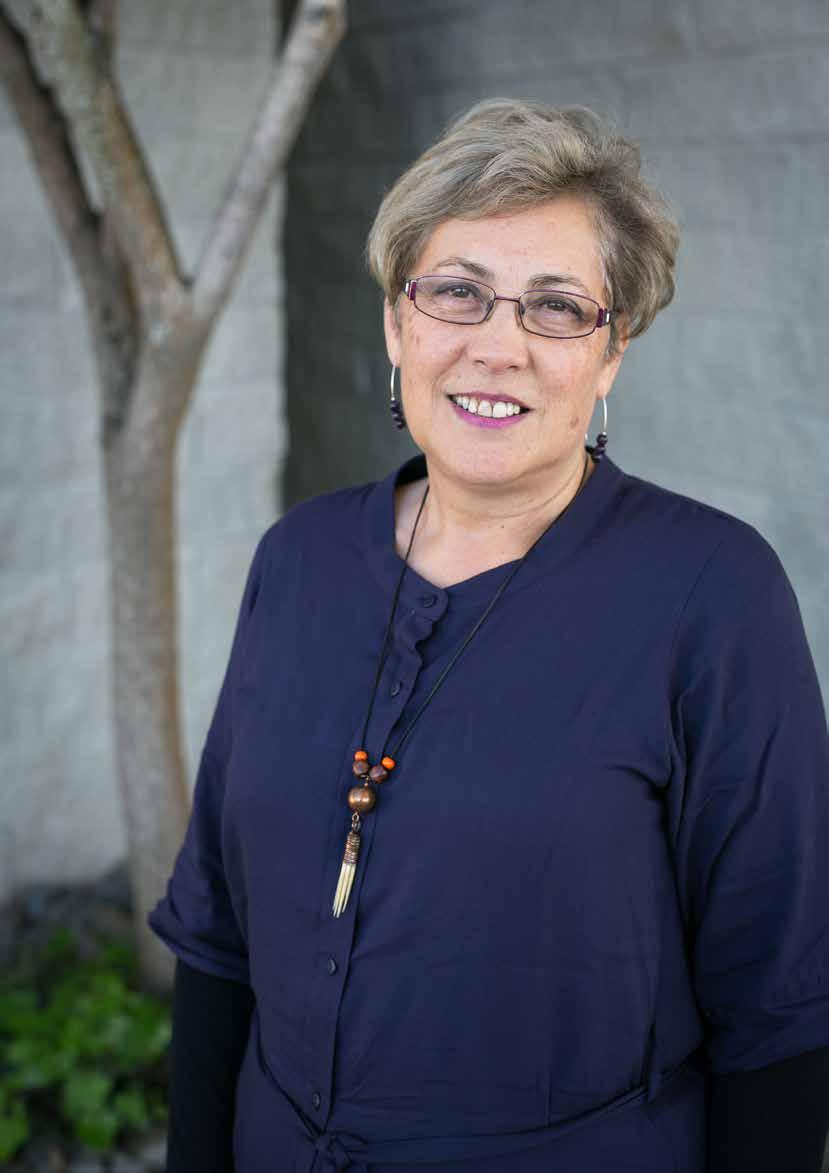


Kua whakaputaina e Te Whare Wānanga o Awanuiārangi me Tauhara North No2 Trust te kaupapa mahi tahi ki te kawe i te Tohu o Ngā Mana Whakairo a Toi (BMPA) ki Te Pā Tū, te wheako tūruhi Māori whiwhi tohu i Rotorua.
I pōhiritia te 26 tauira ki te tohu paetahi, e 3 tau te roa, i te 1 o Tīhema, otirā ko ētahi o ngā tauira nā Tauhara North No2, ko ētahi he uri nō Ngāti Tahu Ngāti Whāoa, me ngā kaihaka a Te Pā Tū.
E harikoa ana a Sheree Spooner, Upoko o Te Kura Ruku Mātauranga ki te mahi tahi me Tauhara North No2 Trust me tēnei kaupapa tūhāhā e whakakotahi ana i te ahurea, te mātauranga, me ngā mahi tāpoi kounga.
“Tūturu he arawātea mātauranga hirahira, engari āpiti anō ki tērā, he mea whakamana i ngā hapori me ngā iwi, me te whakapakari i te tuku ihotanga ā-ahurea mā te mahi toi haka.”
Ko te whāinga o te hōtaka BMPA he poipoi i ngā pūmanawa me ngā pūkenga ki te toi haka, he whakarato ki ngā tauira ngā wheako ā-tinana, me te anga ahurea haumako, e motuhenga ana ki tēnei hōtaka, otirā he arawātea ki te aro ki ngā tikanga taketake ki a Ngāti Tahu-Ngāti Whāoa.
Hei tā Wikitoria Hepi-Te Huia, te Upoko o te Tarahiti, “Mā tēnei hōtaka e whakarite i te arawātea whānui ake mā ā mātau rangatahi ki te hono ki ō rātau whānau, whakapapa me te whenua mā roto i te mātauranga Māori, i te wā e whai wāhi ana ki te horanuku ahurea o tō mātau Tarahiti me ō mātau iwi o Ngāti Tahu-Ngāti Whāoa. Mā tēnei papa mātauranga hoki e whiwhi ai mātau i te arawātea ki te whakarite i te āpōpō o ā mātau kaihaka ngaio i Te Pā Tū.”
Ka tū ngā akoranga ki Te Pā Tū, i Rotorua, otirā ka whakahaeretia e Awanuiārangi.
Te Whare Wānanga o Awanuiārangi and Tauhara North No2 Trust have announced a joint venture to deliver a Bachelor of Māori Performing Arts (BMPA) programme at the Trust’s award-winning visitor experience, Te Pā Tū, Rotorua.
An intake of 26 students was welcomed into the 3-year degree programme on 1 December, with representation shared between Tauhara North No2 Trust, descendants of Ngāti Tahu Ngāti Whaoa Iwi and Te Pā Tū kaihaka (performers).
Sheree Spooner, Head of School of Undergraduate Studies at Awanuiārangi is thrilled to be working alongside Tauhara North No2 Trust in this unique venture that brings together culture, education, and award-winning tourism.
“While this initiative is a valuable education opportunity, it’s also about empowering communities and iwi, and strengthening cultural heritage through the performing arts.”
The BMPA programme aims to nurture talent and skills in Māori performing arts, providing students with hands-on experience and a rich cultural framework. Unique to this programme, it is an opportunity to focus in on traditions unique to Ngāti TahuNgāti Whaoa iwi.
Wikitoria Hepi-Te Huia, Chairperson of the Trust said, “This programme will enable greater opportunity for our rangatahi (youth) to connect to whānau, whakapapa and whenua through mātauranga Māori, while contributing to the cultural landscape of our Trust and our Ngāti Tahu-Ngāti Whaoa iwi. This educational platform also allows us the opportunity to facilitate succession in our professional kaihaka at Te Pā Tū.”
Classes take place at Te Pā Tū, Rotorua and are delivered by Awanuiārangi.

Kua kotahi ngā whare wānanga, ngā hinonga rangahau me ngā whakahaere ā-hapori i Kānata, i Amerika, Hawaii me Aotearoa ki te hanga i tētahi rōpū tūhono rangahau ā-ao e kīia nei ko Abundant Intelligences, ki te tūhura i te pāhekohekotanga o te mātauranga iwi taketake me te atamai horihori (AI).
He hoa rangapū a Awanuiārangi, ā, i whakahaeretia te hui ā-kanohi tuatahi i te Nōema ki te whiriwhiri i ētahi o ngā wero AI kei mua i ngā hapori iwi taketake huri noa i te ao.
I tana kauhau huataki, i puta te karanga a Ahorangi Wiremu Doherty, te Tumu Whakarae o Awanuiārangi, kia whakamanahia ngā tuara Māori, ā, kia pāhekohekotia ki roto i te whanaketanga me te whakamahinga o te AI.
“Ki te kore koe e totohe ki te ao tūroa, kāore koe i te mōhio ki ngā ture e whāia ana e koe. Hei whakahaere Māori, kei te mārama mātau ki te hononga i waenga i te reo, te mātauranga me te ahurea.
“Ka tautoko te AI i te kōkiritanga ki te mātauranga āheinga hohoro. Engari kāora he whai whakaarotanga ki te wā me te pono, otirā he uara waiwai i te ao Māori. He mea hirahira kia whai whakaaro ki te āhua o te whakamana i tō tātau pūnaha uara, mā roto i te whanaketanga me te whakamahinga o te AI.”
He kaiariā matihiko, he kaitoikupu, he kaihoahoa pūmanawa rorohiko hoki a Jason Lewis, otira nāna i ārahi i te pae kōrero tuatahi. I tua atu i tērā, he Ahorangi ia o ngā Toi Tātaitanga ki te Whare Wānanga o Concordia, otirā hei tāna, ko Abundant Intelligences he rōpū whai wāhi ki ngā iwi taketake hei whakaata i a rātau anō ki ngā wāhi matihiko, kia kaua e riro mā tētahi atu rātau e whakaata.
“He mea hirahira kia whai mana ngā iwi taketake ki te āhua o te whanake i tēnei hangarau. Me whakarite tātau i te AI ki tētahi kaihana hei whakaako i a koe, hei whakaako hoki māhau.”
I aro ngā whiriwhiri kōrero ki te rapu i tētahi tauritenga i waenga i te mana raraunga me te mōhio ko wai te hunga e whiwhi ana i ngā mōhiohio, me te hiahia anō ki te wetetāmi i ngā wāhi mariko. Kei te whakatakoto tūāpapa te rōpū mō tētahi anamata e ora tahi ai te AI me te mātauranga taketake engari he nui kē ake te mana tautika, te kauawhi me te taha ahurea.
Universities, research institutes and community-based organisations in Canada, the United States, Hawaii and Aotearoa have formed an international research alliance called Abundant Intelligences to explore the integration of indigenous knowledge and artificial intelligence (AI).
Awanuiārangi is an alliance partner and hosted the group’s first in-person event in November to discuss some of the AI challenges facing indigenous communities around the world.
In his opening address, Awanuiārangi Chief Executive, Professor Wiremu Doherty called for Māori values to be acknowledged and integrated into the development and use of AI.
“If you don’t challenge what’s obvious, you don’t know whose rules you are following. As a Māori organisation, we understand the connection between language, knowledge and culture.
“AI supports the drive for instant access to knowledge. But there’s no regard for time and provenance, which are critical values in te ao Māori. It’s important to consider how our values system can be recognised through the development and use of AI.”
Leading the first panel discussion, digital media theorist, poet, and software designer, Jason Lewis, who is also a Professor of Computation Arts from Concordia University, said the Abundant Intelligences group is engaging indigenous people in technology to represent themselves in digital spaces, rather than being represented by others.
“It’s important that indigenous people assert agency over the way that this technology is developed. Think of AI as a cousin that you will learn from but also teach.”
Discussions focused on finding a balance between data sovereignty and knowing who information is being shared with, and the need to decolonise virtual spaces. The group is laying groundwork for a future where AI and indigenous knowledge systems coexist, but are more equitable, inclusive and culturally grounded.

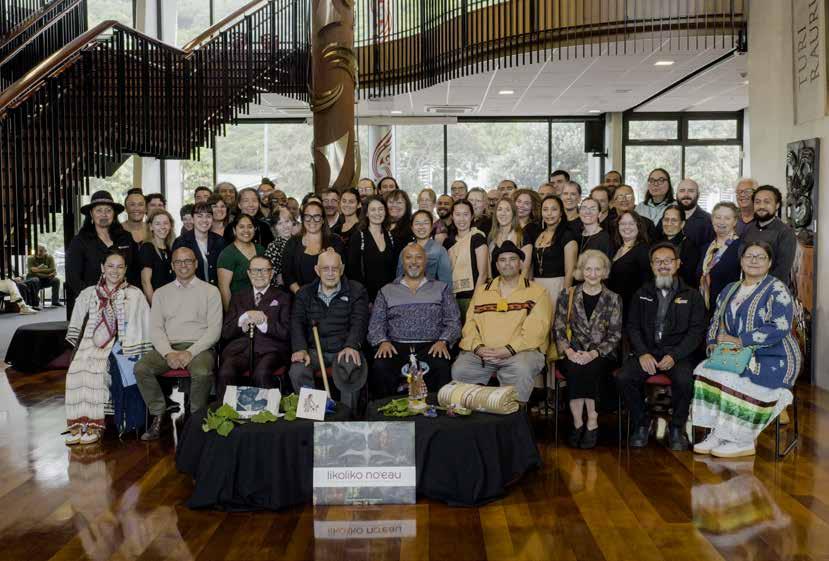

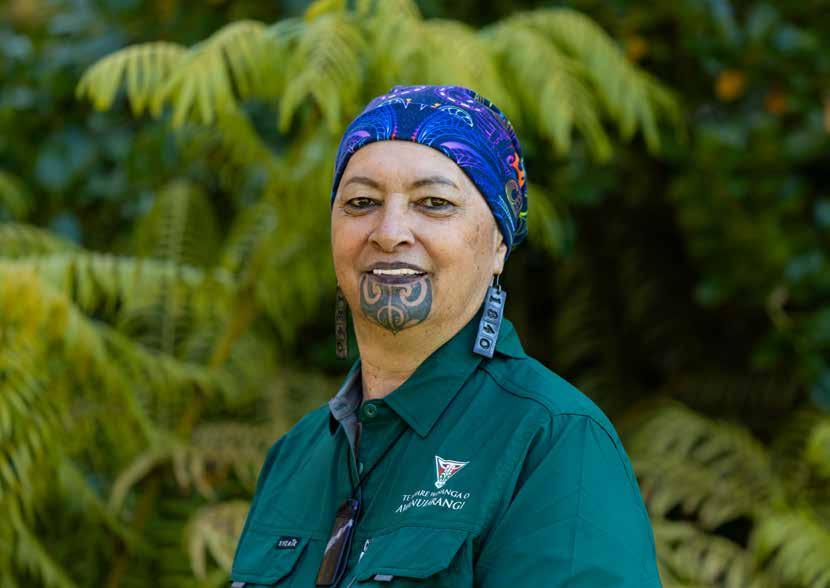

E toru o ngā karahipi ā-ao e rima i whakawhiwhia ki ngā ākonga o Awanuiārangi kua whakaurua ki te tohu o Te Aka Pūtaiao (Kaupae 5) me te Tohu Paetahi o Te Aho Pūtaiao.
Ko te karahipi nei he rangapū i waenga i a Wānanga o Pūhoro STEMM me te New Zealand Agriculture Greenhouse Gas Research Centre (NZAGRC), he mea waihanga ki te tautoko i ngā tauira Māori e ū ana ki te kōkiri i te mātauranga me te rangahau i te ahu pūtaiao me te hurihanga āhuarangi. Kei roto i te tahua $29,000 nei, he $10,000 putea, $10,000 mō te wāhi noho me te tautoko ā-tawhiti, ā, me te $9,000 tūnga ika tauhou.
Hei tā Violet Walker, Kairuruku ā-Motu, Pouako hoki i te Pūtaiao i Awanuiārangi, “Ka whakanui te karahipi nei i te hiahia kia nui ake ngā reo Māori i te rangahau āhuarangi, ā, ka miramira i te mātauranga me ngā pūmanawa rirerire o ā mātau tauira wānanga. Ka whai pūkenga, ka whai tirohanga hoki ēnei tauira hei whakamana i a rātau kia tū hei rangatira i ā rātau mahi me ngā hapori.”
He uri a Ariana Ngaronoa o ētahi iwi maha, tae atu ki Te Tairāwhiti, Te Tai Hauāuru me Te Upoko o te Ika. I tēnei wā kei te whai ia i Te Aka Pūtaiao (Kaupae 5).
Mō Ariana, ehara noa ko te tipuranga whaiaro te tikanga o tēnei āheinga, engari ko te whai wāhi ki te tiakanga me te mārama ki te Taiao.
“Ki ōku whakaaro he āheinga mīharo tēnei ki te ārahi i taku aramahi ki te ara e hiahia ana au. Ko te taiao te pito o taku ao, ā, e rikarika ana ahau ki ngā mahi ako me ngā wheako katoa ka hua mai.
“Ko aku kupu akiaki ki ngā whānau, he ngāwari noa: me whai whakaaro! Me whai wāhi ki te Taiao, me whakapakari i tō hononga ki te taiao. He takohanga katoa ā tātau.”
Three out of five national scholarships were awarded to Awanuiārangi students enrolled in the Te Aka Pūtaiao (Level 5) and Bachelor of Environmental Studies, Te Aho Pūtaiao programmes.
The scholarship, a partnership between Pūhoro STEMM Academy and the New Zealand Agriculture Greenhouse Gas Research Centre (NZAGRC), was created to support tauira Māori committed to advancing mātauranga and research in environmental science and climate change. The $29,000 package includes $10,000 in cash, $10,000 for accommodation and pastoral care, and a $9,000 paid internship.
Violet Walker, National Programme Coordinator and Lecturer in Sciences at Awanuiārangi, said, “The scholarship acknowledges the need for more Māori voices in climate research and highlights the incredible mātauranga and talent of our wānanga tauira. These tauira will gain skills and insights to empower them to become leaders in their respective fields and communities.”
Ariana Ngaronoa is a descendant of several tribes including Te Tairawhiti (East Coast), Tai Hauāuru (West Coast), and te Upoko ō te Ika (Southern North Island). She is currently studying Te Aka Pūtaiao (Level 5).
For Ariana, this opportunity isn’t just about personal growth, but about contributing to the protection and understanding of Te Taiao.
“I see this as an amazing chance to guide my career in the direction I want it to go. Te Taiao is the centre of my universe, and I’m excited about all the learning and experiences that will come from this.
“To whānau, my advice is simple: make sure you care! Get involved with Te Taiao, strengthen your connection with the environment. We all have our roles to play.”

I te 2024, i whakarewaina e Awanuiārangi tētahi rautaki hei whakarato i Te Pou Hono me Te Waharoa ki ngā kapa haka o Te Matatini 2025. Kei te āwhina tēnei kawenga i ngā rōpū me ngā marae ki te whakawhanake i te mārama hōhonu o ngā kākahu tawhito, tae atu ki ngā piupiu me ngā korowai, ngā taonga pūoro, taonga whakarākei, tae atu ki ngā taonga a Tū, pēnei i te taiaha me te toki.
Ko te akoranga ā-hapori te iho, otirā ka tautoko haere ngā anga o ēnei hōtaka i te tukunga iho o te mātauranga ki ngā whakareanga. Ka aro te aratohu aromatawai toi haka hou ki ngā āhuatanga o te toi ka kawea mai e ia kapa haka, otirā ka awhina i ngā kaihaka kia ngāwari te koke haere i ngā haepapa e pā ana ki Te Matatini 2025.
Hei tā Makarena Hotene, te Kairuruku: “Mā te miramira i ngā tauira pai i roto i tētahi aratohu torowhānui, i whakamanahia e mātau ngā kaihaka puta noa i Aotearoa ki te whakaatu i ā rātau mahi me te whakatutuki pai i te tukanga aromatawai. Ka whakapakari haere tonu tēnei rautaki i ō mātau hononga ki te hapori kapa haka me te kōkiri i ō mātau whāinga whakawhanake iwi, hei kura , ā, me te āwhina i a mātau ki te whakatutuki i ō mātau whāinga EFTS 2024 i ēnei hōtaka.”
Kāore hoki e mutu tā mātau tautoko i Te Matatini i konā. I whai wāhi tētahi rōpū tauira o Kai Oranga Kaupae 3 ki te whakatō i te rua tana o te rīwai hei āwhina ki te whāngai i te tini o ngā manuhiri e haere ana ki Taranaki mō Te Matatini 2025. Ka hauhaketia ēnei i te marama o Pēpuere, ka tuarihia ki ngā marae 24 e tiaki ana i ngā rōpū, ā, me ngā ringawera matua o te whakataetae kapa haka nui whakahirahira.
I tua atu i te whakarato kai ki ngā manuhiri o te whakataetae, he huarahi pai tēnei ki te whakamātau i te tipu nunui i te kai mō te wā tuatahi ki Taranaki. Kāore i ruia he matū ki ngā rīwai nei, he whakahaumako rānei, otirā he paku noa ngā mīhini i whakamahia, hei whakaiti i te pānga ki te oneone.
In 2024, Awanuiārangi launched a strategy to provide Te Pou Hono and Te Waharoa opportunities to kapa haka participating in Te Matatini 2025. This approach is helping groups and marae to develop a deeper understanding of their traditional kākahu, including piupiu and korowai, as well as taonga pūoro, taonga whakarākei, and taonga ā Tū, such as taiaha and toki.
With community education at their heart, the frameworks provided by these programmes continue to support the passing of knowledge between generations. The newly developed performing arts assessment guide, focussing on the toi aspects that each kapa bring with them, will help kaihaka smoothly navigate their requirements for the 2025 Te Matatini campaign.
Programme Coordinator, Makarena Hotene explains, “By highlighting exemplars within a comprehensive guide, we’ve been able to empower kaihaka all around Aotearoa to showcase their efforts and successfully complete the assessment process. This strategy continues to strengthen our connections with the kapa haka community while advancing our iwi development goals as a school and helping us exceed our 2024 ETFS targets in these programmes.”
And our support of Te Matatini doesn’t stop there. A group of Level 3 Kai Oranga tauira were involved with planting two tonnes of potatoes to help feed thousands of manuhiri going to Taranaki for Te Matatini in 2025. These will be harvested in February and distributed around the 24 marae hosting competitors, and the main caterers for the massive kapa haka event.
As well as providing kai for manuhiri, the project is a great way to trial growing crops on a larger scale for the first time in Taranaki. The potatoes were grown without chemical sprays or fertiliser and using only small machines to lessen the impact on the soil.
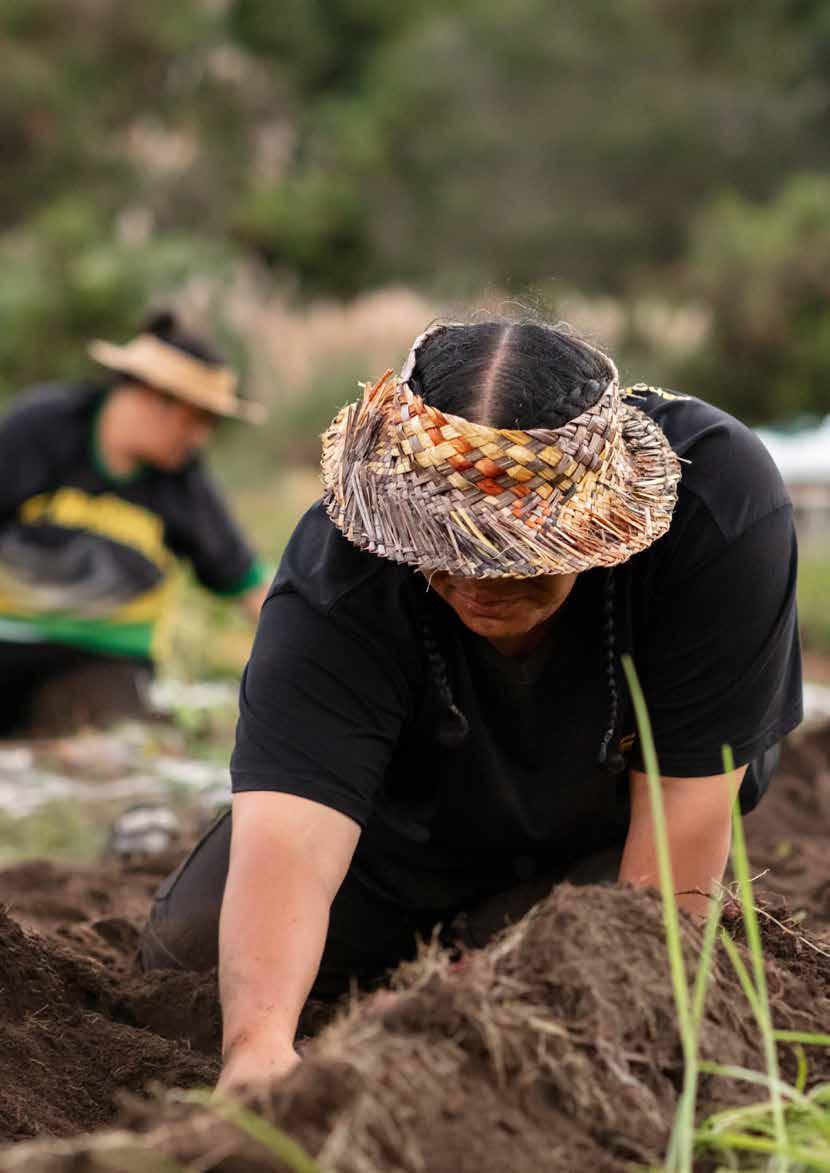
I te Paraire, 10 o Mei, i whakanuia e Te Whare Wānanga o Awanuiārangi ngā whakapaunga werawera o āna tauira, otirā he tau ikeike nui tēnei mō te tokomaha o ngā ihuputa kairangi iwi taketake, i te Whakapōtaetanga ā-tau. He 2,500 ngā tohu i whakawhiwhia ā-tangata, ā-matangaro hoki, otirā 14 o ēnei he tohu kairangi.
I tū tētahi pōhiri i te tīmatanga o te tau i te marae o Te Mānuka Tūtahi, i mua o te hīkoi roa a ngā ihuputa i te taone, mō te ‘Gown and Town’ ka tū i ia tau, ā, ka hoki ki te marae mō te whakapōtaetanga.
Ko tētahi o ngā tohu i whakawhiwhia ko te Distinguished Fellowship in Education. I whakawhiwhia ki a Adrienne von Tunzelmann e Awanuiārangi mō āna mahi rangatira ki te whanaketanga hapori, te mana whakahaere me te mātauranga.
Ko ētahi o ngā manuhiri i tae ki te whakapōtaetanga ko tētahi tira nō tāwāhi nō te Munarra Centre for Regional Excellence i Wikitōria, Ahitereiria. I haere te tira ki Aotearoa ki te whai mōhiotanga mō te tauira ako iwi taketake ka whakamahia e Awanuiārangi, i te wā e hoahoa ana rātau i tō rātau ake whare wānanga iwi taketake.
I whai te whakapōtaetanga i te Hui Iwi taketake i tū i te rā i mua atu mā ngā ihuputa kairangi ki te whakaatu i ā rātau rangahau ki tō rātau hapori. I whakaatu ngā kaiārahi rangahau i ngā hua o ngā kaupapa maha, mai i ngā pānga ki te whakapapa o te tango i ngā tamariki i ō rātau whānau, te whakarauora i te reo Māori, te tiaki i te awa, ā, me te tōrangapū ā-tuakiri.
On Friday 10 May, Te Whare Wānanga o Awanuiārangi acknowledged the hard work of its tauira and marked a record year for the number of indigenous doctoral graduands in the annual Graduation Ceremony. 2,500 tohu (qualifications) were conferred in person and in absentia, with 14 of these at the doctoral level.
A pōwhiri was held at the beginning of the day at Te Mānuka Tūtahi marae, before graduands made their way to town for the traditional ‘Gown and Town’ hikoi (walk) and returned to the marae for the ceremony.
Among qualifications conferred was a Distinguished Fellowship in Education. Adrienne von Tunzelmann was awarded this by Awanuiārangi for her exemplary contributions to community development, governance and education.
Among guests at graduation were an overseas cohort from the Munarra Centre for Regional Excellence in Victoria, Australia. The group travelled to New Zealand to learn more about the indigenous learning model Awanuiārangi employs as their own indigenous-led education facility takes shape.
Graduation followed the Iwi Taketake Symposium, held the previous day for the doctoral graduands to present their research to their community. Research leads presented findings on various topics, including the impacts on whakapapa of removing children from families, reo Māori reclamation, river protection and identity politics.
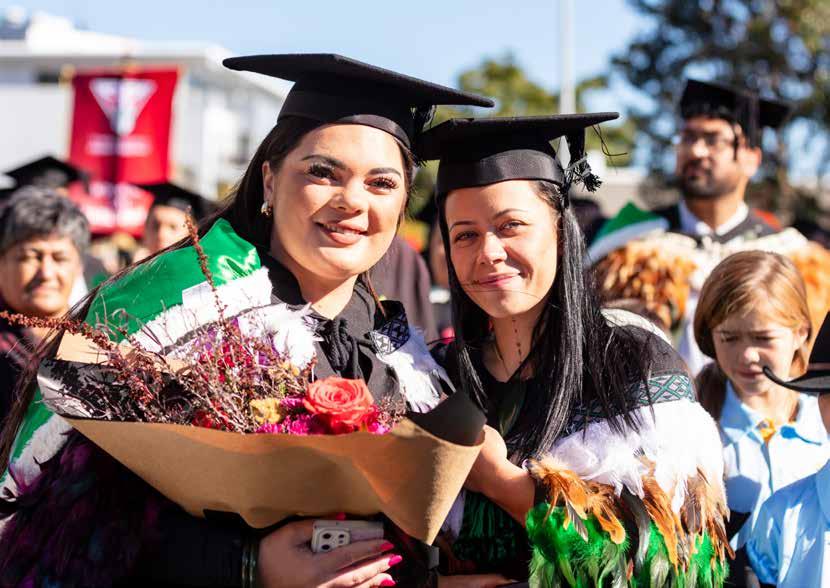
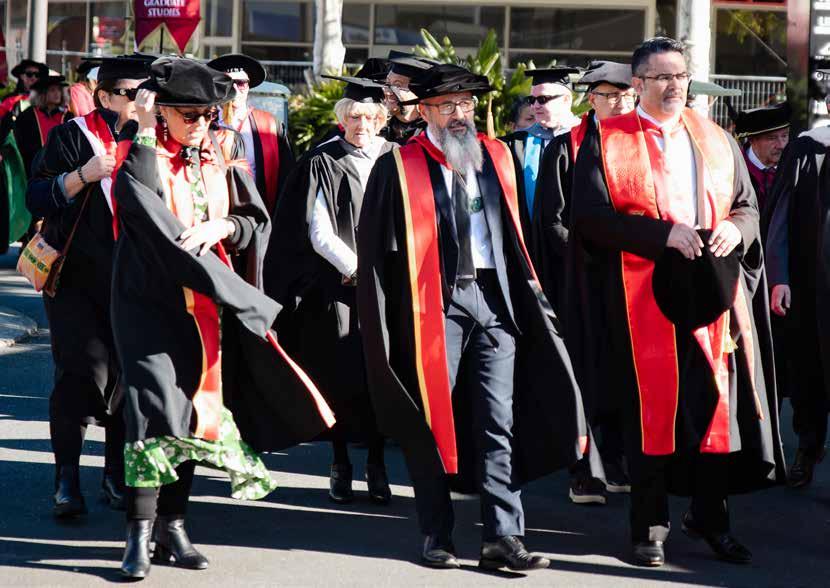
Kua whakawhiwhia he Distinguished Fellowship in Education ki a Adrienne von Tunzelmann mō āna mahi nunui mō te whanaketanga hapori i ngā tau maha o te whakaratonga tūmatanui me te mana whakahaere
I pakeke mai a Adrienne i Ōtauahi me Lyall Bay, i Pōneke, tatū noa ki Whītī, i te wā e mahi ana tōna matua mō te Tauā Rererangi. I puta a Adrienne von Tunzelmann i Te Whare Wānanga o Waitaha me te Tohu Paetahi Hōnore i te Ōhanga, me te Tohu Paerua i te Kaupapahere Tūmatanui i Te Whare Wānanga o Te Herenga Waka i Pōneke. He Distinguished Fellow ia o te Institute of Directors, ā, he Tiwhikete tāna i te mahi Tohutohu Kamupene. He ihuputa ia o ngā hōtaka mahi whakahaere tītike i Aotearoa me te ao, tae atu ki te Massachusetts Institute of Technology Sloan School of Management i Amerika.
I muri i te whakapōtaetanga, me te tau kotahi e mahi ana hei pouako teina i te mahi ōhanga, ka hūnuku ia ki Pōneke, ā, ka tīmata tana aramahi ratonga tūmatanui. I uru ki tēnei te mahi i Te Tai Ōhanga, i tū ia hei kaiwhakahaere peka, ā, ka ara ake hei Tumu Whakarae Tuarua i te Te Tāhū o te Ture, i noho haepapa ia mō Te Arawhiti. I roto i ngā tau e mahi ana ia i te Ratonga Pāremata, i tohua a Adrienne von Tunzelmann hei upoko o te Tari Komiti Whiriwhiri me te Karaka Tuarua o te Pāremata o Aotearoa
Hei āpiti atu ki āna tāpaenga ki Te Mana Whakahaere o Awanuiārangi, ko ētahi atu o āna tūnga mana whakahaere, hei mema o te poari o Pharmac me tana komiti tohutohu kiritaki; hei Perēhitini o te Chamber of Commerce o Tauranga; Hei Perēhitini o Hāpai Public; hei Upoko o te New Zealand Women’s Refuge Foundation; hei kaitiaki o te Bay of Plenty Community Trust me te Upoko o te Komiti Tātari me te Rangahau; mema poari o Osteoporosis New Zealand; Age Concern New Zealand me Age Concern Tauranga; te Ageing Well National Science Challenge, tarahiti o te University of Waikato Foundation me te Kairangi o te Tauranga Community Housing Trust. Nō muri i te whakahaere rangahau mārama ki te haepapa pāpori kaporeihana o Aotearoa, ka tāia tana pukapuka e te Institute of Policy Studies i Te Herenga Waka. Otirā kei te mārama kehokeho ia ki ngā kauneke o ngā tikanga pakihi o te ‘whaka-auraki’ i ngā āhuatanga ā-pāpori, ā-kiripānga hoki o te hinonga pakihi
I te 2016, i whakawhiwhia ia ki te QSO mō āna mahi mana whakahaere me āna mahi mā te hapori.
A Distinguished Fellowship in Education has been awarded to Adrienne von Tunzelmann for her contribution to community development over many years of public and governance service.
Adrienne grew up in Christchurch and in Lyall Bay, Wellington as well as in Fiji where her father had been posted by the Air Force. Adrienne von Tunzelmann graduated with a FirstClass Honours degree in Economics from the University of Canterbury and a Master of Public Policy (with Distinction) from Victoria University of Wellington. She is a Distinguished Fellow of the Institute of Directors and has a Certificate in Company Directorship. She is a graduate of advanced management programmes in New Zealand and internationally, including the Massachusetts Institute of Technology Sloan School of Management in the United States.
After graduation and a year as a junior lecturer in economics, she moved to Wellington where her public service career began. This included working in the Treasury, where she became a branch manager and then as Deputy Chief Executive in the Ministry of Justice where she had responsibility for the Office of Treaty Settlements. During her years with the Parliamentary Service, Adrienne von Tunzelmann was appointed Head of the Select Committee Office and Deputy Clerk of the New Zealand House of Representatives.
In addition to her contribution to Te Mana Whakahaere o Awanuiārangi , Adrienne’s governance service has included the board of Pharmac and its consumer advisory committee; President of the Tauranga Chamber of Commerce; President of the New Zealand Institute of Public Administration; Chairperson of the New Zealand Women’s Refuge Foundation; Trustee of the Bay of Plenty Community Trust and Chair of the Audit and Research Committee; board member of Osteoporosis New Zealand, Age Concern New Zealand and Age Concern Tauranga, and the Ageing Well National Science Challenge; Trustee on the University of Waikato Foundation and Patron of the Tauranga Community Housing Trust. Having undertaken insightful research on corporate social responsibility in New Zealand following the publication of her book by the Institute of Policy Studies at Victoria University of Wellington, she has maintained an up-to-date knowledge of shifts in business practice towards ‘main-streaming’ the social and stakeholder dimensions of business enterprise.
In 2016, she was awarded the QSO for services to governance and the community.
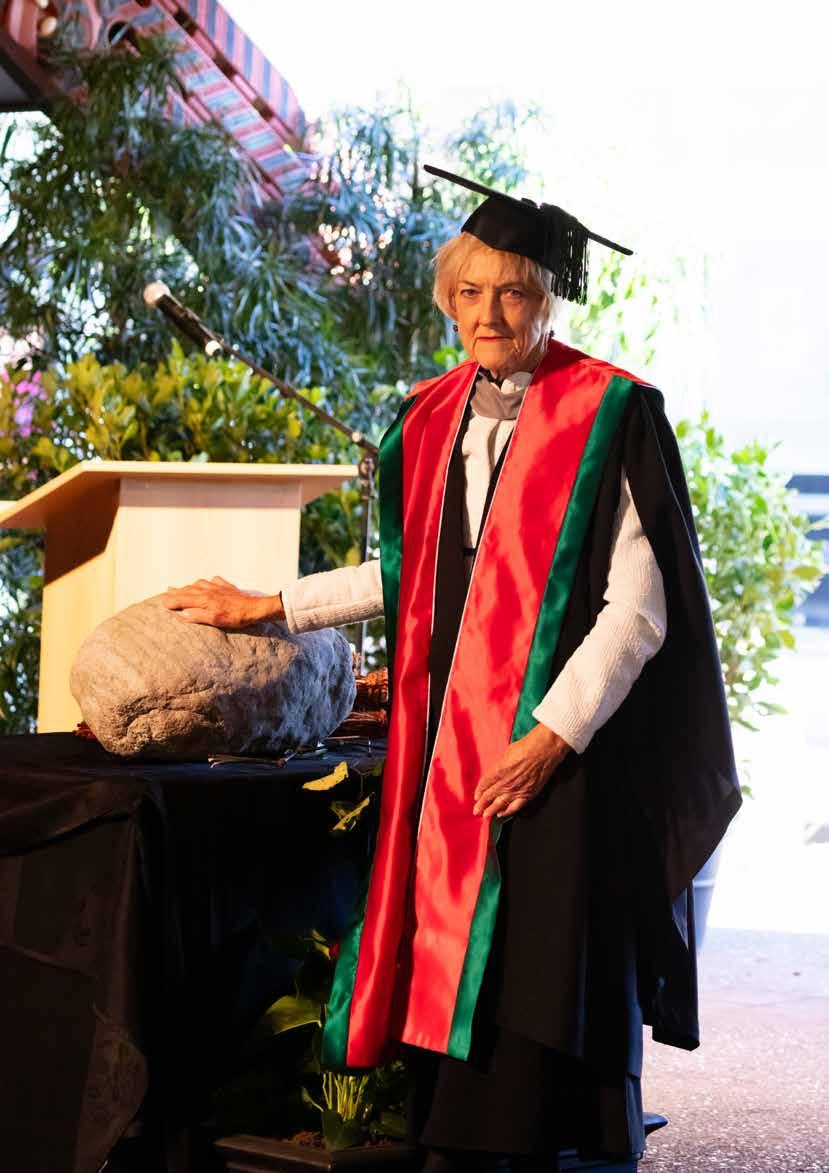
Te Tohu Award Kaiwhiwhi Award Recipient Tautāwhī Award Sponsor
Te Tohu Whakawhanake me te Kōkirikiri i ngā take ā-Iwi nā Te Whare Wānanga o Awanuiārangi
Te Tohu Rotary Club of Whakatāne mō te Ākonga Kaha ki te Whakapiki i tōna Reo Māori i te Tau Tuatahi
Te Kura Ruku Mātauranga Tohu Tiketike
Te Tohu Hiranga ki te reo Māori
Te Whare Wānanga o Awanuiārangi Contribution to Iwi Development and Advancement Award
The Rotary Club of Whakatāne Award for Most Improved First Year Student in Te Reo Māori
School of Undergraduate Studies Top Scholar Award
Excellence in Te Reo Māori Award
Kii Taiao Trust
Kafoatu Schreurs
Katy Wetting
Leanne Mahuta
Te Tohu a Te Onehou Eliza Phillis mō ngā Rangahau ā-Iwi
Te Tohu o Emeritus Professor Roger Green ONZM mō te Tuhinga Whakapae Tiketike
Te Tohu Iwi Taketake mō ngā Rangahau Iwi Taketake Tiketike
Te Tohu Tiketike a Te Kura Whakawhānui Mātauranga
He Kōrero a ngā Tauira He Waha kōrero mā ngā Tāura
Te Onehou Eliza Phillis Award for Outstanding Iwi Research
Emeritus Professor Roger Green ONZM Award for Top Thesis
Te Iwi Taketake Award for Outstanding Indigenous Research
School of Indigenous Graduate Studies Top Scholar Award
Valedictory Speech Student Speaker on behalf of Graduands
Xena-Ann Tautari

Dawn Barron
Amelia Siga
Robyn Roa

Xena-Ann Tautari
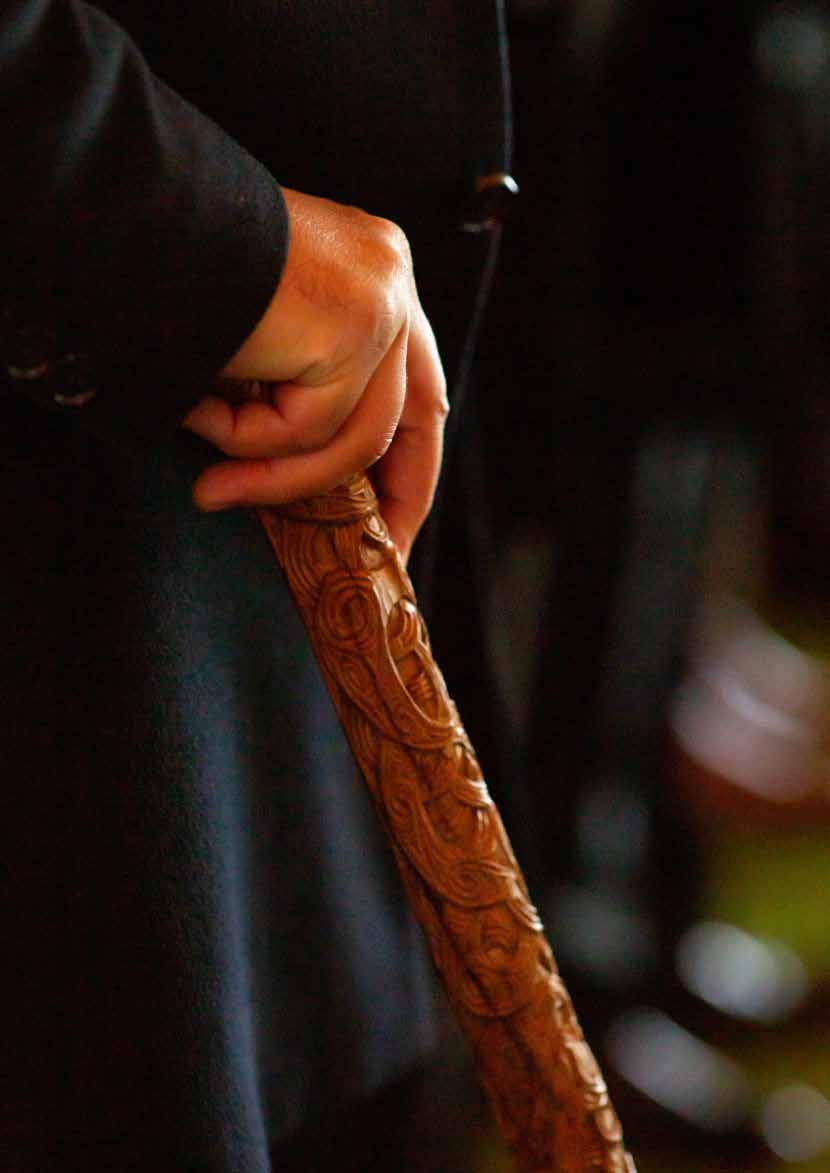




Ko te kaupapa ake o Te Kura Mātauranga Māori ko te whakapiki āheinga, raukaha hoki o ngā whānau kei ngā marae o Aotearoa. Ko ngā hōtaka a te kura he whakakotahi i ngā whānau me ngā hapū ki ngā marae ki te ako i ngā kōrero tuku iho me ngā herenga ki ō rātau whenua, hapū me ngā iwi. Hei urupare ki te popono a te hapori, koinei te huarahi kawe a te Kura ki ngā hinonga ōkawa p ēnei i ngā tarahiti me ngā hinonga ā-ture, e kōkiri nei i te mātauranga Māori me te māramatanga. Waihoki, e whai ana te kura ki te para i te huarahi ki te mātauranga tiketike mā te hunga e whai ana i ngā wawata mātauranga mai te Kaupae 0 ki ngā tohu paerunga.
The School of Iwi Development is dedicated to enhancing the capability and capacity of whānau on marae across Aotearoa. The School offers programmes that bring whānau and hapū members to marae to learn of the histories and kinship ties to their whenua, hapū and iwi. As a response to community demand, the School now offers this approach of delivery to formal entities such as charitable trusts and legal entities driven to advance Māori knowledge and understanding. Furthermore, the school aims to pave the way for higher education for those seeking to pursue further educational aspirations from Level 0 through to degree studies.
He rarapatanga School Snapshot
Tapeke EFTS
Te maha o ngā marae me ngā hapori i whai wāhi
Total EFTS
Number of marae and communities engaged

He ahurei ā mātau hōtaka paetahi nā te tikanga whakaako kaupapa Māori kei roto i ngā whakaratonga hōtaka katoa, hei urupare ki ngā hiahia o ngā tauira. He mea whanake ngā hōtaka me te tirohanga Ao Māori, ka kawea hoki mā ētahi tikanga huhua p ēnei i te kanohi ki te kanohi, te ako tuihono, te noho wānanga me ngā mahi tūwaenga. Ka whakarato raungāwaritanga ēnei tikanga ako mā ngā tauira, e āhei ai ngā tauira mai i ngā takenga me ngā āhuatanga maha kia whai wāhi ki te ako mātātoru. E aro ana te kura ki te kawe i ngā hōtaka kounga nui e whai uara ana i te ao, me te whakamanatanga o ngā tohu i tēnei motu hoki.
He rarapatanga
Ngā tauira kei roto i ngā akoranga tikanga me Te Reo Māori
Sheree Spooner
Our undergraduate programmes are unique in the application of kaupapa Māori teaching methods across all programme provision as a response to student need. Programmes are developed through a Te Ao Māori lens and delivered through a variety of methods, including kanohi ki te kanohi (face-toface), online blended learning, noho wānanga (residential sites) and field-based work locations. These delivery modes provide flexibility, enabling students from a wide range of backgrounds and situations to engage in tertiary study. The School is focused on delivering quality programmes that have accreditation value internationally, as well as national recognition of the qualifications.
School Snapshot
1,466 2,140
Students enrolled in Tikanga or Te Reo Māori courses

E aro ana Te Kura Whakawhānui Mātauranga ki ngā mahi whakaako kounga teitei, te kōkiri i ngā mahi rangahau me te kawe i ngā hōtaka paerunga, me kī ngā Tohu Paerua me ngā Tohu Kairangi. Ko Awanuiārangi anake te Wānanga e taea ai te koke i ngā tauira mai i te Kaupae 0 ki te Kaupae 10 (Kairangi). Ka whakamanea hoki te tohu kairangi i ngā tauira iwi taketake o tāwāhi e hiahia ana ki te whai tohu Kairangi me mātau nā te mārama ki ngā tikanga ako i te mātauranga iwi taketake.
The School of Indigenous Graduate Studies is focused on high quality teaching, research advancement and the delivery of post-graduate programmes, namely Master’s and Doctoral degrees. Awanuiārangi is the only Wānanga that can progress tauira all the way from Level 0 to Level 10 (Doctoral level). The Doctoral level also attracts an international indigenous student market who wish to undertake Doctoral studies with us because of our compatibility of understanding in indigenous education.
He rarapatanga School Snapshot

Ka kawe a Te Kete Tuangahuru i ngā hōtaka akoranga ngaio e tutuki ai ngā hiahia o ngā rōpū o te hapori tūmatanui me te rāngai rangatōpū. Hei mātanga, hei kaiārahi hoki o ngā whakangungu ahurea, me te rongonui hoki mō ngā kawenga mātauranga kounga, e tōminatia ana ō mātau pūkenga ki te āwhina ki te whakatō i te mātauranga Māori ki ngā akoranga ngaio puta noa i te motu.
Te Kete Tuangahuru delivers bespoke professional education programmes to meet the needs of organisations within the public, community and corporate sectors. As experts and leaders in cultural training with a reputation for quality academic delivery, our skills are in demand to help embed mātauranga Māori into professional development around Aotearoa.
Ingoa Hōtaka
Hōtaka NZQF Kaupae Programme NZQF Level
Te Kura Whakawhānui Mātauranga
Programme Name
School of Indigenous Graduate Studies
Tohu Kairangi (PhD) 10
Doctor of Philosophy (PhD)
Tohu Kairangi i te whanaketanga me te kōkiritanga Iwi Taketake 10
Doctor of Indigenous Development and Advancement
Tohu Kairangi i te whanaketanga me te kōkiritanga Māori 10
Tohu Paerua Mātai Iwi Taketatake 9
Tohu Paerua Mātai Iwi Māori 9
Pourewa Tikanga Māori me te Ture 8
Pōkairua Tautara i te Tohuora Hauora Hinengaro me te Waranga 8
Pōkairua Tautara i te Mātai Iwi Māori me ngā Iwi Taketake 8
Pōkaitahi Tautara i te Mātai Iwi Māori me ngā Iwi Taketake 8
Doctor of Māori Development and Advancement
Master of Indigenous Studies
Master of Māori Studies
Postgraduate Diploma in Tikanga and Law
Postgraduate Diploma in Applied Mental Health and Addiction Counselling
Postgraduate Diploma in Mātauranga Māori and Indigenous Studies

Postgraduate Certificate in Mātauranga Māori and Indigenous Studies
Pōkairua o Te Rautoki a Toi 8
Te Ōhanga Mataora: Tohu Paetahi Nēhi Māori 7
Nga Mana Whakairo a Toi: Tohu Paetahi Toi Haka 7
Te Tohu Toi Tangata 7
Te Tohu Paetahi Ako 7
Te Aho Pūtaiao 7
Te Pōkaitahi Reo (Rumaki) 6
Te Aka Putaiao 5
Postgraduate Diploma in Māori Performing Arts
Te Ohanga Mataora: Bachelor of Health Sciences Māori Nursing
Nga Mana Whakairo a Toi: Bachelor of Māori Performing Arts
Te Tohu Toi Tangata: Bachelor of Humanities
Te Tohu Paetahi Ako: Bachelor of Education (Teaching)
Te Aho Pūtaiao: Bachelor of Environmental Studies
Te Pōkaitahi Reo (Rumaki)
Te Aka Putaiao

Te Pōkaitahi Reo Māori (Rumaki) 5
Te Poutairanga Pāho 5
Tiwhikete Takamātau me te Whakarite mō te Mahi 4
Te Pōkaitahi Reo (Rumaki, Reo Rua) 4
Te Pōkaitahi Reo (Rumaki, Reo Rua) 3
Te Pōkaitahi Tikanga 3
Tiwhikete i te Hauora o te Oranga (Aho Tiaki Hauora) 2
Te Pōkaitahi Reo (Rumaki, Reo Rua) 1
Te Pōkaitahi Reo Māori (Rumaki)
New Zealand Diploma in Radio Broadcasting
New Zealand Certificate in Study and Career Preparation
Te Pōkaitahi Reo (Rumaki, Reo Rua)
Te Pōkaitahi Reo (Rumaki, Reo Rua)
Te Pōkaitahi Tikanga
New Zealand Certificate in Health and Wellbeing
Te Pōkaitahi Reo (Rumaki, Reo Rua)
Te Kura Mātauranga Māori School of Iwi Development
Tohu Paetahi Mātauranga Māori 7
Te Pou Hono ki Marae Atea 4
Te Pou Hono ki Mahi Marae 4
Bachelor of Mātauranga Māori
Te Pou Hono ki Marae Atea
Te Pou Hono ki Mahi Marae
Kai Oranga 4 Kai Oranga
Te Pou Hono ki Wairua 4
Te Pou Hono ki Taiao 4
Wai Ora (Kaupae 4) 4
Te Pouhono ki Toi 4
Te Pou Hono ki Wairua
Te Pou Hono ki Taiao
Wai Ora
Te Pouhono ki Toi
Wai Ora (Kaupae 3) 3 Wai Ora
Kai Oranga (Kaupae Tuatoru) 3
Te Waharoa 0
Kai Oranga
Community Education
E whai ana Te Whare Wānanga o Awanuiārangi kia taea e ngā ākonga katoa te whakauru, te whai wāhi, me te angitu i roto i ngā mahi ako. E ū ana mātau ki te whakarato i ngā ratonga tautoko huhua hei āwhina i ngā ākonga i runga i tā rātau ahunga mātauranga kia angitu ai. I aro tonu ā mātau ratonga tautoko ki te whakarato i te wawaonga kaha, te mōhiohio me te āwhina nui rawa ki ngā ākonga - mā roto i a Awhi Tauira: Te Reo o ngā Tauira, Te Whare Pukapuka, te e-Wānanga: Te P ūnaha Whakahaere Ākonga me te Hangarau.
I te 2024, i whakarewaina e mātau a He Ringa Āhuru, he kirimana me Te Whatu Ora ki te whakarato oranga hinengaro me ngā ratonga waranga ki ngā tauira puta noa i ngā wānanga e toru. Ka uru ki tēnei ratonga:
• Ngā ratonga hauora-ataata
• Ngā awheawhe hauora
• Ngā rā hauora (te kawe ratonga ki ngā whare ako)
• Te āhei ki te rongoā Māori, mirimiri, romiromi,
• Te toro atu ki ngā kaiwhakarato.
Ngā Ratonga Ākonga
Nā Ngā Ratonga Ākonga i āwhina i ngā ākonga o nāianei me ngā ākonga takatū, mā te tuku i ngā mōhiohio wawe, hāngai hoki mō ngā akoranga me ngā hōtaka ako, ngā tukanga whakauru, ngā moni taurewa me ngā moni whiwhi, ngā pūtea me ngā karahipi hoki. I tīmataria e mātau a Te Rau Wānanga, he karahipi hou i roto i Te Aka Whaiora, te whakarato i te ngāwaritanga utu waiwai mā ngā ākonga ko ngā hōtaka tohu paetahi hauora.
Awhi Tauira
I whakaratoa e kaitohutohu ngā whakangungu mahi ako me te tautoko i ngā tauira i roto i a rātau mahi akoranga, kia tū ai rātau hei ākonga motuhake. I uru ki tēnei tautoko ngā tautoko ā-tawhiti, mā ētahi huarahi maha p ēnei i te kanohi ki te kanohi, ngā mahi ā-rōpū, mā te ipurangi hoki, hei tauira, te e-Wānanga me te Huitopa.
Pūnaha Whakahaere Akoranga o e-Wānanga (LMS)
I mātua whakarite te LMS i ngā ākonga ki te ako me te whakawhiti kōrero ki ngā pouako i runga i te ipurangi, me te whakarato “āheinga-i-ngā-wāhi-katoa” ki ngā rauemi akoranga me ngā utauta whakawhiti kōrero whaihua.
Awanuiārangi strives to ensure that all students can access, participate in, and succeed in educational programmes. We are committed to providing a range of support services to help students throughout their educational journey toward a successful outcome. Our support services provide a high level of advocacy, information, and assistance to students through Awhi Tauira: Student Learning Support, Tauira Voice, Library and Information Services, e-Wānanga: Learning Management System and Information Technology.
In 2024, we launched He Ringa Āhuru through a contract with Te Whatu Ora to provide mental wellbeing and addiction services to all tauira across the three wānanga. This service includes:
• Tele-health services
• Hauora workshops
• Hauora days (bringing services to campus)
• Access to rongoā Māori, mirimiri, romiromi
• Onboarding service providers
Student Services assist potential and current students by providing timely and relevant information about courses or programmes on offer, enrolment processes, student loans and allowances, and grants and scholarships. We launched Te Rau Wānanga, a new scholarship with Te Aka Whai Ora, providing essential fee relief and support for students enrolled in healthrelated degree programmes.
The team of advisors provide academic tertiary skills training and support to assist tauira with their programme of study and help them become independent learners. This support, including pastoral care, is provided face-to-face, for groups, and virtually via e-Wānanga and Zoom.
e-Wānanga Learning Management System (LMS)
Our LMS enables students to learn and communicate with lecturers online and provides “anywhere-access” to valuable course resources, materials, and communication tools.
Ka whakarato te Whare Pukapuka me ngā Ratonga Mōhiohio i ngā ratonga hei tautoko, hei taunaki hoki i ngā matea rangahau, mātauranga me te ako a ngā ākonga me ngā kaimahi.
Hangarau Mōhiohio
He āwhina i ngā ākonga kia tūhono atu ki te hangarau me te whakauru atu ki ngā rorohiko.
Te Reo o ngā Tauira
Ko tā Te Reo o ngā Tauira, he whakahaere arotake me ngā uiui kia rongohia ai ngā whakaaro o ngā tauira e pā ana ki ō rātau wheako ako. Ko ngā arotakenga he huarahi ki te arotake, te huritao me te whakapai ake i ngā mahi tuku, ngā ratonga me te tautoko, otirā ka uru ki roto te tuku marautanga, ngā kaupapa ako me te aromatawai.
The Library and Information Services provide services to support and enrich the research, education and teaching needs of students and staff.
Our Information Technology team helps our students connect to technology and gain access to computers.
Tauira Voice evaluations and surveys enable tauira to share perspectives on their learning experience. Evaluations help us to review, reflect on and improve areas of delivery, service and support, including curriculum delivery, content, and assessment.
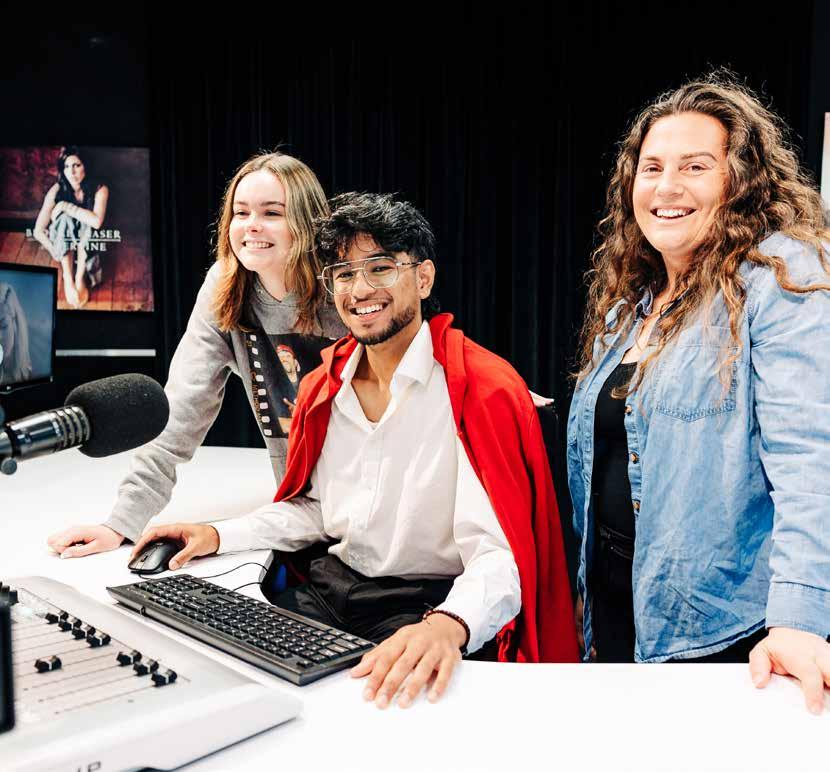
I Te Whare Wānanga o Awanuiārangi e ū ana mātau ki te whakawhānui i tō mātau mōhio ki ō mātau takohanga ā-ture mō te hauora me te haumaru, he whakaiti i ngā mōrea, he tiaki i te oranga o ā mātau tauira, kaimahi, manuhiri me ngā kiripānga, me te whakarite anō kia noho mātāmua te haumaru me te hauora o te taiao puta noa i te tau.
• Ka auau te arotake i tō mātau ū ki ngā ture ngā kaupapahere hāngai.
• Ka tuku ririte i ngā kōrero hou mō ā mātau mahi me ngā kokenga kia mārama te katoa.
• Ka haere tonu te tautohu i ngā āpure tautuku, te tiro i ngā ia hauata me te whakatinana i ngā tikanga whakamauru.
• E aro ana te Komiti Hauora me te Haumaru ki te oranga me te whanaketanga o ngā tikanga hāngai hei āwhina i ā mātau kaimahi me ngā tauira, tae atu ki te Mahere Mahi Hauātanga Tauira.
Ngā hauata
14 ngā hauata i pūrongotia; e rua ngā mea tino taumaha, engari i wawe te whakamaurutia. Ko ētahi atu 12, he wharanga nā te mania, te tū hapa, ngā hauata hauora whaiaro me te haumarutanga, te whakaara rānei i ngā matohi ahi.
Te whakangungu
I whakahaeretia he whakangungu whakatahi ohotata me te pūrongo hauata ki runga ipurangi mā ngā kaimahi. Ka kawea te whakangungu Āwhina Tuatahi mā ngā akoranga tūmatanui. Ka whakaritea ngā whakangungu oranga, te P ūnaha Whakahaere Hauata (CIMS) me te whakangungu Whakatau Ratonga Kiritaki (kaimahi aroākapa) kia tū hei te 2025.
Akoranga Ngaio
Ka whakarato a Awanuiārangi i ngā pūtea akoranga ngaio i runga anō i ngā paearu kua whakaritea, hei tautoko i ngā kaimahi kia whiwhi tohu i ā rātau ake mahi tohunga. I te 2024 i heke te maha o ngā kaimahi i whiwhi pūtea whakapiki mātauranga mā te 6% ki te 34 (2023:36). He nekehanga nui i kitea i ngā kaimahi i te whai i ngā tohu paerunga, tohu teitei ake, i piki mai i te 56% i te 2023 ki te 74% i te 2024, otirā e whakaata ana tēnei i te pakari o te pūmau ki te hiranga o te ako, me te kōkiri i ngā āheinga whaiaro i roto i te whare wānanga.
At Te Whare Wānanga o Awanuiārangi, we are committed to deepening our understanding of legal health and safety responsibilities. Actively reducing risks, protecting the wellbeing of our tauira, kaimahi, manuhiri, affiliates and ensuring a safe and healthy environment remained our top priority throughout the year.
• We routinely review our adherence to relevant legislation and policies.
• We deliver frequent updates on our activities and progress to keep everyone informed.
• We continuously identify compliance gaps, monitor incident trends, and implement proactive mitigation measures.
• The Health & Safety Committee is focused on wellbeing and developing relevant initiatives to assist our kaimahi and tauira, including our Tauira Disability Action Plan.
There were 14 logged incidents; two were potentially serious, which were mitigated immediately where practicable. The other 12 were injuries from slips, trips and falls, personal health incidents and security or fire alarm activations.
Emergency evacuation and incident reporting training was conducted online for kaimahi.
First Aid training is now being delivered via public courses. Wellbeing training, Coordinated Incident Management Systems (CIMS) and Customer Service (frontline staff) Deescalation training is to be scheduled for 2025.
Awanuiārangi provides annual professional development funding based on established criteria to support staff in gaining qualifications in their respective fields of expertise. In 2024, the number of staff receiving funding for higher-level study decreased by 6% to 34 (2023: 36). There was a significant shift in the proportion of those staff undertaking postgraduate level or higher qualifications, rising from 56% in 2023 to 74% in 2024, reflecting a stronger commitment to academic excellence and advanced professional capabilities within the institution.
I tīmataria e mātau tētahi hōtaka akoranga ngaio hou hei tautoko i ā mātau kaimahi matatau ki te reo Māori i Awanuiārangi. Koinei te wā tuatahi kua whai akoranga ngaio reo Māori te hunga matatau i Awanuiārangi, nā reira me āheinga tēnei ki te whakanui i te raukaha o ā mātau kaimahi me tō mātau hautūtanga pakari i te mātauranga o te ao Māori. He mea whakawhanake e Tākuta Te Hauāuru Tahi-Rangihau, he pouaka matua, ko ētahi o ngā rauemi mō tēnei hōtaka ko tana whakapae Kairangi tonu a He Whare Mōteatea mō ngā Mātauranga Waiata Tūhoe, te pukapuka oro tuatahi o tētahi tuhinga whakapae, me te tuatahi kia kōrerotia ki te reo Māori katoa. I whakaurua hoki e ia tētahi atu taonga ahurea: he taupānga waiata, i poua ki tētahi puka iti o “He Taonga” i hangaia e Te Mākarini Temara, mā ngā kaimahi o Awanuiārangi.
We introduced a new professional development programme to support our te reo Māori speaking employees at Awanuiārangi. This is the first time that te reo Māori professional development has been offered for fluent speakers at Awanuiārangi so it’s a chance to celebrate the capability of our kaimahi and our leadership in te ao Māori education.
Developed by Dr Te Hauāuru Tahi-Rangihau, a senior lecturer, resources used for the programme delivery included her PhD thesis, He Whare Mōteatea mō ngā Mātauranga Waiata Tūhoe, the first audio book thesis and the first to be narrated entirely in te reo Māori. She also introduced another cultural tāonga: a waiata app, based on the “He Tāonga” booklet created by the late Te Mākarini Temara for Awanuiārangi staff.


Hei te 31 o Tīhema 2024:
Tūnga Mahi Kaimahi
Kāhui Whiwhi Mahi
Kaimahi
As at 31 December 2024:


Kei roto i te Education and Training Act 2020 tētahi herenga hou ki te whāki i te utu ki ngā kaimahi i te taha ki ngā wehenga utu. Ka pā tēnei ki ngā whare wānanga auraki, ngā wānanga, tae atu ki ngā wānanga momo B.
Ko te tapeke o te pūtea i utua i tua ake o te $100,000:
Rāngai Utu
$100,000
te maha
te maha
The Education and Training Act 2020 includes a requirement to disclose employee remuneration banding information. This is applicable to universities and wānanga, including category B wānanga.
Total remuneration received that is or exceeds $100,000:

Te tapeke o ngā utu keremutu kei tua o te $10,000:
Total cessation payments that is or exceeds $10,000: Remuneration Band 2024 Number
- $29,999 1 -
- $39,999 2 1
- $49,999 1
hui katoa 6
Te utu i te Mana Whakahaere
Anei te tahua i utua, hei utu rānei i ngā mema o Te Mana Whakahaere i te tau:
Te Hōnore Kaiwhakawā Mātāmua
Layne Harvey (Tumuaki) 40,000 30,794
Rauru Kirikiri (Tumuaki-Tuarua) 22,500 19,418
Ahorangi Ahurei Linda Tuhiwai
Smith ( Tumuaki-Tuarua) 22,500 18,406
Aubrey Temara 20,000 15,591
Charles Tawhiao 20,000 15,591
Takuta Brian Tunui 20,000 15,591
Kaiwhakawā Craig Coxhead 20,000 15,591
Materoa Dodd 20,000 15,591
Natalie Coates 20,000 15,591
Tania Rangiheuea 20,000 15,591
Tuihana Pook 20,000 15,591
Tapeke o te utu i te Mana Whakahaere 245,000 193,346
Council Member Remuneration




Ahakoa kāore te 2024 i pā kinotia e te urutā ā-ao, i ngā rutunga taiao rānei pērā i te 2020-2023, i kitea tonutia ōna uauatanga. He pānga nui tō te pikinga utu noho ki te āhei o ngā tauira ki te whai i te mātauranga, ā, kua piki nga utu kawenga ako, inakoa rā ki ngā wāhi tuawhenua. Ahakoa tēnei, he teitei tonu te popono ki ō mātau hōtaka ako, otirā i piki te utu ki te whakahaere ki te whakarato i ngā Kaupae 7-10 (paerunga) me ngā Kaupae 3-7 (paeraro).
Ahakoa te pānga ki te Tairāwhiti o Huripari Gabrielle i te pane o te 2023, e ū tonu ana mātau ki te rohe, otirā he maha ngā māmā i whakatutuki i tō mātau hōtaka Takamātau Mahi i te hiku o te 2024, ā, i kuhu ki Te Ōhanga Mataora (Nēhi) i te 2024. I kitea hoki te whakatuwheratanga o tō mātau pokapū kaimahi me ngā tauira i Te Wairoa i te 2024, hei tautoko i ngā tauira i te rohe o Te Wairoa. Kua kitea te angitu o tēnei kawenga, ā, he popono anō kia kawea tēnei momo ki ētahi atu rohe tuawhenua ot e motu. Hei te 2025 ka whakarewaina tētahi pokapū pēnei ki Te Hiku o te Ika ki Kaitaia.
I hoki mai anō te popono i te 2024 mō te kawenga ako kanoniki-te-kanohi, i te wā e whakamahi ana i ngā hangarau pēnei i te Zoom hei kīnaki i ngā kawenga hōtaka ako.
I whiwhi tonu te rāngai Wānanga i te pūtea taupua i tīmataria e TEC me MOE i te 2022 i te 2023 me te 2024. Ko tēnei pūtea i wehea i te tuatahi ki te $2m hei whakapiki i te āhei rangahau me te $6m hei tautoko i ngā kawenga, inakoa ki ngā wāhi tuawhenua me ngā wāhi mamao. I whakakotahitia tēnei i te 2024, i te wā e whakaritea ana he tauira tuku pūtea hou me te MOE, mā roto i Te Hono Wānanga. Nā te pōtitanga i te wāhanga tuarua o te 2023 me te urunga o te Kāwanatanga hou, he moroiti noa ngā kōrero mō tētahi tauira tuku pūtea hou, i te wā i āta tūrakina a Te Pūkenga me ngā whiriwhiri kōrero a te University Advisory Group.
Ko te tikanga i mua o te pūtea tuatahi, he whakanui i te tikanga whakapā atu a te Wānanga ki āna tauira, otirā i kite ngā kaituku pūtea he nui ake te utu o tēnei tikanga kawe, tēnā i ētahi atu tikanga kawe i rō akomanga. Ka whakamahia tonu tēnei pūtea ki te whakapiki i tō mātau āhei rangahau mā te utu i ngā awheawhe me ngā huihuinga, hei akiaki i ngā hua o te rangahau, me te whakapiki hoki i te āhei i roto tonu i te tari Rangahau. Kua whakapiki tēnei i tō mātau āhei ki te aroturuki me te whakahaere i ngā kirimana nui kua whakawhiwhia kētia mai, me te āhei ki te tono kirimana hou, pēnei i ā mātau kirimana Marsden tuatahi, i whakawhiwhia i te hiku o te
While 2024 was not impacted by a global pandemic or natural disasters like the years 2020 - 2023, it did present its own challenges. The cost-of-living crisis has impacted the ability of tauira to continue their studies and the costs of delivery have increased, especially to regional and rural areas. Despite this, demand for our programmes was high with increased funding required for both Level 7-10 (degree and above) and for Level 3-7 (non-degree) provision.
Despite the impact to the East Coast from Cyclone Gabrielle in early 2023, our dedication to the region has continued, with a number of young mums who completed our Career Preparation programme at the end of 2023 progressing into our Bachelor of Health Science (Nursing) programme in 2024. 2024 also saw the opening of our Wairoa staff and student hub to support all students in the Wairoa region who have been studying with us. The model of delivery has proved to be a success and there is demand for it to be rolled out in other rural regions of the country. 2025 will see the launch of a similar model in the Far North in Kaitaia.
2024 also saw demand returning for face-to-face delivery whilst still utilising platforms such as Zoom to enhance and supplement the delivery of our programmes.
The interim funding that TEC and MOE commenced in 2022 for the Wānanga sector continued to be received in both 2023 and 2024. The funding was initially split as $2m for building research capability and $6m to support delivery, especially in rural and remote areas. This was combined into one fund during 2023, whilst a new funding model was to be co-constructed with MOE through Te Hono Wānanga. Due to the election in the latter half of 2023 and a new Government coming to power, there has been little to no discussions on a new funding model whilst the disestablishment of Te Pūkenga and the University Advisory Group consultation has been occurring.
The additional funding was originally to recognise the way that Wānanga engage with their students, with funders noting that our approach incurs higher costs of delivery than traditional modes of classroom delivery. This funding continues to be used to build up our research capability through funding workshops and symposiums, encouraging the benefits of research, as well as building up internal capability within the Research department. This has increased our ability to monitor and maintain significant contracts already won as well as to

2024. Ka tautoko hoki tēnei pūtea i ngā kawenga ki ngā wāhi tuawhenua me ngā wāhi mamao, pēnei i Te Wairoa me ngā hapori o te Hiku o Te Ika, tae noa ki te Pū o te Tonga, ko te nuinga ka tū ki ngā marae.
Ko te whakanuitanga o ngā EFT me te pūtea e kōrerotia ana i tēnei arotake, me tautuku ki ngā paerewa kaute o te Public Benefit Entity (PBE). Ko ngā EFT ka kōrerotia i Te Pūrongo o ngā Tutukinga Ratonga e kōrero ana mō ngā ture tahua pūtea TEC, nā reira ākene pea he rerekē.
I tipu te moniwhiwhi ki te $4.21m mai i te 2023, e whakaata ana i tō mātau tipuranga hei whakahaere, me te pikinga o ngā EFT. Ko ngā EFT tūturu i kerēmetia i te tau he 2,492, he 80 (3%) teitei ake mai i te 2023 engari i raro i te matapae i whakatauhia mō te tau. I whai hua hoki mātau i te kauhuri ki te rapu ara moniwhiwhi hou mā Te Kete Tuangahuru me ngā akoranga ngaio, otirā i puta ngā hua i ngā huamoni teitei i te tīmatanga o te 2024, hei whakapiki i tā mātau huamoni me ngā pūtea haumi i raro i te Tauākī Kaupapahere me ngā Whāinga Haumitanga (SIPO). I tīmata ā mātau mahi SIPO i te 2023, me te $5m i āta haumitia i te roanga o te 2023, ā, tae noa ki te mutunga o te 2024, ko ngā hua tūturu me ngā hua tūturu-kore nō te roanga o te wā o te haumitanga, ka eke ki te $0.64m (pikinga o te 12.9% o te haumitanga katoa).
I kitea ngā penapena utu a Awanuiārangi o te $4.70m (9%) atu ki te mahere pūtea, engari i piki ngā utu mā te $4.72m i ngā utu o te 2023. He hua pai tēnei, inakoa nā te pikinga o ngā utu pikiutu tukipū, i hua ake nā te pikinga o ngā utu noho, i piki ai hoki ngā nama me ngā utu kaimahi. I whakamahi tonu a Awanuiārangi i ngā tikanga hanumi ki te kawe i ngā akoranga, ko ētahi i whakamahi i te Zoom (tuihono, kanohiki-te-kanohi) hei penapena pūtea mō ngā utu whare ako mō te akoranga i ia wiki, me te whakamahi i ngā kawenga ā-noho, me te ū tonu ki te kounga o ngā mahi kawe akoranga. I kitea ngā kokenga whakarunga i te 2022 me te 2023 o te utu o ngā papanoho, i whakaatatia tēnei hei wāhanga o ngā uaratanga papanoho taunoa me ngā uaratanga i waho o te huringa. Kua tau haere ngā uaratanga o te 2024 i muri i tētahi arotake e tā mātau Mātanga Uara, ā, e titiro ana a Awanuiārangi ki te hoki ki ngā uaratanga papanoho e rua i te tau hei te 2025. E tōai ana ēnei pikinga uaratanga i te tūnga ahumoni pakari o te rawa totoka me te puka kaute pūtea a Awanuiārangi.
win new work, such as our first ever Marsden contracts, which were awarded in late 2024. The funding also supports delivery in rural and remote areas, like Wairoa and communities from the Far North down to the South Island, mainly through maraebased delivery.
The recognition of the EFTS and revenue referred to in this review must comply with the Public Benefit Entity (PBE) accounting standards. The EFTS discussed elsewhere in the Statement of Service Performance refer to the TEC revenue funding rules and may therefore be different.
Revenue grew $4.21m on 2023, reflecting our growth as an organisation and the increase in EFTS. Actual EFTS claimed in the year were 2,492, which were 80 (3%) higher than 2023 but below the budget set for the year. Revenue also continued to benefit from us pivoting into new revenue streams via Te Kete Tuangahuru and professional development, with benefits emanating from higher interest rates at the start of 2024 increasing our interest and investment income made under our Statement of Investment Policy and Objectives (SIPO). Our SIPO activities commenced in 2023 with $5m invested gradually over the course of 2023 and by the end of 2024 with gains both realised and unrealised across the life of the investment equalling $0.64m (12.9% increase on total investment).
Awanuiārangi made cost savings of $4.70m (9%) against budget, but costs were $4.72m higher than 2023. This is a positive achievement, especially against high inflationary costs emanating from a cost-of-living crisis leading to higher operational costs and wage inflation. Awanuiārangi continued to use blended methods of delivery with some classes utilising Zoom (on-line, face to face teaching) to save on external facility costs for a class a week as well as utilising face to face noho delivery, without compromising the quality of delivery.
Both 2022 and 2023 saw an upward movement in property prices that was reflected as part of both our normal and out of cycle property valuations. 2024 valuations have settled following a review by our Valuer and Awanuiārangi looks to make a return to bi-annual property valuations in 2025. These upward movements in valuations continue to reinforce the already strong financial position of the solid asset and cashbacked balance sheet of Awanuiārangi.

Te Pūtea me ētahi atu Rawa Ahumoni ($000)
5-Year Financial Summary
Tom
Ford
TUMU AHUMONI
BA (Hōnore), FCCA
Te Whare Wānanga o Awanuiārangi
Tom Ford CHIEF FINANCIAL OFFICER
BA (Hons), FCCA
Te Whare Wānanga o Awanuiārangi
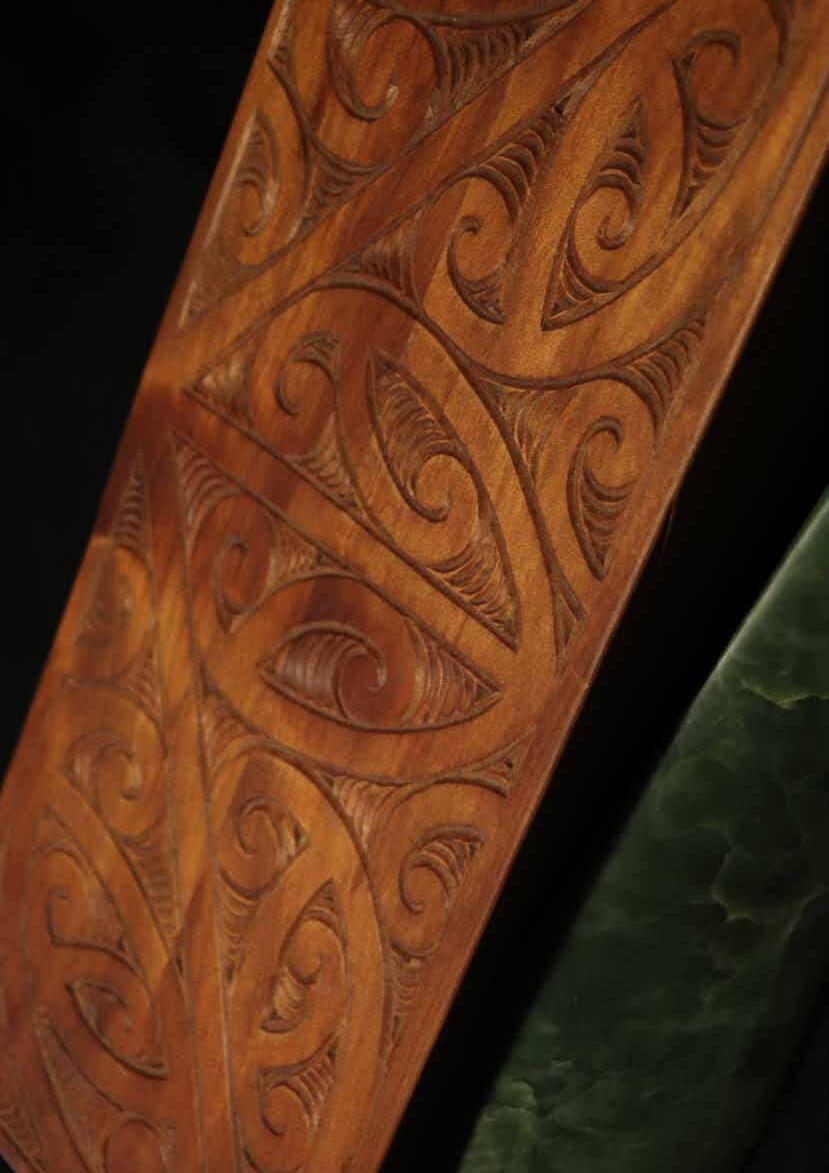

We are responsible for the preparation of the Te Whare Wānanga o Awanuiārangi financial statements and statement of service performance, and for the judgements made in them.
We are responsible for establishing and maintaining a system of internal control designed to provide reasonable assurance as to the integrity and reliability of financial and non-financial reporting.
In our opinion, these financial statements and statement of service performance fairly reflect the financial position and operations of Te Whare Wānanga o Awanuiārangi for the year ended 31 December 2024.
TUMUAKI
PhD (AUT), D.MD (Hon. Causa), MComLaw, LLB (Tāmaki Makaurau)
Ngāti Awa, Rongowhakaata, Te Aitanga a Māhaki, Te Whānau a Apanui, Ngāti Kahungunu ki Te Wairoa
CHAIRPERSON
PhD (AUT), D.MD (Hon. Causa), MComLaw, LLB (Auckland) Ngāti Awa, Rongowhakaata, Te Aitanga a Māhaki, Te Whānau-ā-Apanui, Ngāti Kahungunu ki Te Wairoa
TUMU WHAKARAE
PhD (Tāmaki Makaurau), BA (Hōnore), B. SocSc, Dip Tch (Waikato), OAMLP (Oxford)
Tūhoe (Ngāti Tāwhaki), Ngāti Awa
CHIEF EXECUTIVE OFFICER
PhD (Auckland), BA (Hons), B. SocSc, Dip Tch (Waikato), OAMLP (Oxford)
Tūhoe (Ngāti Tawhaki), Ngāti Awa
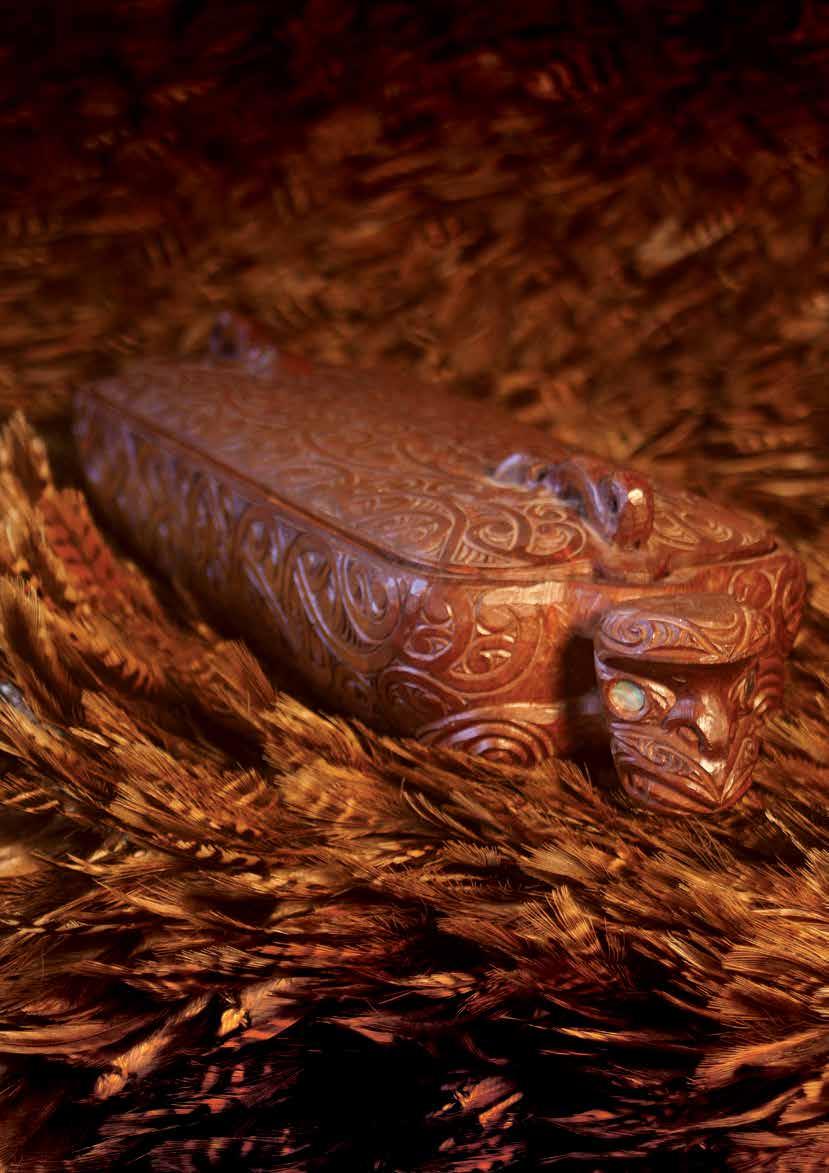

Why we exist?
We acknowledge the visionaries, leaders and communities who have contributed to the development of Te Whare Wānanga o Awanuiārangi (Awanuiārangi) over the years. The idea of a wānanga was first conceived at a hui held at Poroporo Marae in Whakatāne over thirty years ago. It was thought that through the establishment of Awanuiārangi, a mechanism would be created through which the hapū of Ngāti Awa (and Mataatua more broadly) might rebuild their cultural knowledge base and, by doing so, create pathways towards a more certain and prosperous future.
While our programmes now extend much further than the tribal boundaries of Ngāti Awa and other Mataatua iwi, our commitment remains the same in terms of supporting whānau, hapū, iwi and community aspirations for development through transformative education that embraces culture, identity, language and knowledge. This commitment is encapsulated in our vision:
Rukuhia te mātauranga ki tōna hōhonutanga me tōna whānuitanga.
Pursue knowledge to the greatest depths and its broadest horizons.
Awanuiārangi is one of three wānanga operating in Aotearoa. We serve our communities by addressing inequities in access to tertiary education for our tauira, their whānau, and the broader community. Despite our significant contributions to social, cultural, and economic development, we face the persistent challenge of an educational framework that does not fully prioritise te ao Māori worldviews. At Awanuiārangi, we provide tauira-centric programmes that empower learners to retain their identity while acquiring essential skills for educational and personal success.
Our indigenous, international perspective and strong research focus allow us to be effective change agents, driving narrative change in communities with historical challenges in the education system. Our goal is to foster cultural citizenship and holistic development within an indigenous, inclusive education framework. As a whānaucentred organisation, we acknowledge that all individuals belong to a collective, and our response to community needs is comprehensive. By reclaiming cultural identity through the revitalisation of te reo me ōna tikanga, we address the equity gap and overcome the cultural deficit historically faced by Māori learners.
What we intend to achieve?
This Statement of Service Performance (SSP) illustrates the contributions made in 2024 towards achieving our vision and Te Rautaki. It also outlines the performance of Awanuiārangi against the educational commitments set in our 2022 - 2024 Investment Plan, as negotiated with the Tertiary Education Commission (TEC). This plan supports the objectives of the Tertiary Education Strategy (TES), which articulates the Government’s current and mid-term priorities, as well as the long-term strategic direction for tertiary education, addressing economic, social, and environmental goals, and the aspirations of Māori and other population groups. The performance commitments are based on an Outcomes Framework developed as part of Te Rautaki, our strategic plan. Te Rautaki details our goals, priorities, and the actions and outcomes to be measured over time.
The Outcomes Framework, as illustrated on the following pages, is based on four key outcome indicators of success, with each outcome linked to our six interrelated strategic goals. Each outcome has a set of metrics identified collectively by our Council, management, and data experts to ensure a meaningful mix of performance measures were selected. Our framework incorporates our values (ngā ūara) of manaakitanga, whanaungatanga, kaitiakitanga, pūmautanga, and tumu whakaara, co-constructed with our staff and foundational to all our activities and practices as we strive for successful outcomes for our students and the organisation. By delivering on Te Rautaki, Awanuiārangi supports the academic aspirations of all tauira and our distinct contribution to the social, cultural, and economic outcomes of Aotearoa. Awanuiārangi acknowledges that its success and the success of its learners depend on understanding the characteristics necessary to create meaningful, sustainable change.

Rukuhia te mātauranga ki tōna hōhonutanga me tōna whānuitanga.
Pursue knowledge to the greatest depths and its broadest horizons.


Successful educational achievement, confident in culture, language, and identity
Strong, self-determining whanau, hapū, iwi and communities
• Tauira are successfully completing qualifications
• Tauira have the skills and knowledge valued by industry and the economy
• Tauira are competent and confident in engaging with Te Ao Māoriahuatanga and tikanga Māori, Mātauranga Māori, te reo Māori
• Whānau, hapū, iwi and communities are participating in education relevant to their needs and aspirations, in their time and place
• Tauira are making positive contributions to their whānau, hapū, iwi and communities
• Relationships are purposeful and demonstrate a positive impact for all parties
1 2 3
TEACHING AND LEARNING
RELATIONSHIPS RESEARCH AND INTERNATIONAL
Pursue knowledge to the greatest depths and its broadest horizons.
What are the outcomes we contribute to for the benefit of our tauira, their whanau, hapū, iwi and communities
Research excellence and scholarship that accelerates Māori advancement

A distinctive, transformative educational experience that maximises the opportunity for all to succeed
What impact do we want to have? What does success look like?
• Greater participation in postgraduate scholarship
• Improved capability within whānau, hapu, iwi, and communities to engage in research
• Increased external funding to support Māori and Indigenous research priorities
• Research informs the development of innovative solutions to challenges facing Māori and Indigenous communities
• Tauira are positive about their educational experiences at Awanuiārangi
• Tauira are progressing to higher level study
What will we deliver to make an impact?
• Awanuiārangi is financially responsible, operates efficiently and meets performance expectations aligned to our strategic goals
• Awanuiārangi provides high quality assets and infrastructure to support outstanding teaching and learning, research and service to our communities
• The organisational culture of Awanuiārangi promotes excellence and innovative practice
4 5 6
ORGANISATIONAL PERFORMANCE ASSETS AND INFRASTRUCTURE
What resources will we use?
CULTURE OF EXCELLENCE AND INNOVATION

This SSP is prepared for Awanuiārangi for the year ended 31 December 2024 and was authorised for issue by Council on 30 April 2025. The relevant legislation governing the requirement of reporting service performance includes the Education and Training Act 2020 and the Crown Entities Act 2004. Awanuiārangi is a Tertiary Education Institution and a Wānanga established under section 268 of the Education and Training Act 2020.
The SSP of Awanuiārangi has been prepared in accordance with the requirements of the Crown Entities Act 2004 and the Education and Training Act 2020, which include the requirement to comply with generally accepted accounting practice in New Zealand. Awanuiārangi has designated itself as a public benefit entity (PBE) to comply with generally accepted accounting practice. The SSP complies with the requirements of Tier 1 PBE financial reporting standards, which have been consistently applied. As a result, the service performance information presents a comprehensive set of measures and data, providing a holistic overview of both financial and non-financial performance of Awanuiārangi.
The performance measures were selected to cover both quantitative and qualitative assessments of progress towards the strategic goals outlined in Te Rautaki, as well as the metrics and targets developed in consultation with the TEC as part of the investment plan process. The Outcomes Framework is based on indicators of success, with each outcome linked to six interrelated strategic goals. Each outcome has a set of metrics identified collectively by Council, management, and data experts, ensuring a meaningful mix of performance measures.
The measures can be reported accurately and promptly.
The chosen measures provide a broader view of performance than the educational performance commitments prescribed by TEC, covering the full scope of outputs and services. This includes measures that reflect our unique contribution to Māori achieving educational success as Māori.
In preparing the SSP, Awanuiārangi has exercised professional judgement in applying reporting standards and has made estimates and assumptions about future events. To ensure clarity in presentation, these judgements include considerations regarding comparative information to maintain consistency in reporting. It should be noted that these estimates and assumptions may vary from the actual results achieved in the future.
All measures based on enrolments are sourced from our internal student management system using year-end figures. These are consistent with those submitted to the Tertiary Education Commission via the 31 December Single Data Return (SDR). This data should be treated as interim, as the final year-end enrolment report submitted for funding and statistical purposes by the government is finalised after the submission of our April 2025 SDR
All student ethnicity measures are based on a system that allows students to specify up to three ethnicities that they identify with, Māori, Pasifika and non-Māori and non-Pasifika. Many students identify with more than one ethnicity and as a result, the percentages across the three ethnic groups may sum to more than 100%.

All Educational Performance Indicator (EPI) measures for course completion, retention, and participation are based on the EPI Commitments agreed upon with TEC in the Investment Plan 20222024. The results utilise enrolment data from the 31 December SDR. This is the most recent information available at the time of the Annual Report’s publication. However, EPIs are not officially finalised until submission of the April 2025 SDR.
The reporting of these measures in the current year utilises the most recent information available at the time of preparing the Annual Report and the applied methodology adheres to the guidelines outlined in the Methodology: Educational Performance Indicators for Tertiary Education Organisations issued by TEC.
The acronyms EFTS and DQ funding are used throughout the Annual Report. EFTS stands for equivalent full-time students, while DQ stands for Delivery + Qualification. DQ funding refers to the three volumebased funds that represent the Government’s primary contribution towards the costs of tertiary education organisations’ teaching and training of learners. Previously, DQ funding was known as the Student Achievement Component.
Comparative information for the prior year reflects data published in previous annual reports to ensure a fair comparison at a similar point in time. Historical values are not restated unless there has been a significant change between the final measures and those published in the prior year. An absolute change in value exceeding 10% is considered material, while any change less than 10% is deemed immaterial.
The Learner Success Unit conducted the student survey using SurveyMonkey software, a widely utilised survey tool. This unit operates independently of the Academic Registry department. The Tauira Voice Survey offers an overview of teaching and learning practices based on feedback from students who completed specific courses during the year. The survey was administered from 14 November 2024 to 10 January 2025, targeting 4,691 students (compared to 6,594 in 2023) across all levels of study who completed programmes during the 2024 academic year. The survey achieved a response rate of 14% (compared to 10% in 2023), with 654 valid responses (compared to 548 in 2023) and a margin of error of 4% at the 95% confidence level.
Despite the inherent risk of low response rates, surveys remain invaluable for gathering direct insights from students. They provide a direct feedback channel that aids in understanding and enhancing teaching and learning practices. The annual Tauira Voice Survey enables the identification of areas of strength and opportunities for improvement based on the experiences of those who have completed specific courses. The feedback collected, even from a small percentage of respondents, can reveal significant trends and inform decision-making processes to enhance the overall educational experience.

Staff measures reported as of 31 December in the Equal Employment Opportunities section of this Annual Report are based on data recorded in our Human Resources Information System (HRIS). Demographic measures are determined by the proportion of staff who identify with a particular ethnicity or gender as recorded in our HRIS. It is important to note that staff may identify with more than one ethnicity.
The targets and results for all measures are derived from the 20222024 Investment Plan, which was negotiated with TEC. This plan encompasses targets for measures based on our Outcomes Framework and TEC Commitments. No additional targets or measures have been formally established or approved during the reporting period, and the measurement methodology remains unchanged.
A key concept introduced in PBE FRS 48 is that financial statements and service performance information are both essential components of general-purpose financial reporting. The Annual Report highlights financial performance and service performance as critical elements. It integrates service performance information with the financial statements to provide a comprehensive overview of activities.
Awanuiārangi allocates costs to two output classes: teaching and learning, and non-teaching (including research and non-research contracts). An activity-based costing model is not employed. Instead, direct costs, such as the actual costs of conducting activities, are fully allocated to the respective outputs and activities. Indirect costs, including administration, utilities, and information technology support, are allocated proportionally based on direct staff costs. This allocation method aims to ensure transparency and accountability in financial reporting.
The revenue generated and associated costs for these outputs are detailed in the following Statement of Costs and Outputs. This captures the financial aspects, aiming to meet service performance reporting standards and informing stakeholders about fiscal health and operational efficiency. It illustrates the revenue and expenses for the 2024 fiscal year, demonstrating a commitment to financial transparency.

Statement of the cost of output for year ended 31 December 2024
* Non-Teaching revenue excludes bank interest, gains on manged funds.
Reconciliation to statement of comprehensive revenue and expense

Ka whakamōrahi a Awanuiārangi i te angitū ākonga mā te hoahoa ngātahi i ngā hōtaka whaitake, ka tukuna e ngā kaimahi matatau, pūkenga nui hoki, me te whakatinana i ngā aratau ako auaha me ngā hangarau.
Awanuiārangi will maximise student success by designing relevant co-constructed programmes, delivered by knowledgeable and skilled staff, applying innovative learning modes and technologies.
Tauira are successfully completing qualifications
Tauira have the skills and knowledge valued by industry and the economy
Proportion of qualification completions at Level 1-4
Proportion of graduates who report a positive employment-related outcome
Graduates not specifically Identified in survey*
Tauira are competent and confident in engaging with te ao Māoriahuatanga and tikanga Māori, mātauranga Māori, te reo Māori
Proportion of tauira who report an increased understanding and confidence in engaging with te ao Māori
* Due to changes in the survey methodology in 2023 we were unable to differentiate between graduates who completed the full qualification and those who completed only course components.

These measures demonstrate that our educational programmes are effectively meeting the needs and aspirations of tauira and their communities, while also supporting the broader goals of cultural development and economic contribution. All targets were reset in the 2022-2024 Investment Plan to reflect a more realistic approach to achieving success across all performance indicators. The accomplishments related to these measures demonstrate the effectiveness of the programmes and the commitment to enhancing educational attainment.
In 2024, 71% of tauira successfully completed their qualifications at Levels 1 to 4, surpassing our target of 70% and significantly improving upon the 2023 result of 64%. This notable advancement can be attributed to enhanced support services that provided personalised assistance to tauira. The continuation of mixed-mode delivery offered greater flexibility in learning schedules, allowing tauira to effectively balance their studies with other commitments. Furthermore, the increased availability of resources played a crucial role in enabling students to achieve their qualifications.
In 2024, 90% of graduates reported a positive employment-related outcome, surpassing our target of 78%. One of the key drivers of this outcome is that our programmes are underpinned by āhuatanga and tikanga Māori, which fosters a sense of belonging that enhances confidence in our tauira. A total of 256 graduates tauira responded to our survey. Of these respondents, 119 indicated “Tika tonu” (Absolutely), 77 indicated “Tika” (Yes), and 35 indicated “Taua āhua tonu” (Somewhat). Additionally, 24 graduates responded with “Kahore” (No), and there was one non-respondent.
The proportion of tauira who reported an increased understanding and confidence in engaging with te ao Māori decreased slightly from 98% in the previous year to 97% in the current year. Despite this marginal decline, maintaining a 97% result demonstrates the effectiveness of our programmes and teaching methodologies to exceed our target.

Ka whakarite, ka tiaki hoki a Awanuiārangi i ngā hononga whai kiko e kōkiri ana i ngā wawata mātauranga o ō mātou hapori me te whai wāhi ki tētahi whanaketanga whaihua o te pūnaha mātātoru.
Awanuiārangi will establish and maintain meaningful relationships that advance the educational aspirations of the communities we serve and contribute to positive development of the tertiary education system.
Whānau, hapū, iwi and communities are participating in education relevant to their needs and aspirations, in their time and place
Tauira are making positive contributions to their whānau, hapū, iwi and communities
Relationships are purposeful and demonstrate a positive impact for all parties
Number of marae/communities that Te Whare Wānanga o Awanuiārangi deliver programmes to
Proportion of tauira who report that the skills and knowledge gained through study are making a positive difference to their whānau, hapū, iwi and communities
Proportion of stakeholders who report a satisfied/very satisfied rating with our programmes and services

Overall, performance against these measures demonstrates that we are making a significant and positive impact in the communities we serve, despite the challenges faced. These indicators validate that our programmes effectively meet the needs and aspirations of our communities, highlighting the importance of purposeful relationships that benefit all parties involved.
In 2024, we delivered programmes to 168 different marae or community venues across Aotearoa. This is a significant increase from 119 in the previous year and this growth reflects our continuous efforts to support learning within our communities in meaningful and relevant ways. It also indicates that our communities have recovered from the pandemic, which previously made delivering community and marae-based programmes difficult. We are making substantial progress towards returning to previous levels of engagement in our communities.
Equipping tauira with the necessary skills and knowledge to contribute positively to their wider communities is important and 98% of our tauira report that their study enables them to make a positive contribution to their whānau, hapū, iwi, and communities. This exceeds our target of 95% and represents an improvement on last year’s result of 96%.
We achieved an 89% positive relationship impact rating from survey respondents, which is below our target of 92% and represents a decrease from 2023. This measure reflects our commitment to continuous improvement and highlights areas where we can further strengthen our engagement with stakeholders.

Ka waihanga mātauranga tiketike hou a Awanuiārangi mā te rangahau hirahira me te mahi ngātahi ā-ao e whakahohoro ana i te kokenga whakamua o te Māori
Awanuiārangi will generate new knowledge and scholarship, through research excellence and international collaboration that accelerates Māori advancement.
Greater participation in postgraduate scholarship
Improved capability within whānau, hapū, iwi and communities to engage in research
external funding to support Māori and indigenous research priorities
Research informs the development of innovative solutions to challenges facing Māori and indigenous communities
Proportion of research degree EFTS (DQ L3 +)
Proportion of student research outputs on topics of relevance to whānau, hapū, iwi and communities

Performance against these measures has demonstrated significant progress in increasing postgraduate scholarship participation and enhancing research capability within communities. The growth in international student EFTS reflects a recovery from the pandemic’s impact on international enrolments, while the level of research funding secured in 2024 underscores continued advancements in research excellence. This strong performance highlights the institution’s ongoing commitment to research excellence, community impact, and global Indigenous engagement.
The proportion of research degree EFTS accounted for 16% of total DQ Level 3+ EFTS, exceeding the 2024 target of 14% and maintaining consistency with 2023. This reflects our commitment to expanding our School of Indigenous Graduate Studies and supporting tauira in progressing to higher levels of study.
In 2024, a total of 19 research degrees were awarded. Although this figure is below our target of 27 and the results from 2023, we are pleased to report that 14 of these were doctoral degrees. This measure reflects the number of students conferred at our 2024 Graduation ceremony for qualifications completed between the 2023 and early 2024 academic periods. This represents a significant achievement and underscores sustained research engagement, despite the overall decline in numbers.
International student EFTS were below the target of 18 EFTS, increasing by 39% from 8.77 EFTS in 2023 to 12.18 EFTS in 2024. Although this is below the target, it indicates our strategic efforts in building relationships and supporting international Indigenous communities in accessing our study programmes.
External research income reached $4.7m, exceeding our $600k target for 2024 and a $100k increase on 2023 income of $4.6m. This outcome reflects our ongoing commitment to enhancing our research capabilities.

Ka waihanga a Awanuiārangi i tētahi wānanga mahi kounga, mahi toitū hoki, e tautokona ana e ngā kaimahi whai tohu, e aro ana ki te hikinga tonutanga me te tipuranga whaihua.
Awanuiārangi will create a high performing, sustainable organisation, supported by capable qualified staff, focused on continuous improvement and purposeful growth.
Te Whare Wānanga o Awanuiārangi is financially responsible, operates efficiently and meets performance expectations aligned to our strategic goals
TEI risk rating against the financial monitoring framework

Enrolment trends in 2024 reflect ongoing demand for our programmes and sustained efforts to attract students across all schools. However, our financial performance fell short of targets and prior-year results for most performance indicators. This was primarily due to lower-thanexpected revenue, as the budget was set with revenue expectations higher than the agreed funding. Other contributory factors included the cost-of-living crisis, which resulted in increased costs and wage inflation.
Although the total EFTS reached 92% of the target, compared to 107% in 2023, the actual number of EFTS increased by 4%, from 2,413 in 2023 to 2,515 in 2024. This growth indicates strong demand despite a lower percentage of target achievement. The 2024 target was set higher to support an intensified focus on expanding provisions within the Undergraduate School.
The EFTS achievement across each school in 2024 is as follows: The School of Iwi Development achieved 111% of its target with 850 EFTS against a target of 764. The School of Undergraduate Studies achieved 83% of its target, with 1,466 EFTS against a target of 1,776. The School of Indigenous Graduate Studies exceeded its target by 1%, achieving 199 EFTS against a target of 198. Overall, the total EFTS by school amounted to 2,515, which is 92% of the total target of 2,737.
For 2024, most of our financial performance indicators were below target, primarily due to our operating deficit. In December 2023, Council approved a budget deficit of $2.91 million based on the expectation that EFTS growth would be restricted. The achieved result was a deficit of $0.47 million and was positive against the budget, although the lower EFTS growth limited the ability to meet targets.
Surplus as a percentage of revenue (before tax) at -1.05%, and the threeyear average return on PPE at 2.4% were both below target due to the operating deficit. Net cash flow from operations at 102%, and liquid funds at 7.5% of operating cash outflows were below target due to more available cash being invested in short-term bank deposits. As of 31 December 2024, there was an additional $1.6 million on short-term bank deposits compared to December 2023.
A principal responsibility of the Tertiary Education Commission (TEC) is to oversee tertiary education institutions (TEIs) and report on their financial performance to the Minister responsible for Tertiary Education, as mandated under section 405 of the Education and Training Act 2020. Notwithstanding our financial performance for 2024, we maintained a strong asset base and continued to strengthen our control environment. As a result, we retained a “low” TEI risk rating and met our overall risk management target for the year.

Ka tiaki, ka whakatipu hoki a Āwanuiārangi i ngā rawa ka tautoko i te tukunga o ngā mahi ako kounga rawa puta noa i Aotearoa, ki tua hoki.
Awanuiārangi will maintain and grow an asset base that supports the delivery of quality teaching and learning opportunities across Aotearoa and beyond.
Te Whare Wānanga o Awanuiārangi provides high quality assets and infrastructure to support outstanding teaching and learning, research, and service to our communities
Proportion of tauira who are satisfied with assets/ infrastructure and services
Asset Management Capability Assessment or Review at core or above

The financial stability and performance of Awanuiārangi demonstrate effective asset management and a commitment to maintaining highquality infrastructure that supports teaching, learning and research across the communities we serve
In 2024, 93% of tauira reported satisfaction with the quality of assets and infrastructure. This result represents a significant improvement from 2023, when satisfaction was at 80%, though it remains slightly below the 2024 target of 95%. The increase in satisfaction highlights the institution’s continued focus on enhancing facilities and infrastructure, particularly through investments in IT systems and teaching assets. Despite financial constraints, Awanuiārangi remains committed to providing high-quality resources that support outstanding teaching, learning, and research.
During the year, Awanuiārangi achieved an “at core or above” rating in the Capital Asset Management (CAM) self-assessment, confirming the institution’s strong asset management capability. This assessment reflects the effective stewardship of resources and a commitment to ensuring that assets are managed to a high standard.

Ka whakamōrahi a Awanuiārangi i te angitū ākonga mā te hoahoa ngātahi i ngā uara me ngā tikanga e kōkiri ana i te angitu ākonga me ngā kaimahi.
Awanuiārangi will maximise student success by designing relevant co-constructed ūara and agreed practices, that drive student and staff success.
Tauira are positive about their educational experiences at Te Whare Wānanga o Awanuiārangi
Tauira are progressing to higher level study
% of tauira satisfied with their study experience at Te Whare Wānanga o Awanuiārangi
% of graduates who would recommend Te Whare Wānanga o Awanuiārangi to others
of tauira progressing to higher level study (L1 – L3)
Te Whare Wānanga o Awanuiārangi is financially responsible, operates efficiently and meets performance expectations aligned to our strategic goals EER capability in self-assessment and educational performance

Overall, performance against these measures has been largely positive, with strong student satisfaction, high recommendation rates and steady progression to further study. The focus on innovative teaching and learning approaches continues to enhance the tauira experience and support their academic progression.
Tauira satisfaction remains strong, with 92% of students reporting a positive experience, exceeding the target of 91% and maintaining the prior year’s result. While 92% of graduates would recommend Awanuiārangi, this falls slightly below the 95% target and 97% result in 2023.
Progression rates from levels 1 to 3 to higher-level study was 57%, well above the 40% target, though slightly lower than the 61% recorded in 2023. The continued demand for Tikanga, Te Reo Māori, Marae and Community based programmes plays a key role in student retention at these levels.
Our External Evaluation and Review (EER) ranking provides external validation of quality services and performance. We have maintained our “Highly Confident” rating and this Category 1 status remains unchanged for 2024, reinforcing our commitment to quality and continuous improvement ahead of the next scheduled review in 2026.

Performance against our investment plan commitments has been commendable, with several measures achieved or exceeded in the current year. This success is a testament to our commitment to growth and the dedication of our staff, tauira, and the communities we serve.
The expected number of graduates at level 01- 03
For the expected number of graduates at levels 01-03, Non-Māori and non-Pasifika tauira performed exceptionally well, with 264 graduates, significantly exceeding the target of 100 and surpassing the 2023 result of 129. Māori graduates also exceeded their 2024 target of 530,
The first-year retention rate for tauira at level 07 degree
with 760 graduates, which is higher than the 2023 result of 463. For Pasifika tauira, the expected number of graduates was 74, well above the target of 40, and slightly higher than the 2023 result of 65.
and non-Pasifika
In terms of first-year retention, Non-Māori and non-Pasifika tauira showed significant improvement. The retention rate of 88% exceeded the target of 80% and was notably higher than the 63% retention rate from 2023. Māori tauira retention was 55%, falling short of the 75%
target for 2024 and a decline against a 61% result in the prior year 2023. Pasifika tauira had a retention rate of 60%, which was below the target of 75% and a decrease compared to the 72% retention in 2023.

Description
The course completion rate for tauira (DQ eligible EFTS) at level 01-10
and non-Pasifika
Course completion rates for Non-Māori and non-Pasifika students were 75%, meeting the target and consistent with the 2023 performance. Māori students had a course completion rate of 68%, which marked an improvement from the 2023 rate of 66% but fell slightly short of the 70% target for 2024. Pasifika students achieved a course completion rate of 69%, exceeding both the 67% target and the actual result for 2023.
Several factors influence course completion rates, including external pressures on students such as financial hardship, family responsibilities, and part-time work commitments. These findings highlight our commitment to supporting our students by implementing initiatives that enhance pastoral care, increase scholarship offerings, and expand services to equip students for successful course completion, thereby reducing barriers to their success.

Description
The
of total DQ eligible EFTS enrolled at the TEO at level 1-3
The proportion of total DQ eligible EFTS enrolled at the TEO at level 4-7 (non-degree)
The proportion of total DQ eligible EFTS enrolled at the TEO at level 7 degree
The proportion of total DQ eligible EFTS enrolled at the TEO at level 8-10
Participation of non-Māori and non-Pasifika declined at levels 1-3 and 4-7 but increased to 9% at level 7 and remained steady at 6% at levels 8-10. Participation targets for non-Māori and non-Pasifika were met across all levels except for level 1-3.
Māori student engagement at levels 1-3 reached 78% and at levels 4-7 it was 88%, both surpassing previous year results. At levels 1-3, Māori participation exceeded the target of 71%, indicating a continued demand for marae-based programmes. There was a slight decline in Māori participation at level 7 (88%) and levels 8-10 (87%).
Participation from Pasifika at all levels exceeded both the 2024 targets and the 2023 results, indicating a consistent effort to support Pasifika communities.

The progression rate for tauira at level 01-03
and non-Pasifika
In terms of progression, Non-Māori and non-Pasifika tauira demonstrated strong growth, with a progression rate of 48%, surpassing the 45% target and showing a significant improvement from the 28% recorded in 2023. Māori tauira had a progression rate of 59%, exceeding the target of 45%, and showing continued growth from the 52% progression rate in 2023. Similarly, Pasifika tauira performed exceptionally well, with a progression rate of 69%, well
Description
The
In 2024 the amount of research income exceeded expectations, reaching $4.7million compared to the $600k target. This achievement reflects the ongoing growth in external research funds, which play a crucial role in expanding our institutional research capabilities and conducting research aligned with the aspirations and priorities of the communities we serve. The completion of 19 research degrees
above the 40% target, and an improvement over the 55% recorded in 2023. This demonstrates effective support mechanisms and engagement strategies for these tauira at level 01-03 . It also illustrates that programmes that are culturally relevant and aligned with our whakapapa, like Te Reo Māori and Tikanga courses, tends to increase engagement and motivation. When Tauira feel their cultural identity is valued and incorporated into their learning, they are more likely to remain engaged and succeed in their studies.
continues to evidence programme alignment and increased participation in postgraduate tauira completing their research degrees. These results indicate a strong performance in research income generation and the advancement of research aligned community priorities and a dedication to student success and academic excellence.
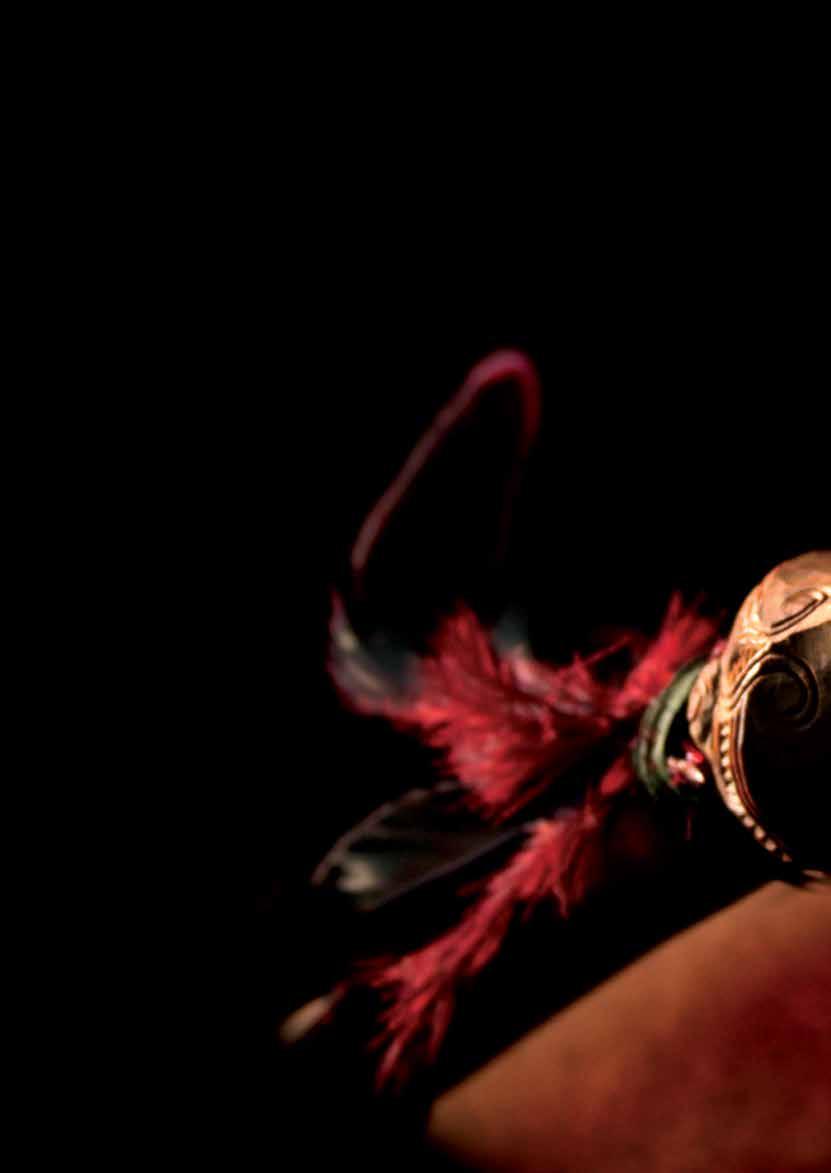
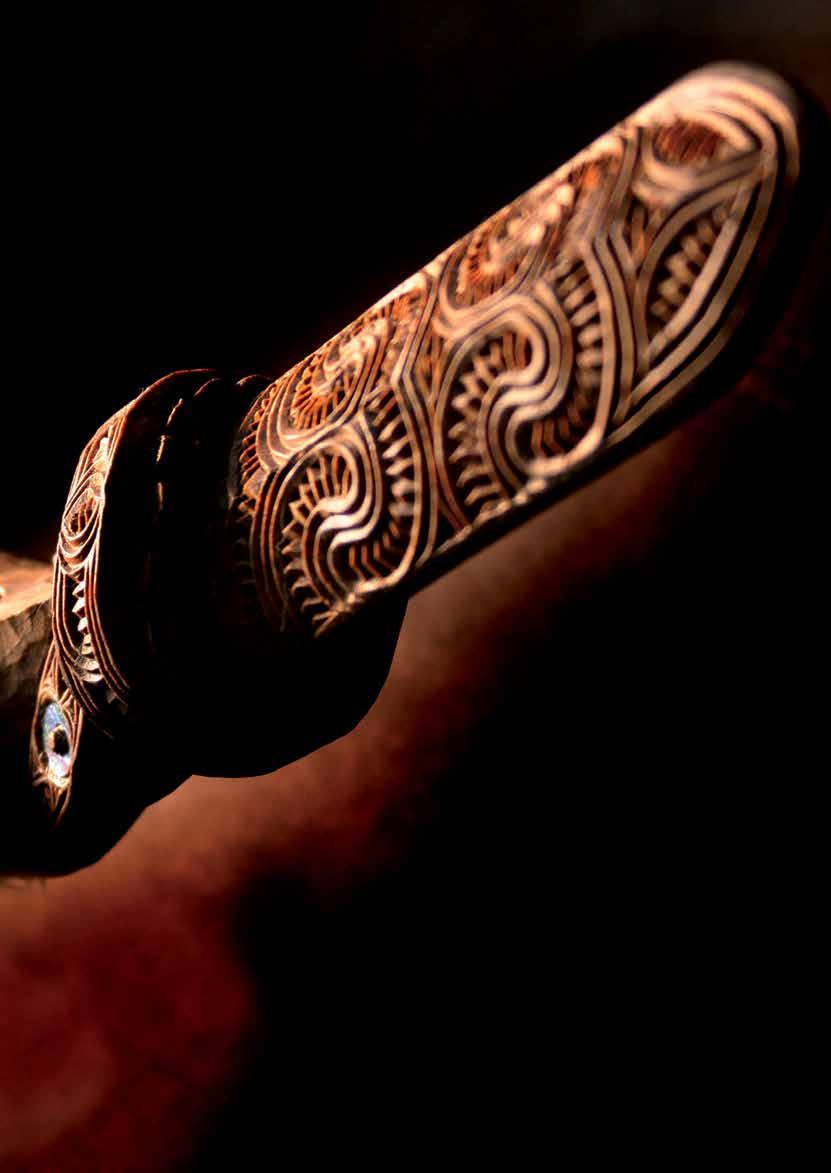
OF COMPREHENSIVE REVENUE AND EXPENSE
for the year ended 31 December 2024
at 31 December 2024
OF CHANGES IN EQUITY
for the year ended 31 December 2024
for the year ended 31 December 2024
OF CASH FLOWS (CONTINUED)
for the year ended 31 December 2024
Reconciliation of surplus to the net cash flow from operating activities
/ (Deficit)
Add/(less) non-cash items:
Add/(less) items classified as investing or financing activities: (Gains)/losses on disposal of property, plant and equipment
(Gains)/losses on disposal of intangible assets
Total items classified as investing or financing activities
Add/(less) movements in working capital items: (Increase)/decrease in
for the year ended 31 December 2024
Reporting Entity
Te Whare Wānanga o Awanuiārangi (Awanuiārangi) is a Wānanga established under section 268 of the Education and Training Act 2020. Awanuiārangi is a Tertiary Education Institution (TEI) that is domiciled and operates in New Zealand. The relevant legislation governing Awanuiārangi's operations includes the Crown Entities Act 2004 and the Education and Training Act 2020.
Awanuiārangi provides tertiary educational and research services for the benefit of the community. It does not operate to make a financial return.
Awanuiārangi includes Te Whare Wānanga o Awanuiārangi and its 50% shareholding in its joint venture, Ngā Āhuatanga o Te Kai Limited. The joint venture is equity accounted into the Awanuiārangi financial statements.
Awanuiārangi has designated itself as a public benefit entity (PBE) for the purposes of complying with generally accepted accounting practice.
The financial statements of Awanuiārangi are for the year ended 31 December 2024, and were authorised for issue by Awanuiārangi on 30 April 2025.
The financial statements have been prepared on a going concern basis, and the accounting policies have been applied consistently throughout the year.
The financial statements of Awanuiārangi have been prepared in accordance with the requirements of the Crown Entities Act 2004 and the Education and Training Act 2020, which include the requirement to comply with generally accepted accounting practice in New Zealand (NZ GAAP).
Awanuiārangi is a Tier 1 entity and the financial statements have been prepared in accordance with PBE Standards. These financial statements comply with PBE Standards.
The financial statements are presented in New Zealand dollars and all values, other than the related party disclosures in Note 18 are rounded to the nearest thousand dollars ($000). Related party transaction disclosures are rounded to the nearest dollar.
Standards issued and not yet effective and not early adopted Standards and amendments issued but not yet effective that have not been early adopted and relevant to the Institute are:
2024 Omnibus Amendments to PBE Standards (amendments to PBE IPSAS 1)
This amendment clarifies the principles for classifying a liability as current or non-current. The amendment is effective for the year ended 31 December 2026.
PBE IFRS 17 establishes principles for the recognition, measurement, presentation, and disclosure of insurance contracts and will replace PBE IFRS 4. This standard is effective for the year ended 31 December 2026.
Awanuiārangi has not yet assessed in detail the impact of these amendments.
Significant accounting policies are included in the notes to which they relate.
Significant accounting policies that do not relate to a specific note are outlined below:
Foreign currency transactions (including those subject to forward foreign exchange contracts) are translated into New Zealand dollars (the functional currency) using the spot exchange rates at the dates of the transactions. Foreign exchange gains and losses resulting from the settlement of such transactions and from the translation at year-end exchange rates of monetary assets and liabilities denominated in foreign currencies are recognised in the surplus or deficit.
All items in the financial statements are stated exclusive of GST, except for receivables and payables, which are presented on a GSTinclusive basis. Where GST is not recoverable as input tax, then it is recognised as part of the related asset or expense.
The net amount of GST recoverable from, or payable to, the Inland Revenue Department (IRD) is included as part of receivables or payables in the statement of financial position.
The net GST paid to, or received from the IRD, including the GST relating to investing and financing activities, is classified as a net operating cash flow in the statement of cash flows.
Commitments and contingencies are disclosed exclusive of GST. Income tax
Awanuiārangi is exempt from income tax. Accordingly, no provision has been made for income tax.
for the year ended 31 December 2024
The budget figures for Awanuiārangi are those approved by the Council at the start of the financial year. The budget figures have been prepared in accordance with GAAP, using accounting policies that are consistent with those adopted by the Council in preparing these financial statements.
In preparing these financial statements, estimates and assumptions have been made concerning the future. These estimates and assumptions might differ from the subsequent actual results. Estimates and assumptions are continually evaluated and are based on historical experience and other factors, including expectations of future events that are believed to be reasonable under the circumstances.
The estimates and assumptions that might have a significant risk of causing a material adjustment to the carrying amounts of assets and liabilities within the next financial year are:
• Estimating the fair value of land, buildings, and infrastructure –refer to Note 10.
• Estimating retirement gratuities – refer to Note 15.
Critical judgements in applying accounting policies
Management has exercised the following critical judgements in applying accounting policies:
• Distinction between revenue and capital contributions – refer to Note 2.
• Research revenue – refer to Note 2.
Accounting Policy
Revenue is measured at fair value. The specific accounting policies for significant revenue items are explained below:
Delivery on the New Zealand Qualifications and Credentials Framework (NZQCF) based funding (previously SAC funding)
Delivery on the NZQCF based funding is Awanuiārangi’s main source of operational funding from the TEC. Awanuiārangi considers this funding to be non-exchange and recognises it as revenue when the course withdrawal date has passed, based on the number of eligible students enrolled in the course at that date and the value of the course.
Domestic student tuition fees are subsidised by government funding and are considered non-exchange. Revenue is recognised when the course withdrawal date has passed, which is when a student is no longer entitled to a refund for withdrawing from the course.
International student tuition fees are accounted for as exchange transactions and recognised as revenue on a course percentage of completion basis. The percentage of completion is measured by reference to the number of days of the course completed as a proportion of the total course days.
Awanuiārangi considers fees-free revenue is non-exchange revenue and recognises revenue when the course withdrawal date for an eligible student has passed. Awanuiārangi has presented funding received for fees-free as part of student fees. This is on the basis that receipts from TEC are for payment on behalf of the student as specified in the relevant funding mechanism.
Performance-Based Research Fund (PBRF)
Awanuiārangi considers PBRF to be non-exchange in nature. PBRF is specifically identified by the TEC as being for a funding period as required by section 425 of the Education and Training Act 2020. Awanuiārangi recognises its confirmed allocation of PBRF funding at the commencement of the specified funding period, which is the same as Awanuiārangi’s financial year. PBRF revenue is measured based on Awanuiārangi’s funding entitlement adjusted for any expected adjustments as part of the final wash-up process. Indicative funding for future periods is not recognised until confirmed for that future period.
For an exchange research contract, revenue is recognised based on measurement of the services performed. Depending on the nature of the transaction, the methods may include:
a. Survey of work performed
b. Services performed to date as a percentage of total services to be performed
c. The proportion that costs incurred to date bear to the estimated total costs of the transaction
Measurement of services performed is measured based on completion of milestones or conditions specified in the research agreement, unless other methods provide a more accurate measurement of services performed.
For a non-exchange research contract, the total funding receivable under the contract is recognised as revenue immediately, unless there are substantive conditions in the contract. If there are substantive conditions, revenue is recognised when the conditions are satisfied. A condition could include the requirement to complete research to the satisfaction of the funder to retain funding or return unspent funds. Revenue for future periods is not recognised where the contract contains substantive termination provisions for failure to comply with the requirements of the contract. Conditions and termination provisions need to be substantive, which is assessed by considering factors such as contract monitoring mechanisms of the funder and the past practice of the funder.
for the year ended 31 December 2024
Other grants received
Other grants are recognised as revenue when they become receivable unless there is an obligation in substance to return the funds if conditions of the grant are not met. If there is such an obligation, the grants are initially recorded as grants received in advance and then recognised as revenue when the conditions of the grant are satisfied.
Donations, bequests, and pledges
Donations and bequests are recognised as an asset and revenue when the right to receive the funding or asset has been established, unless there is an obligation in substance to return the funds if conditions are not met. If there is such an obligation, they are initially recorded as revenue in advance when received and recognised as revenue when the conditions are satisfied. Pledges are not recognised as assets or revenue until the pledged item is received.
Sales of goods
Revenue from sales of goods is recognised when the product is sold to the customer.
Provision of services
Services provided to third parties on commercial terms are recognised as revenue in proportion to the stage of completion at balance date.
Accommodation services
Revenue from the provision of accommodation services is recognised on a percentage completion basis. This is determined by reference to the number of accommodation days used up till balance date as a proportion of the total accommodation days contracted for with the individual.
Interest revenue on financial assets classified as amortised cost or fair value through other comprehensive revenue and expense is accrued using the effective interest method.
The effective interest rate exactly discounts estimated future cash receipts through the expected life of the financial asset to that asset’s net carrying amount. The method applies this rate to the principal outstanding to determine interest revenue each period. This means interest is allocated at a constant rate of return over the expected life of the financial instrument based on the estimated cash flows.
Interest income is recognised by applying the effective interest rate to the gross carrying amount of the financial asset. Interest revenue on financial assets classified as fair value through surplus or deficit is recognised as it accrues.
Dividends are recognised when the right to receive payment has been established.
Distinction between revenue and capital contributions
Most Crown funding received is operational in nature and is provided by the Crown under the authority of an expense appropriation and is recognised as revenue. Where funding is received from the Crown under the authority of a capital appropriation, Awanuiārangi accounts for the funding as a capital contribution directly in equity. Information about capital contributions recognised in equity is disclosed in Note 17.
revenue
Awanuiārangi exercises its judgement in determining whether funding received under a research contract is received in an exchange or non-exchange transaction. In making its judgement, Awanuiārangi considers factors such as the following:
• Whether the funder has substantive rights to the research output. This is a persuasive indicator of exchange or non-exchange.
• How the research funds were obtained. For example, whether through a commercial tender process for specified work or from applying to a more general research funding pool.
• Nature of the funder.
• Specificity of the research brief or contract.
Judgement is often required in determining the timing of revenue recognition for contracts that span a balance date and multi-year research contracts.
Accounting Policy
Superannuation scheme
Employer contributions to KiwiSaver are accounted for as defined contribution schemes and are recognised as an expense in the surplus or deficit when incurred.
No Councillor received compensation or other benefits in relation to cessation (2023: $nil).
Accounting Policy
Borrowing Costs are expensed in the financial year in which they are incurred
5 OTHER EXPENSES
Scholarships awarded by Awanuiārangi that reduce the amount of tuition fees payable by the student are accounted for as an expense and not offset against student tuition fees revenue.
Operating leases
An operating lease is a lease that does not transfer substantially all the risks and rewards incidental to ownership of an asset. Lease payments under an operating lease are recognised as an expense on a straight-line basis over the lease term. Lease incentives received are recognised in the surplus or deficit as a reduction of rental expense over the lease term.
Fees paid to Audit New Zealand for other assurance services in 2024 were for the audit of the declaration to the Ministry of Education on the Performance-Based Research Fund external research income for the year ended 31 December 2024 for a fee of $7,425 (2023: $7,500).
Operating lease commitments as lessee
Awanuiārangi leases property, plant, and equipment in the normal course of its business. Most of these leases have a non-cancellable term of 36 months or less. The commitments for future aggregate minimum lease payments, in relation to non-cancellable operating leases contracted at the balance date but not recognised as liabilities, are as follows:
for the year ended 31 December 2024
The total of minimum future sublease payments expected to be received under non-cancellable subleases at balance date is $nil (2023: $nil). Leases can be renewed at Awanuiārangi’s option, with rents set by reference to current market rates for items of equivalent age and condition.
There are no restrictions placed on Awanuiārangi by any of its leasing arrangements.
Operating leases as lessor
The future aggregate minimum lease payments collectable under non-cancellable operating leases is $nil (2023: $nil).
No contingent rents have been recognised during the year (2023: $nil).
Accounting Policy
Cash and cash equivalents includes cash on hand, deposits held at call with banks, other short-term highly liquid investments with original maturities of three months or less, and bank overdrafts. Bank overdrafts are shown within borrowings in current liabilities in the statement of financial position.
While cash and cash equivalents at the balance date are subject to the expected credit loss requirements of PBE IPSAS 41, no loss allowance has been recognised because the estimated loss allowance for credit losses on cash and cash equivalents is trivial.
Accounting Policy
Short-term receivables are recorded at the amount due, less an allowance for expected credit losses (ECL). Awanuiārangi applies the simplified ECL model for recognising lifetime ECLs for short term receivables.
In measuring ECLs, receivables have been groiuped into student fee receivables, and other receivables and assessed on a collective basis as they possess shared credit risk characteristics. They have then been grouped based on days past due. A provision matrix is then established based on historical credit loss experience, adjusted for forward looking factors specific to the debtors and the economic environment.
Short-term receivables are written off when there is no reasonable expectation of recovery. Indicators that there is no reasonable expectation of recovery include the debtor being in liquidation or the receivable being more than one year overdue.
value
Student fees are due before a course begins or are due upon enrolment if the course has already begun. For courses that span more than one trimester, students can arrange for fees to be paid in instalments. Student fee receivables are non-interest bearing and are generally paid in full by the course start date. Therefore, their carrying value approximates their fair value.
Other receivables are non-interest bearing and are generally settled on 30-day terms. Therefore, the carrying value of other receivables approximates their fair value.
All receivables greater than 30 days in age are considered to be past due.
Assets recognised in non-exchange transactions that are subject to restrictions
Awanuiārangi has entered into a number of research contracts that require the funding be spent in achieving the objectives of the research brief. For some of these contracts, there are no conditions to return the funding should the funding not be spent in achieving the objectives of the research brief. The amount of unspent funding for such contracts included within cash and cash equivalents is $nil (2023: $nil).
for the year ended 31 December 2024
The allowance for credit losses on receivables at balance dates was determined as follows:
31 December 2024
days past due
Accounting
Other financial assets are initially recognised at fair value. They are then classified and subsequently measured under the following categories:
• amortised cost;
• fair value through other comprehensive revenue and expense (FVTOCRE); and
• fair value through surplus and deficit (FVTSD).
Transaction costs are included in the value of the financial asset at initial recognition, unless it has been designated at FVTSD, in which case it is recognised in surplus or deficit.
31 December 2023
The expected credit loss rates for receivables at year end are based on the payment profile of revenue on credit over the previous 2 years at the measurement date and the corresponding historical credit losses experienced for that period. The historical loss rates are adjusted for current and forward-looking macroeconomic factors that might affect the recoverability of receivables. Given the short period of credit risk exposure, the impact of macroeconomic factors is not considered significant.
There have been no changes during the reporting period in the estimation techniques or significant assumptions used in measuring the loss allowance.
Awanuiārangi holds no collateral as security or other credit enhancements over receivables that are either past due or uncollectable.
The movement in the allowance for credit losses on receivables is as follows:
The classification of a financial asset depends on its cash flow characteristics and Awanuiārangi’s management model for managing them.
A financial asset is classified and subsequently measured at amortised cost if it gives rise to cash flows that are ‘solely payments of principal and interest (SPPI)’ on the principal outstanding and is held within a management model whose objective is to collect the contractual cash flows of the asset.
A financial asset is classified and subsequently measured at FVTOCRE if it gives rise to cash flows that are SPPI and held within a management model whose objective is achieved by both collecting contractual cash flows and selling financial assets.
Financial assets that do not meet the criteria to be measured at amortised cost or FVTOCRE are subsequently measured at FVTSD. Surplus funds are invested in New Zealand Government bonds and might be sold prior to maturity for liquidity reasons. Consequently, they are classified at FVTOCRE.
Equity instruments
A financial asset that is an equity instrument is classified at FVTSD, unless the Council elect at initial recognition to designate an equity investment not held for trading as subsequently measured at FVTOCRE.
Unlisted shares are irrevocably designated at fair value through other comprehensive revenue and expense at initial recognition. This measurement basis is considered more appropriate than through surplus or deficit because the investments have been made for longterm strategic purposes rather than to generate a financial return through trading.
Subsequent measurement of financial assets at amortised cost
Financial assets classified at amortised cost are subsequently measured at amortised cost using the effective interest method, less any expected credit losses (ECL). Where applicable, interest accrued is added to the investment balance. Instruments in this category include term deposits and loans to subsidiaries.
for the year ended 31 December 2024
Subsequent measurement of financial assets at FVTOCRE
Financial assets in this category that are debt instruments are subsequently measured at fair value with fair value gains and losses recognised in other comprehensive revenue and expense, except ECL and foreign exchange gains and losses which are recognised in surplus or deficit. When sold, the cumulative gain or loss previously recognised in other comprehensive revenue and expense is reclassified to surplus and deficit. Debt instruments in this category are Awanuiārangi’s New Zealand Government bonds.
Financial assets in this category that are equity instruments designated as FVTOCRE are subsequently measured at fair value with fair value gains and losses recognised in other comprehensive revenue and expense. There is no assessment for impairment when fair value falls below the cost of the investment. When sold, the cumulative gain or loss previously recognised in other comprehensive revenue and expense is transferred to accumulated funds within equity. Awanuiārangi designate into this category all equity investments that are not held for trading as they are strategic investments that are intended to be held for the medium to long-term. Equity instruments in this category are unlisted shares. Interest is presented separately within interest revenue.
Subsequent measurement of financial assets at FVTSD
Financial assets in this category are subsequently measured at fair value with fair value gains and losses recognised in surplus or deficit.
The managed fund is a portfolio of financial assets that are actively traded with the intention of making profits. Therefore, the managed fund is measured at FVTSD.
Interest revenue and dividends recognised from these financial assets are separately presented within revenue.
Included in this category are derivatives and the managed fund portfolio.
Expected credit loss allowance (ECL)
Awanuiārangi recognises an allowance for ECLs for all debt instruments not classified as FVTSD. ECLs are the probabilityweighted estimate of credit losses, measured at the present value of cash shortfalls, which is the difference between the cash flows due to Wānanga in accordance with the contract and the cash flows it expects to receive.
ECLs are discounted at the effective interest rate of the financial asset.
ECLs are recognised in two stages. ECLs are provided for credit losses that result from default events that are possible within the next 12 months (a 12-month ECL). However, if there has been a significant increase in credit risk since initial recognition, the loss allowance is based on losses possible for the remaining life of the financial asset (Lifetime ECL).
When determining whether the credit risk of a financial asset has increased significantly since initial recognition, Awanuiārangi considers reasonable and supportable information that is relevant and available without undue cost or effort. This includes both quantitative and qualitative information and analysis based on Awanuiārangi’s historical experience and informed credit assessment and including forward-looking information.
Awanuiārangi considers a financial asset to be in default when the financial asset is more than 90 days past due. Awanuiārangi may determine a default occurs prior to this if internal or external information indicates the entity is unlikely to pay its credit obligations in full.
for the year ended 31 December 2024
Accounting Policy
A joint venture is a joint arrangement whereby the parties that have joint control of the arrangement have rights to the net assets of the arrangement. Joint control is the agreed sharing of control of an arrangement by way of a binding arrangement, which exists only when decisions about the relevant activities require the unanimous consent of the parties sharing control.
Investments in joint ventures are measured at cost in Awanuiārangi’s parent financial statements.
Critical judgements in applying accounting policies
The Ngā Āhuatanga o Te Kai Limited joint venture company was established in November 2022 between Te Whare Wānanga o Awanuiārangi and Te Puna Ora o Mataatua Charitable Trust. Each of the joint venture parties has a 50% interest in the JV company.
In August 2023 Te Whare Wananga o Awanuiarangi invested $250,000 in a joint venture with Te Puna Ora o Mataatua Charitable Trust. Ngā Āhuatanga O Te Kai Limited is a not for profit company established to recognise the kaupapa of its Shareholders, that being to strengthen the whanau/hapu/iwi base of Mataatua rohe, and Aotearoa, by undertaking kai related research.
The fair value of the Investment in Ngā Āhuatanga O Te Kai Limited is determined using the cost of the original investment in shares less a 50% share of the accumulated losses to 31 December 2024. Therefore the carrying value of the investment approximates its fair value.
Investment in joint venture
Āhuatanga o Te Kai Limited
To undertake kai related research; to grow knowledge and techniques in relation to food sustainability and sovereignty and to generate positive outcomes in the context of nutrition for wellbeing and the community.
Significant restrictions
No dividends or other distributions on any shares shall be paid. If for any financial year Ngā Āhuatanga o Te Kai Limited achieves a positive cashflow and there are profits (including capital profits) in excess of the needs of the business, the Board will apply such excess funds to achieving the charitable objectives of the company.
Accounting Policy
Property, plant, and equipment consists of the following asset classes: owned land , leased land buildings (including infrastructure), leasehold improvements, heritage assets, computer hardware, furniture and fittings, plant and equipment, motor vehicles, library collections and network infrastructure.
Land is measured at fair value. Buildings (including infrastructure), leased land, and heritage assets are measured at fair value less accumulated depreciation and impairment losses. All other asset classes are measured at cost, less accumulated depreciation and impairment losses.
Revaluations
Land and buildings (including infrastructure) are revalued with sufficient regularity to ensure that their carrying amount does not differ materially from fair value and at least every two years.
Revaluation movements are accounted for on a class-of-asset basis. The net revaluation results are credited or debited to other comprehensive revenue and expense and are accumulated to an asset revaluation reserve in equity for that class-of-asset. Where this would result in a debit balance in the asset revaluation reserve, this balance is recognised in the surplus or deficit. Any subsequent increase on revaluation that reverses a previous decrease in value recognised in the surplus or deficit will be recognised first in the surplus or deficit up to the amount previously expensed, and then recognised in other comprehensive revenue and expense.
for the year ended 31 December 2024
The cost of an item of property, plant and equipment is recognised as an asset only when it is probable that future economic benefits or service potential associated with the item will flow to Awanuiārangi and the cost of the item can be measured reliably.
Work in progress is recognised at cost less impairment and is not depreciated
In most instances, an item of property, plant, and equipment is initially recognised at its cost. Where an asset is acquired through a non-exchange transaction, it is recognised at its fair value as at the date of acquisition.
Costs incurred subsequent to initial acquisition are capitalised only when it is probable that future economic benefits or service potential associated with the item will flow to Awanuiārangi and the cost of the item can be measured reliably.
The costs of day-to-day servicing of property, plant, and equipment are recognised in the surplus or deficit as they are incurred.
Gains and losses on disposals are determined by comparing the disposal proceeds with the carrying amount of the asset. Gains and losses on disposals are reported net in the surplus or deficit. When revalued assets are sold, the amounts included in property revaluation reserves in respect of those assets are transferred to general funds within equity.
Depreciation is provided on a straight-line basis on all property, plant, and equipment other than land, at rates that will write off the cost (or valuation) of the assets to their estimated residual values over their useful lives.
The useful lives and associated depreciation rates of major classes of assets have been estimated as follows:
Class of assets
Owned land indefinite Nil
Leased land 100 years 1%
Buildings (including infrastructure) 2 - 100 years 1%-50%
Leasehold improvements 2 - 10 years 10%-50%
Heritage assets 10 - 20 years 5% - 10%
Impairment of property, plant, and equipment
Property, plant, and equipment held at cost that have a finite useful life are reviewed for impairment at each balance date and whenever events or changes in circumstances indicate that the carrying amount may not be recoverable. An impairment loss is recognised for the amount by which the asset’s carrying amount exceeds its recoverable amount. The recoverable amount is the higher of an asset’s fair value less costs to sell and value in use.
If an asset’s carrying amount exceeds its recoverable amount, the asset is considered to be impaired and the carrying amount is written-down to the recoverable amount. For revalued assets, the impairment loss is recognised against the revaluation reserve for that class of asset. Where that results in a debit balance in the revaluation reserve, the balance is recognised in the surplus or deficit.
For assets not carried at a revalued amount, the total impairment loss is recognised in the surplus or deficit.
The reversal of an impairment loss on a revalued asset is credited to other comprehensive revenue and expense and increases the asset revaluation reserve for that class of asset. However, to the extent that an impairment loss for that class of asset was previously recognised in the surplus or deficit, a reversal of an impairment loss is also recognised in the surplus or deficit.
For assets not carried at a revalued amount the reversal of an impairment loss is recognised in the surplus or deficit.
Non-cash-generating assets are those assets that are not held with the primary objective of generating a commercial return.
For non-cash-generating assets, value in use is determined using an approach based on either a depreciated replacement cost approach, a restoration cost approach, or a service units approach. The most appropriate approach used to measure value in use depends on the nature of the impairment and availability of information.
Cash-generating assets are those assets that are held with the primary objective of generating a commercial return.
The value in use for cash-generating assets and cash-generating units is the present value of expected future cash flows.
There have been no material changes to useful lives or depreciation methods from the previous year.
Leasehold improvements are depreciated over the shorter of the unexpired period of the lease or the estimated remaining useful lives of the improvements, whichever is the shorter.
for the year ended 31 December 2024
Critical accounting estimates and assumptions
Estimating the fair value of land, buildings (including infrastructure) and heritage assets
The most recent valuations of land, buildings and infrastructure was performed by an independent registered valuer, RS Valuations Limited. The valuation was effective as at 30 November 2023.
Land
Fair value of the freehold land, using market-based evidence, is determined by reference to its “highest and best use”, that is, the most probable use of the asset that is physically possible, appropriately justified, legally permissible, financially feasible and which results in the highest value.
The fair value of Awanuiārangi's interest as a lessee in the leasehold campus land was determined by estimating the present value of the lessee's beneficial interest in the land, i.e. the difference between an estimated market rental and the actual rental paid by the lessee over the length of the lease term.
Adjustments have been made to the “unencumbered” land value for campus land where there is a designation against the land or the use of the land is restricted because of reserve or endowment status. These adjustments are intended to reflect the negative effect on the value of the land where an owner is unable to use the land more intensely. This adjustment was a reduction of 10% to the leased land.
Restrictions on Awanuiārangi’s ability to sell land would normally not impair the value of the land because Awanuiārangi has operational use of the land for the foreseeable future and will substantially receive the full benefits of outright ownership.
Buildings
Specialised buildings are buildings specifically designed for educational purposes. They are valued using depreciated replacement cost because no reliable market data is available for such buildings.
Depreciated replacement cost is determined using a number of significant assumptions. Significant assumptions used in the 2023 valuation included:
• The replacement costs of the specific assets are adjusted where appropriate for optimisation due to over-design or surplus capacity. The Rongo Awa buildings (previously the Manor Inn) have had an optimisation adjustment applied to reflect the reduction in overall building size should it be replaced. No other optimisation adjustments were made for the most recent valuations.
• The replacement cost is derived from recent construction contracts of modern equivalent assets and actual cost information. The cost depends on the nature of the specific asset valued. Build costs alone have increased from $8,150 to $8,650 per square metre.
• The main buildings on the Whakatane campus are recently completed and there has been no notification of any earthquake prone buildings.
• The remaining useful life of assets is estimated after considering factors such as the age, life, condition of the asset, future maintenance and replacement plans, and experience with similar buildings.
• Straight-line depreciation has been applied in determining the depreciated replacement cost value of the asset.
Non-specialised buildings (for example, residential buildings and office buildings) are valued at fair value using market-based evidence. Significant assumptions in the most recent revaluation (2023) include market values using recent sales of comparable buildings in consultation with a local valuer.
The leased Manukau office building has been valued on a market basis using the capitalised income method from market derived rentals and capitalisation rate. With an increase in the capitalisation rate and lower demand for office space resulting in lower rentals and offering of incentives in the area, the market value of the building is deemed to have decreased.
Infrastructure assets such as roads, car parks, footpaths, underground utilities (for example water supply and sewerage systems), and site drainage have been independently valued at depreciated replacement cost. The significant assumptions applied in determining the depreciated replacement cost of infrastructure assets are similar to those described above for specialised buildings.
A comparison of the revised carrying value of buildings (including infrastructure) valued using depreciated replacement cost and buildings (including infrastructure) valued using market-based evidence is as follows:
The most recent valuations of cultural and heritage assets was performed by an independent valuer, Antique & Art (Valuation Services). The valuation was effective as at 31 August 2020.
for the year ended 31 December 2024
Critical judgements in applying accounting policies
Leased Land
In 2015
Awanuiārangi negotiated a 100 year extension of the lease of the main Whakatane campus land by means of a one-off payment of $1,000,000 to the landlord. This transaction has been treated as a finance lease. The fair value of the land has been capitalised and will be depreciated in equal instalments over the life of the lease.
The legal ownership of land and buildings (including infrastructure) is detailed is follows:
Awanuiārangi is not permitted to pledge the leased asset as security nor can it sublease the land without permission of the lessor. There are also various restrictions in the form of historic designations and endowment encumbrances attached to the lease.
Note 14 provides further information about finance leases.
Under the Education and Training Act 2020, Awanuiārangi is required to obtain consent from the Secretary for Education to dispose of land and buildings. For plant and equipment, there is an asset disposal limit formula, which provides a limit up to which a TEI may dispose of plant and equipment without seeking the approval from the Secretary for Education. Detailed information on the asset disposal rules can be found on the Tertiary Education Commission website.
by Awanuiārangi
Owned by Ngāti Awa Properties Ltd
The net carrying amount of land held under a finance lease is $2,313k (2023: $2,350k). The fair value of the finance lease liability is $nil (2023: $nil).
There were no disposals of property in 2024 that required consent (2023: $nil).
There are also various restrictions in the form of historic designations, reserve, and endowment encumbrances attached to land. Awanuiārangi does not consider it practical to disclose in detail the value of land subject to these restrictions.
There are no tangible assets pledged as security for liabilities (2023: $nil).
for the year ended 31 December 2024
Property, plant and equipment
Movements for each class of property, plant and equipment in 2023 are as follows:
Capital commitments
There were no building contractual commitments as at 31 December 2024 (2023: nil).
Work in progress
Property, plant and equipment in the course of construction consists of the following projects where costs had been incurred but the projects had not been completed at the balance date:
Accounting Policy
Software acquisition and development
Computer software licenses are capitalised on the basis of the costs incurred to acquire and bring to use the specific software where that asset meets the criteria set out in PBE IPSAS 31 - Intangible Assets. SaaS arrangements are assessed against the same criteria and capitalised where the criteria are met, otherwise they are expensed in the period in which they are incurred.
Costs that are directly associated with the development of software for internal use are recognised as an intangible asset. Direct costs include software development employee costs and relevant consultants' fees.
Staff training costs are recognised as an expense when incurred.
Costs associated with maintaining computer software are recognised as an expense when incurred.
Course development costs
Costs that are directly associated with the development of new educational courses are recognised as an intangible asset to the extent that such costs are expected to be recovered. The development costs primarily consist of external consultants used. Capital costs are amortised from the commencement of a particular programme on a straight-line basis over the period of their expected benefit.
for the year ended 31 December 2024
Intellectual property development
Research costs are expensed as incurred in the surplus or deficit. Development costs that are directly attributable to the design, construction, and testing of pre-production or pre-use prototypes and models associated with intellectual property development are recognised as an intangible asset if all the following can be demonstrated:
• It is technically feasible to complete the product so that it will be available for use or sale;
• Management intends to complete the product and use or sell it;
• There is an ability to use or sell the product;
• It can be demonstrated how the product will generate probable future economic benefits;
• Adequate technical, financial, and other resources to complete the development and to use or sell the product are available; and
• The expenditure attributable to the product during its development can be reliably measured.
Other development expenses that do not meet these criteria are recognised as an expense as incurred in the surplus or deficit. Development costs previously recognised as an expense cannot be subsequently recognised as an asset.
Website development
Acquired website licenses are recognised as intangible assets on the basis of the costs incurred to acquire and bring to use. Costs that are directly associated with the development of websites for internal use are recognised as an intangible asset.
Amortisation
The carrying value of an intangible asset with a finite life is amortised on a straight-line basis over its useful life. Amortisation begins when the asset is available for use and ceases at the date that the asset is derecognised. The amortisation charge for each period is recognised in the surplus or deficit.
The useful lives and associated amortisation rates of major classes of intangible assets have been estimated as follows:
There are no restrictions over the title of Awanuiārangi's intangible assets, nor are any intangible assets pledged as security for liabilities (2023: $nil).
During the year intangible assets with a carrying value of $0k were impaired (2023: $0k).
At balance date there were no contractual commitments for the ongoing programme development and software contracts (2023: Nil).
Intangible work in progress consists of the following projects where costs had been incurred but the projects had not been completed at the balance date:
Intangible assets subsequently measured at cost that have an indefinite useful life, or are not yet available for use, are not subject to amortisation and are tested annually for impairment.
For further details refer to the policy for impairment of property, plant, and equipment in Note 10. The same approach applies to the impairment of intangible assets.
for the year ended 31 December 2024
Intangible assets
Movements for each class of intangible asset are as follows:
12 PAYABLES Accounting Policy
payables are recorded at their face value.
Payables are non-interest bearing and are normally settled on 30-day terms. Therefore, the carrying value of creditors and other payables approximates their fair value.
There are advance receipts of $168k in respect of non-exchange transactions with TEC (2023: $1,186k).
for the year ended 31 December 2024
Accounting Policy
Deferred revenue from tuition fees includes both liabilities recognised for domestic student fees received for which the course withdrawal date has not yet passed and for international student fees, which is based on the percentage completion of the course.
Deferred revenue from research contracts includes both liabilities recognised for research funding with unsatisfied conditions (nonexchange contracts) and liabilities for exchange research funding received in excess of costs incurred to date on the required research.
Accounting Policy
A finance lease transfers to the lessee substantially all the risks and rewards incidental to ownership of an asset, whether or not title is eventually transferred. At the start of the lease term, finance leases are recognised as assets and liabilities in the statement of financial position at the lower of the fair value of the leased item or the present value of the minimum lease payments.
The finance charge is charged to the surplus or deficit over the lease period so as to produce a constant periodic rate of interest on the remaining balance of the liability.
The amount recognised as an asset is depreciated over its useful life. If there is no reasonable certainty as to whether Awanuiārangi will obtain ownership at the end of the lease term, the asset is fully depreciated over the shorter of the lease term and its useful life.
Finance leases as lessee
Finance leases can be renewed at Awanuiārangi's option, with rents set by reference to current market rates for items of equivalent age and condition. Awanuiārangi has the option to purchase the asset at the end of the lease term, but it is likely that the option to purchase will not be exercised because the leased assets are usually technologically obsolete at lease expiry.
Awanuiārangi is not permitted to pledge the leased assets as security, nor can it sublease without the permission of the lessor. There are no other restrictions placed on Awanuiārangi by any of the leasing arrangements.
Accounting Policy
Short-term employee entitlements
Employee benefits that are expected to be settled wholly before twelve months after the end of the reporting period in which the employees render the related service are measured based on accrued entitlements at current rates of pay. These include salaries and wages accrued up to balance date, annual leave earned to but not yet taken at balance date, and sick leave.
A liability and an expense are recognised for bonuses where there is a contractual obligation or where there is a past practice that has created a constructive obligation and a reliable estimate of the obligation can be made.
Presentation of employee entitlements
Sick leave, annual leave, and vested long service leave are classified as a current liability. Non-vested long service leave and retirement gratuities expected to be settled within 12 months of balance date are classified as a current liability. All other employee entitlements are classified as a non-current liability.
Contingent Assets
Awanuiārangi has no contingent assets (2023: $nil).
Contingent Liabilities
Awanuiārangi has no contingent liabilities (2023: $nil).
for the year ended 31 December 2024
17 EQUITY
Accounting Policy
Equity is measured as the difference between total assets and total liabilities. Equity is disaggregated and classified into a number of components. The components of equity are:
• general funds;
• revaluation reserves; and
• restricted reserves.
Revaluation reserves
This reserve relates to the revaluation of land, buildings (including infrastructure) and heritage assets to fair value.
Restricted reserves
Restricted reserves are a component of equity representing a particular use to which various parts of equity have been assigned. Reserves may be legally restricted or created by Awanuiārangi. Transfers from these reserves may be made only for certain specified purposes or when certain specified conditions are met.
Included in restricted reserves are unspent funds with restrictions that relate to the delivery of educational services and research by Awanuiārangi. It is not practicable for Awanuiārangi to provide further detailed information about the restrictions.
Capital contributions
Capital contributions received during the year from the Crown were $nil (2023: $nil).
Capital management
Awanuiārangi’s capital is its equity, which comprises retained surpluses and reserves. Equity is represented by net assets. Awanuiārangi is subject to the financial management and accountability provisions of the Education and Training Act 2020. This legislation includes restrictions in relation to disposing of assets or interests in assets, ability to mortgage or otherwise charge assets or interests in assets, granting leases of land or buildings or parts of buildings, and borrowing.
Awanuiārangi manages its revenues, expenses, assets, liabilities, investments, and general financial dealings prudently and in a manner that promotes the current and future interests of the community. Awanuiārangi’s equity is largely managed as a byproduct of managing revenues, expenses, assets, liabilities, investments, and general financial dealings.
The objective of managing Awanuiārangi’s equity is to ensure Awanuiārangi effectively achieves the goals and objectives for which it has been established, promotes the current and future interests of the community, while remaining a going concern.
for the year ended 31 December 2024
Related party disclosures have not been made for transactions with related parties that are:
• within a normal supplier or client/recipient relationship; and
• on terms and conditions no more or less favourable than those that are reasonable to expect that Awanuiārangi would have adopted in dealing with the party at arm’s length in the same circumstances.
Further, transactions with government agencies (for example, government departments and Crown entities) are not disclosed as related party transactions when they are consistent with the normal operating arrangements with TEIs and undertaken on the normal terms and conditions for such transactions.
Key management personnel compensation 2024 2023 Council members
Full-time
Executive Management Team, including the Chief Executive
There were 6 full-time equivalent Executive management team members employed during the year (2023: 5.4).
Each Councillor has been counted as 1 full-time equivalent member. This is consistent with the treatement in the prior year.
There were no events after the balance date.
Financial instrument categories
The carrying amounts of financial assets and liabilities in each of the financial instrument categories are as follows:
liabilities measured at Fair Value (FVTSD)
liabilities measured at amortised cost
for the year ended 31 December 2024
Financial instrument risks
For those instruments recognised at fair value in the statement of financial position, fair values are determined according to the following hierarchy:
• Quoted market price (level 1) – Financial instruments with quoted prices for identical instruments in active markets.
• Valuation techniques using observable inputs (level 2) – Financial instruments with quoted prices for similar instruments in active markets or quoted prices for identical or similar instruments in inactive markets and financial instruments valued using models where all significant inputs are observable.
• Valuation techniques with significant non-observable inputs (level 3) – Financial instruments valued using models where one or more significant inputs are not observable.
The following table analyses the basis of the valuation of classes of financial instruments measured at fair value in the statement of financial position:
Valuation Technique
31 December 2024
Financial instrument risks
The activities of Awanuiārangi expose it to a variety of financial instrument risks, including market risk, credit risk and liquidity risk. Awanuiārangi has policies to manage these risks and seeks to minimise exposure from its financial instruments. These policies do not allow any transactions that are speculative in nature to be entered into.
Market Risk
Price risk
Price risk is the risk that the value of a financial instrument will fluctuate as a result of changes in market prices. The equity portion of Awanuiārangi's managed fund is exposed to price risk. This price risk is managed by diversification of the managed fund portfolio in accordance with the limits set out in Awanuiārangi's investment policy.
Currency risk
Currency risk is the risk that the fair value of future cash flows of a financial instrument will fluctuate due to changes in foreign exchange rates. Awanuiārangi is not exposed to foreign currency risk because it does not deal in foreign exchange instruments.
Fair value interest rate risk
Fair value interest rate risk is the risk that the value of a financial instrument will fluctuate due to changes in market interest rates. Investments issued at fixed rates of interest create exposure to fair value interest rate risk. Awanuiārangi manages its exposure to fair value interest rate risks of term deposits by investing in fixed term interest bearing bank deposits of no more than 12 months duration. Awanuiārangi does not actively manage its fair value interest rate risk of managed funds.
Cash flow interest rate risk is the risk that the cash flows from a financial instrument will fluctuate because of changes in market interest rates. Awanuiārangi's exposure to changes in interest rates relates primarily to Awanuiārangi's on-call bank deposits.
Credit risk is the risk that a third party will default on its obligation to Awanuiārangi, causing it to incur a loss.
In the normal course of business, Awanuiārangi is exposed to credit risk from cash and term deposits with banks, student debtors and other receivables. For each of these, the maximum credit exposure is best represented by the carrying amount in the statement of financial position.
Due to the timing of its cash inflows and outflows, surplus cash is invested into term deposits which give rise to credit risk.
Awanuiārangi limits the amount of credit exposure by limiting the amount that can be invested in any one institution to 50% of total investments held. Awanuiārangi invests funds only with registered banks that have a Standard and Poor’s credit rating of at least AA-. Awanuiārangi has experienced no defaults of interest or principal payments for term deposits.
Awanuiārangi holds no collateral or other credit enhancements for financial instruments that give rise to credit risk.
Credit risk exposure by credit risk rating grades
The gross carrying amount of financial assets, excluding receivables, by credit rating is provided below by
for the year ended 31 December 2024
Management of liquidity risk
Liquidity risk is the risk that Awanuiārangi will encounter difficulty raising liquid funds to meet commitments as they fall due. Prudent liquidity risk management implies maintaining sufficient cash, and the availability of funding through an adequate amount of committed credit facilities. Awanuiārangi aims to maintain flexibility in funding by keeping committed credit lines available.
Awanuiārangi manages liquidity risk by continuously monitoring forecast and actual cash flow requirements.
Contractual maturity analysis of financial liabilities
The table below analyses financial liabilities into relevant maturity groupings based on the remaining period at the balance date to the contractual maturity date. The amounts disclosed are the undiscounted contractual cash flows.
The following table illustrates the potential effect on the surplus or deficit and equity (excluding general funds) for reasonably possible market movements, with all other variables held constant, based on the financial instrument exposures of Awanuiārangi at balance date:
Explanation of interest rate risk sensitivity
The interest rate sensitivity is based on a reasonable possible movement in interest rates, with all other variables held constant, measured on a basis points (bps) movement. For example, a decrease in 50 bps is equivalent to a decrease in interest rates of 0.5%.
Other financial assets includes the fixed interest and cash portion of the managed fund, and the term deposits which are subject to interest rate risk.
Explanation of other price risk sensitivity
Other financial assets comprises the equity component of the managed fund which is subject to price risk.
The sensitivity for the managed fund has been calculated based on a -10%/+10% (2023: -10%/+10%) movement in the quoted bid price at year end for all of the equity investments held by the fund.
for the year ended 31 December 2024
Explanations for major variations against the budget information set at the start of the financial year are as follows:
Statement of comprehensive revenue and expense
Government grants
Government grant revenue recognised was $2.1 million lower than budgeted due to enrolments being lower than budgeted, and constraints on TEC funding to over deliver EFTS above the investment plan.
Student-derived revenue
Tuition fee revenue was $0.5 million less than budgeted. This variance arose because of withdrawals throughout the year. plus a change in the mix of programmes that were taken up, with relatively more students enrolled on the fee-free instead of the fee-bearing programmes.
Personnel expenses
Personnel expenses were $1.7 million less than budget due to unfilled vacancies and lower enrolments.
Other expenses
Other expenses were $3.1 million less than budgeted due to fewer enrolments which resulted in lower course-related expenses and less travelling.
Statement of financial position
Receivables
Receivables were $2.3 million above budget mainly due to a large government research contract being invoiced at year end. We also experienced ongoing challenges due to the current cost of living crisis.
Some of this debt also arises because of the timing difference between revenue recognised by Awanuiārangi and cash received from TEC.
Other Financial Assets
Other Financial assets, as represented by short term (3 to 12 month) term deposits, were $6.7 million above budget due to the deficit being less than budget and the under spend on capital expenditure.
Property, plant and equipment
Property, plant and equipment were $8.5 million below budget due to lower than anticipated capital expenditure including the deferral of a $4 million building development project at the Whakatāne campus.
General funds
General funds were $1.1 million more than budget due to a lower operating deficit than budgeted.
Total equity was $1 million higher than budgeted. The explanations provided above for general funds and the revaluation reserves explain this variance.
Statement of cash flows
Receipts from government grants
Receipts from Government Grants were $5.1 million less than budgeted due to fewer enrolments being achieved in the year and tauira withdrawals throughout the year.
Payments to suppliers
Payments to suppliers were $8 million less than budgeted due reduced enrolment and captial expenditure underspend.
Net movements in term deposits
The net of acquisition and receipt of term deposits throughout the year were $7.8 million more than budgeted due in part to the timing of payments from the TEC.
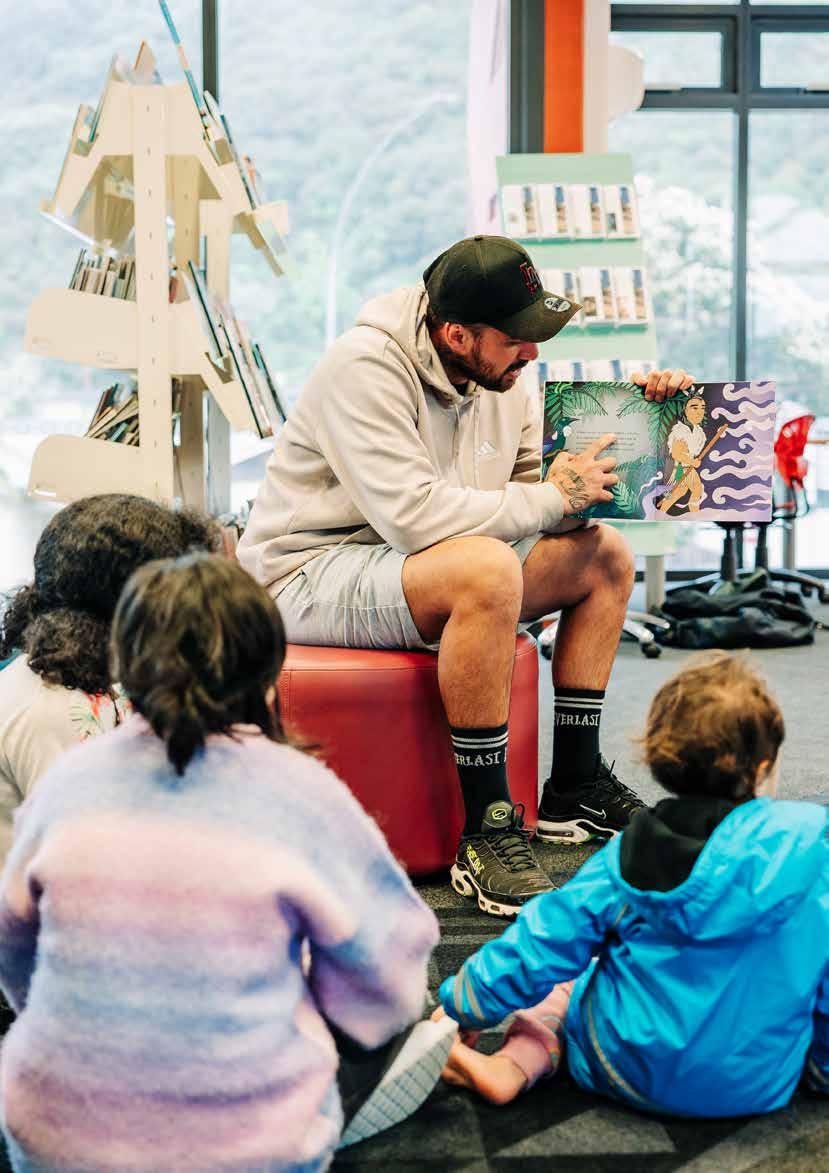

To the readers of the financial statements and the statement of service performance of Te Whare Wānanga o Awanuiārangi for the year ended 31 December 2024
The Auditor-General is the auditor of Te Whare Wānanga o Awanuiārangi (Awanuiārangi). The Auditor-General has appointed me, David Walker, using the staff and resources of Audit New Zealand, to carry out the audit of the financial statements and statement of service performance of Awanuiārangi on his behalf.
We have audited:
• the financial statements of Awanuiārangi on pages 102 to 126, that comprise the statement of financial position as at 31 December 2024, the statement of comprehensive revenue and expense, statement of changes in equity and statement of cash flows for the year ended on that date and the notes to the financial statements that include accounting policies and other explanatory information; and
• the statement of service performance of Awanuiārangi on pages 76 to 99.
In our opinion:
• the financial statements of Awanuiārangi:
• present fairly, in all material respects:
- its financial position as at 31 December 2024; and
- its financial performance and cash flows for the year then ended; and
• comply with generally accepted accounting practice in New Zealand in accordance with Public Benefit Entity Reporting Standards; and
• the statement of service performance of Awanuiārangi:
• presents fairly, in all material respects, appropriate and meaningful service performance information in accordance with the measurement bases or evaluation methods of Awanuiārangi, compared with the forecast outcomes included in the investment plan for the year ended 31 December 2024; and
• complies with generally accepted accounting practice in New Zealand in accordance with Public Benefit Entity Reporting Standards.
Our audit was completed on 30 April 2025. This is the date at which our opinion is expressed.
The basis for our opinion is explained below. In addition, we outline the responsibilities of the Council and our responsibilities relating to the financial statements and the statement of service performance, we comment on other information, and we explain our independence.
Basis for our opinion
We carried out our audit in accordance with the Auditor-General’s Auditing Standards, which incorporate the Professional and Ethical Standards and the International Standards on Auditing (New Zealand)
issued by the New Zealand Auditing and Assurance Standards Board. Our responsibilities under those standards are further described in the Responsibilities of the auditor section of our report.
We have fulfilled our responsibilities in accordance with the AuditorGeneral’s Auditing Standards.
We believe that the audit evidence we have obtained is sufficient and appropriate to provide a basis for our opinion..
The Council is responsible on behalf of Awanuiārangi for preparing financial statements that are fairly presented and that comply with generally accepted accounting practice in New Zealand.
The Council is also responsible on behalf of Awanuiārangi for preparing a statement of service performance that is fairly presented and that complies with generally accepted accounting practice in New Zealand. The statement of service performance must describe the performance of Awanuiārangi as compared with the proposed outcomes described in its investment plan. The investment plan is prepared in terms of the requirements of the Education and Training Act 2020 and the contents requirements of Notice 2024, issued by the Tertiary Education Commission. The contents include proposed outcomes in relation to the tertiary education programmes and activities for which funding has been received, and the performance indicators that will be used to measure whether those outcomes have been achieved.
The Council is responsible for such internal control as it determines is necessary to enable it to prepare financial statements and a statement of service performance that are free from material misstatement, whether due to fraud or error.
In preparing the financial statements, the Council is responsible on behalf of Awanuiārangi for assessing the ability of Awanuiārangi to continue as a going concern. The Council is also responsible for disclosing, as applicable, matters related to going concern and using the going concern basis of accounting, unless the Council intends to liquidate Awanuiārangi or to cease operations, or has no realistic alternative but to do so.
The responsibilities of the Council arise from the Education and Training Act 2020 and the Crown Entities Act 2004.
Our objectives are to obtain reasonable assurance about whether the financial statements and the statement of service performance, as a whole, are free from material misstatement, whether due to fraud or error, and to issue an auditor’s report that includes our opinion.
Reasonable assurance is a high level of assurance, but is not a guarantee that an audit carried out in accordance with the Auditor-General’s Auditing Standards will always detect a material misstatement when it exists. Misstatements are differences or omissions of amounts or disclosures, and can arise from fraud or error. Misstatements are considered material if, individually or in
the aggregate, they could reasonably be expected to influence the decisions of readers taken on the basis of these financial statements and statement of service performance.
For the budget information reported in the financial statements and the statement of service performance, our procedures were limited to checking that the information agreed to:
• the Council approved budget for the financial statements; and
• the investment plan for the statement of service performance.
We did not evaluate the security and controls over the electronic publication of the financial statements and the statement of service performance.
As part of an audit in accordance with the Auditor-General’s Auditing Standards, we exercise professional judgement and maintain professional scepticism throughout the audit. Also:
• We identify and assess the risks of material misstatement of the financial statements and the statement of service performance, whether due to fraud or error, design and perform audit procedures responsive to those risks, and obtain audit evidence that is sufficient and appropriate to provide a basis for our opinion. The risk of not detecting a material misstatement resulting from fraud is higher than for one resulting from error, as fraud may involve collusion, forgery, intentional omissions, misrepresentations, or the override of internal control.
• We obtain an understanding of internal control relevant to the audit in order to design audit procedures that are appropriate in the circumstances, but not for the purpose of expressing an opinion on the effectiveness of the internal controls implemented by the Council.
• We evaluate the appropriateness of accounting policies used and the reasonableness of accounting estimates and related disclosures made by the Council.
• We evaluate the appropriateness and meaningfulness of the reported performance information, and the measurement bases or evaluation methods, in accordance with the investment plan of Awanuiārangi and in accordance with generally accepted accounting practice in New Zealand.
• We conclude on the appropriateness of the use of the going concern basis of accounting by the Council and, based on the audit evidence obtained, whether a material uncertainty exists related to events or conditions that may cast significant doubt on the ability of Awanuiārangi to continue as a going concern. If we conclude that a material uncertainty exists, we are required to draw attention in our auditor’s report to the related disclosures in the financial statements or, if such disclosures are inadequate, to modify our opinion. Our conclusions are based on the audit evidence obtained up to the date of our auditor’s report. However, future events or conditions may cause Awanuiārangi to cease to continue as a going concern.

We evaluate the overall presentation, structure and content of the financial statements and the statement of service performance, including the disclosures, and whether the financial statements and the statement of service performance represent the underlying transactions and events in a manner that achieves fair presentation.
We communicate with the Council regarding, among other matters, the planned scope and timing of the audit and significant audit findings, including any significant deficiencies in internal control that we identify during our audit.
Our responsibilities arise from the Public Audit Act 2001.
The Council is responsible for the other information. The other information comprises the information included on pages 1 to 75 but does not include the financial statements and the statement of service performance, and our auditor’s report thereon.
Our opinion on the financial statements and the statement of service performance does not cover the other information and we do not express any form of audit opinion or assurance conclusion thereon.
In connection with our audit of the financial statements and the statement of service performance, our responsibility is to read the other information. In doing so, we consider whether the other information is materially inconsistent with the financial statements and the statement of service performance, or our knowledge obtained in the audit, or otherwise appears to be materially misstated. If, based on our work, we conclude that there is a material misstatement of this other information, we are required to report that fact. We have nothing to report in this regard.
We are independent of Awanuiārangi in accordance with the independence requirements of the Auditor-General’s Auditing Standards, which incorporate the independence requirements of Professional and Ethical Standard 1 International Code of Ethics for Assurance Practitioners (including International Independence Standards) (New Zealand) (PES 1) issued by the New Zealand Auditing and Assurance Standards Board.
In addition to the audit, we have carried out the performance-based research funding (PBRF) audit engagement, which is compatible with those independence requirements. Other than the PBRF audit and this engagement, we have no relationship with or interests in Awanuiārangi.
David Walker
Audit New Zealand
On behalf of the Auditor-General Auckland, New Zealand
